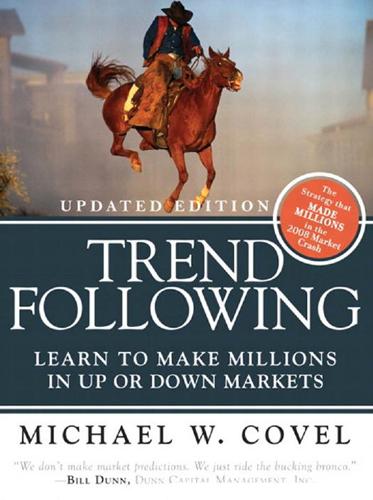
Trend Following: How Great Traders Make Millions in Up or Down Markets
by
Michael W. Covel
Published 19 Mar 2007
The markets have always overflowed with Holy Grails—those systems, strategies, secret formulas, and interpretations of fundamentals that promise riches to whomever trades with them. Today, in 2009, it is no different. Buy and Hold After the stock market bubble burst in spring 2000 and after the crash of October and November 2008, the concept of buy and hold as a trading strategy should have been shown as the failure it is once and for all. Yet, I doubt that has happened. Investors still obey mantras such as, “Buy and hold for the long term.” “Stay the course.” “Buy the dips.” “Never surrender.” Buy-and-hold mantras are junk because they never answer the basic questions: Buy how much of what? Buy at what price?
…
Wall Street compounds the problem with analysts constantly screaming, “Buy” or with their nearly fanatical pitching of buy and hold as a legitimate trading 231 Another psychological aspect that drives me to use timing techniques on my portfolio is understanding myself well enough to know that I could never sit in a buy and hold strategy for two years during 1973 and 1974, watch my portfolio go down 48 percent and do nothing, hoping it would come back someday. Tom Basso 232 Trend Following (Updated Edition): Learn to Make Millions in Up or Down Markets strategy. It’s not legitimate. It’s a criminal, inane approach to trying to make money. In Buy and Hold: A Different Perspective, Richard Rudy explains how we always seek simple solutions to intricate problems.
…
We did not see the NASDAQ break permanently free of the 1973–1974 bear market until April 1980. Buy and hold did nothing for investors from December 1972 through March 1980. Investors would have made more money during this period in a 3 percent savings account. History repeated itself with the more recent 77 percent drop in the NASDAQ from 2000–2002. Now we have October and November 2008, which makes the dot-com bubble look like a picnic with Grandma. Making matters worse is that a pure buy-and-hold strategy during an extended drop in the market makes the recovery back to breakeven difficult (if not impossible). The “buy-and-hold” investor has been led to believe (perhaps by an industry with a powerful conflict of interest) that if he has tremendous patience and discipline and “stays with it,” he will make a good long-term return.

A Random Walk Down Wall Street: The Time-Tested Strategy for Successful Investing
by
Burton G. Malkiel
Published 10 Jan 2011
Obviously, if both groups got better in the same period of time, the drug should not be given the credit, even if the patients did recover. In the stock-market experiments, the placebo with which the technical strategies are compared is the buy-and-hold strategy. Technical schemes often do make profits for their users, but so does a buy-and-hold strategy. Indeed, as we shall see later, a simple buy-and-hold strategy using a portfolio consisting of all the stocks in a broad stock-market index has provided investors with an average annual rate of return of almost 10 percent over the past eighty years. Only if technical schemes produce better returns than the market can they be judged effective.
…
If past prices contain little or no useful information for the prediction of future prices, there is no point in following any technical trading rule for the timing of purchases or sales. A simple policy of buying and holding will be at least as good as any technical procedure. Discontinue your subscriptions to worthless technical services, and eschew brokers who read charts and are continually recommending trades. There is another major advantage to a buy-and-hold strategy. Buying and selling, to the extent that it is profitable at all, tends to generate capital gains, which are subject to tax. Buying and holding enables you to postpone or avoid gains taxes. By following any technical strategy, you are likely to realize short-term capital gains and pay larger taxes (as well as paying them sooner) than you would under a buy-and-hold strategy.
…
THREE GIANT STEPS DOWN WALL STREET The No-Brainer Step: Investing in Index Funds The Index-Fund Solution: A Summary A Broader Definition of Indexing A Specific Index-Fund Portfolio ETFs and the Tax-Managed Index Fund The Do-It-Yourself Step: Potentially Useful Stock-Picking Rules Rule 1: Confine stock purchases to companies that appear able to sustain above-average earnings growth for at least five years Rule 2: Never pay more for a stock than can reasonably be justified by a firm foundation of value Rule 3: It helps to buy stocks with the kinds of stories of anticipated growth on which investors can build castles in the air Rule 4: Trade as little as possible The Substitute-Player Step: Hiring a Professional Wall Street Walker The Morningstar Mutual-Fund Information Service The Malkiel Step A Paradox Some Last Reflections on Our Walk A Final Word A Random Walker’s Address Book and Reference Guide to Mutual Funds PREFACE IT HAS NOW been forty years since I began writing the first edition of A Random Walk Down Wall Street. The message of the original edition was a very simple one: Investors would be far better off buying and holding an index fund than attempting to buy and sell individual securities or actively managed mutual funds. I boldly stated that buying and holding all the stocks in a broad stock-market average was likely to outperform professionally managed funds whose high expense charges and large trading costs detract substantially from investment returns. Now, forty years later, I believe even more strongly in that original thesis, and there’s more than a six-figure gain to prove it.
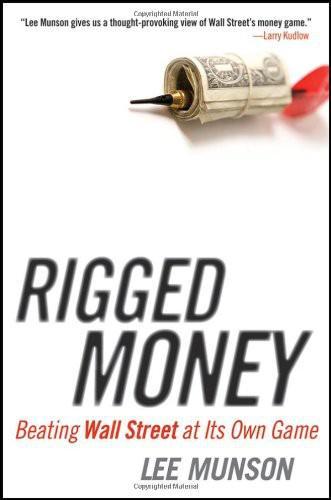
Rigged Money: Beating Wall Street at Its Own Game
by
Lee Munson
Published 6 Dec 2011
Of Thought, Part Two Wall Street: The Set Up, and Part Three Surviving the Rigged Game. Old school is just that—ideas that are past their prime. But is it that simple? The very idea of buying and holding something for a long period of time seems reckless and without any real thought. I look at two different companies, the very first was publicly traded, and one of the best performing of the last 40 years. You would think the incredible returns would prove a buy-and-hold approach. Hindsight identifies a needle in a haystack. But it doesn’t help you today going forward. Buy and hold is a phrase that has very little actual meaning and doesn’t describe any type of investment philosophy as much as a dogma or sales pitch.
…
Let’s leave that to shows like NOVA or to Hollywood. It’s more fun and cool to watch years later when we see how far off we were. The question is not whether to buy and hold. By getting you to ask if you should buy and hold, Wall Street has tricked you into thinking about it as if it is a strategy. No reasonable person would bet that anything is a sure thing for 50 years, so we need to start off with the first insight on Wall Street: Buy and hold is dead. But the truth is, it never really existed. I think the first person to say this was a stockbroker. Wall Street manufactures publicly traded securities for people to consume.
…
If there is no collaboration on tax or legal strategies, it is your first sign that your adviser is not comfortable explaining his or her ideas to other professionals. This is not a good sign. Buy-and-Hold Strategy You will either get no attention or too much attention. The buy-and-hold investor is unwanted unless directed to generate some form of revenue. Usually this is in the form of convincing the investor that some stock is wrong, and must be replaced. If you want to buy and hold, please do it yourself and don’t ask anyone on Wall Street for help. This includes me, and your next-door neighbor who is a stockbroker. Really, we make no money and what can you tell someone who wants you to look at their portfolio and tell them all of their initial ideas are great and not touch them?
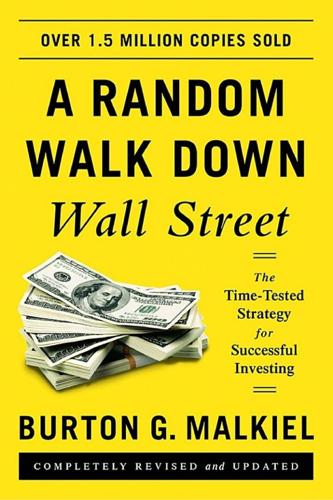
A Random Walk Down Wall Street: The Time-Tested Strategy for Successful Investing (Eleventh Edition)
by
Burton G. Malkiel
Published 5 Jan 2015
Obviously, if both groups got better in the same period of time, the drug should not be given the credit, even if the patients did recover. In the stock-market experiments, the placebo with which the technical strategies are compared is the buy-and-hold strategy. Technical schemes often do make profits for their users, but so does a buy-and-hold strategy. Indeed, as we shall see later, a simple buy-and-hold strategy using a portfolio consisting of all the stocks in a broad stock-market index has provided investors with an average annual rate of return of about 10 percent over the past eighty years. Only if technical schemes produce better returns than the market can they be judged effective.
…
If past prices contain little or no useful information for the prediction of future prices, there is no point in following any technical trading rule for the timing of purchases or sales. A simple policy of buying and holding will be at least as good as any technical procedure. Moreover, buying and selling, to the extent that it is profitable at all, tends to generate capital gains, which are subject to tax. By following any technical strategy, you are likely to realize short-term capital gains and pay larger taxes (as well as paying them sooner) than you would under a buy-and-hold strategy. Thus, simply buying and holding a diversified portfolio suited to your objectives will enable you to save on investment expense, brokerage charges, and taxes.
…
THREE GIANT STEPS DOWN WALL STREET The No-Brainer Step: Investing in Index Funds The Index-Fund Solution: A Summary A Broader Definition of Indexing A Specific Index-Fund Portfolio ETFs and Taxes The Do-It-Yourself Step: Potentially Useful Stock-Picking Rules Rule 1: Confine stock purchases to companies that appear able to sustain above-average earnings growth for at least five years Rule 2: Never pay more for a stock than can reasonably be justified by a firm foundation of value Rule 3: It helps to buy stocks with the kinds of stories of anticipated growth on which investors can build castles in the air Rule 4: Trade as little as possible The Substitute-Player Step: Hiring a Professional Wall Street Walker The Morningstar Mutual-Fund Information Service The Malkiel Step A Paradox Investment Advisers Some Last Reflections on Our Walk A Final Word A Random Walker’s Address Book and Reference Guide to Mutual Funds and ETFs Acknowledgments from Earlier Editions Index PREFACE IT HAS NOW been over forty years since the first edition of A Random Walk Down Wall Street. The message of the original edition was a very simple one: Investors would be far better off buying and holding an index fund than attempting to buy and sell individual securities or actively managed mutual funds. I boldly stated that buying and holding all the stocks in a broad stock-market average was likely to outperform professionally managed funds whose high expense charges and large trading costs detract substantially from investment returns. Now, over forty years later, I believe even more strongly in that original thesis, and there’s more than a six-figure gain to prove it.
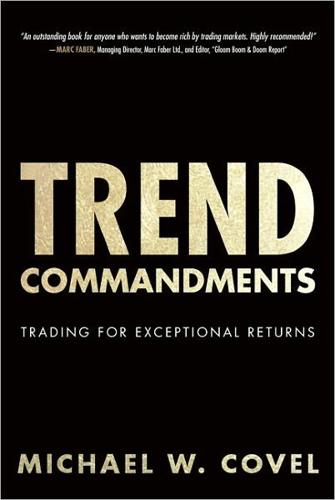
Trend Commandments: Trading for Exceptional Returns
by
Michael W. Covel
Published 14 Jun 2011
Most hedge funds have terrible strategy: They are long only on leveraged stocks. That’s it. Not as sexy as the press makes it. Of course, it all depends, and some hedge funds do make a killing. Usually, they are of the systematic trend following variety. Long Only: Long only means you make one bet. You bet that the market will always go up. Buy and Hold: Buy and hold (hope) is the same as long only. Index Investing: You buy the S&P 500 Index and whatever it does is the return you get. Value Investing: Attempts to use fundamentals to uncover undervalued stocks. The belief is you are buying cheap or low (terms that can mean anything to anyone). When that doesn’t work out, you call the government and ask for a bailout.
…
Any reason will do.1 Buy and Hope Cosmetic and financial services are strikingly similar. They both sell hope. For instance, after the stock market bubble burst in spring 2000 and after the crash of October 2008, the concept of buy and hold as a strategy should have died a stake-to-the-heart death. Despite everything that should have been learned, most still follow this strategy. Stay the course. Buy the dips. Never surrender…. Buy and hold mantras are junk science because you never answer the basic questions: “Buy how much of what?” “Buy at what price?” “Hold for how long?” Consider the Nasdaq market crash of 1973–1974. The Nasdaq reached its high peak in December 1972.
…
It then dropped by nearly 60 percent, hitting rock bottom in September 1974. The Nasdaq did not break free of the 1973–1974 bear market until April 1980. Buy and hold did nothing from December 1972 through March 1980. Your golden years happened during the 1970s—tough luck. You would have made more money during this period in a 3-percent savings account. Of course, history repeated itself with the more recent 70+ percent drop in the Nasdaq from 2000–2009. The buy and hold investor has been led to believe, by an industry with a powerful conflict of interest, that if you have tremendous patience and discipline and stick with it, you will make money.

A Wealth of Common Sense: Why Simplicity Trumps Complexity in Any Investment Plan
by
Ben Carlson
Published 14 May 2015
Number two was to find the intermediate-term trends in sectors and industries and ride them before the rest of the market discovered them. Finally, number three was to be a buy and hold investor for the very long-term. What was interesting about this presentation was that he discussed the buy and hold strategy as if it were a mythical creature that could only be seen in a fairy tale. He flippantly said, “Sure, you could do very well with a buy and hold strategy but what portfolio manager has the leeway to be able to pull that off in today's environment? No investors have that kind of patience.” This was crazy to me, but for the majority of investors that this portfolio manager pitched his strategy to, it was probably true.
…
He was basically saying that none of his clients or prospective clients would give the fund a wide enough berth to pull off a buy and hold strategy because there would of course be periods where it wouldn't work. And his fund gave the apparent illusion of increasing the odds of improving upon this—even though it was probably just that, an illusion. This isn't to say that buy and hold is a perfect strategy by any means. It's not. No strategy is perfect. But the way that this professional money manager dismissed a long-term approach simply because of impatient investors was difficult to grasp. Just because something is hard doesn't mean you shouldn't do it. The problem with a buy and hold strategy is that for it to work the way it's supposed to, you have to do both the buying and the holding during a market crash.
…
Predictably, they found that most investors poured money into the markets after large gains and pulled money out after sustaining losses—a buy high, sell low debacle of a strategy. They then compared these return-chasing fund flows to a simple buy and hold strategy over seven year windows throughout the period. They found that the buy and hold strategy outperformed the return-chasing strategy by up to 5 percent per year. That means in the seven-year time frames they studied, the total return difference was as high as 40 percent in all.12 Again, buy and hold has its flaws. Nothing works all the time or shields investors from losses. But when compared against typical investor behavior, it's not even a contest.

The Oil Factor: Protect Yourself-and Profit-from the Coming Energy Crisis
by
Stephen Leeb
and
Donna Leeb
Published 12 Feb 2004
Suppose, for instance, that during the same thirty-year period you got out of stocks whenever the year-over-year rise in oil prices was 80 percent or greater. You got back into stocks whenever the year-over-year change fell to 20 percent or less. In evaluating such rules, you typically use a buy-and-hold strategy as your benchmark. We’ll make this comparison easy: we’ll compare buying and holding the S&P 500 during those thirty years with buying the S&P 500 only when the signal from oil was favorable and selling whenever the signal was unfavorable. When you sell, we’ll assume you put your money into T-bills or some equivalent short-term money market instrument.
…
These offer essential protection against the inevitable periods of recessionary jitters that arise during inflationary times. Suspending Buy and Hold Some investors follow their portfolio’s ups and downs as avidly as a dog eyeing a piece of steak held in its trainer’s hand. They have their broker’s number on speed dial and are ready and willing to buy or sell at a moment’s notice in an effort to maximize their gains. Other investors by temperament or training have absorbed the notion that you should buy and hold for the long term. When pressed, they point to studies that show that over time stocks always go up, plus they hate paying brokers’ commissions.
…
Investments that seem to be on track when inflation is in the driver’s seat may suddenly tank when deflationary fears erupt, and vice versa. Moreover, in contrast to the recent past, you won’t be able to solve the problem by simply buying a representative index of seemingly safe, conservative stocks, for these are exactly the stocks that will lose ground to inflation. In addition, in the years ahead, a buy-and-hold strategy won’t do. If you buy the right stocks, those that tap into the prevailing economic winds, you’ll make good gains. But to hold on to those gains, you will need to be more proactive—to be willing to shift into inflation beneficiaries as inflation takes over and into deflation hedges when deflation seems the main threat.

How to Predict the Unpredictable
by
William Poundstone
I do not chart that because the line would hug the axis so closely as to be indistinguishable from it. A buy-and-hold stock investor in the S&P 500 and its precursor companies would have turned $1,000 into about $2,932,653. An investor using the PE momentum system to switch between stocks and bonds would have realized $23,836,362. That’s over 8 times the wealth of a buy-and-hold investor. Nobody invests for 132 years. Let’s look at something a little easier to relate to, the twenty years from January 1993 to January 2013. This time we start with $1,000 in 1993. A bond investment would have grown to $1,617 in real terms. A buy-and-hold stock investment would have risen to $3,173.
…
If that doesn’t sound like anything special, take a look at the chart below. It shows the (hypothetical!) growth of a $1,000 portfolio invested since 1881. A buy-and-hold investment in the S&P stocks would have grown to an inflation-adjusted $2,932,724. A buy-low, sell-high portfolio, with PE limit values of 13 and 28, would have grown to $5,239,915. The return is only half the story. Look at how smooth the upper line is, compared to buy-and-hold, over the past twenty years. A PE-directed investor would have sold out of stocks in January 1997, sparing herself a couple of agonizing crashes. She would have been in safe, steady fixed-income investments through January 2013.
…
That’s one demonstration that stocks do not always outperform bonds over fairly long periods. The dotted line labeled “Capitulator” represents the possible fate of someone who considered himself a buy-and-hold investor but who was spooked by the second big plunge in a decade. Exasperated by weeks of declines, the capitulator threw in the towel. He sold, vowing never to invest in stocks again. The capitulating investor was lucky enough to sell somewhere above the very bottom. Still, as the dotted line shows, the capitulator ended up with less than the strict buy-and-hold investor. This is the behavioral penalty. Investors have been told that the booms and busts of recent years are unprecedented.

Stocks for the Long Run, 4th Edition: The Definitive Guide to Financial Market Returns & Long Term Investment Strategies
by
Jeremy J. Siegel
Published 18 Dec 2007
Switching returns are defined as the returns to an investor who switches from stocks to bills a given number of months before (or after, if his or her predictions are not accurate) a business cycle peak and switches back to stocks a given num- CHAPTER 12 Stocks and the Business Cycle 215 ber of months before (or after) a business cycle trough. Buy-and-hold returns are defined as the returns from holding the market through the entire business cycle. Excess returns are defined as switching returns minus the returns from the buy-and-hold strategy.7 Over the entire period from 1802 through 2006, the excess returns are minimal over a buy-and-hold strategy if investors switch into bills exactly at the business cycle peak and into stocks exactly at the business cycle trough. In fact, investors switching into bills just one month after the business cycle peak and back into stocks just one month after the business cycle trough would have lost 0.6 percent per year compared to the benchmark buy-and-hold strategy.
…
The maximum excess return of 4.8 percent per year is obtained by investing in bills four months before the business cycle peaks and in stocks four months before the business cycle troughs. The strategy of switching between bills and stocks gains almost 30 basis points (30⁄100 of a 7 The returns of the buy-and-hold strategy are adjusted to reflect the same level of market risk as the buy-and-hold strategy. TABLE 12–4 Switching Returns (Percent) Minus Buy-and-Hold Returns (Percent) around Business Cycle Turning Points, 1802 through December 2006 Switching from Bills to Stocks before Trough Switching from Stocks to Bills before Peaks 4 month 3 month 2 month 1 month Switching from Stocks to Bills after Peaks 1 month 2 month 3 month 4 month 4 month 4.8 4.0 4.2 4.1 3.3 2.7 2.1 2.2 1.9 3 month 4.0 3.3 3.5 3.3 2.6 1.9 1.4 1.5 1.3 2 month 3.3 2.6 2.8 2.6 1.9 1.2 0.7 0.8 0.7 1 month 2.5 1.8 2.0 1.8 1.1 0.5 0.0 0.1 0.0 1.9 1.2 1.4 1.2 0.5 -0.2 -0.7 -0.6 -0.7 1 month 1.5 0.8 1.0 0.8 0.1 -0.6 -1.1 -1.0 -1.1 2 month 0.9 0.2 0.4 0.2 -0.5 -1.1 -1.7 -1.6 -1.7 3 month 0.5 -0.2 0.0 -0.2 -0.9 -1.5 -2.1 -2.0 -2.1 4 month 0.3 -0.4 -0.2 -0.3 -1.1 -1.7 -2.2 -2.1 -2.2 At Trough Switching from Bills to Stocks after Trough At Peak 216 PART 3 How the Economic Environment Impacts Stocks percentage point) in average annual returns for each week during the four-month period in which investors can predict the business cycle turning point.
…
With the Dow Industrials meandering most of the year above and below the 200-day moving average, the investor pursuing the timing strategy was whipsawed in and out of the market, executing a record 16 switches in and out of stocks. Each switch incurs transactions costs and must overcome the 1 percent pricing band. As a result, even ignoring transactions costs, the timing strategist lost over 28 percent in 2000 while the buy-and-hold strategist lost less than 5 percent. Since 1990, the buy-and-hold strategy 300 PART 4 Stock Fluctuations in the Short Run has returned 11.76 percent annually whereas the timing strategy has returned only 6.60 percent, even before transactions costs.12 The timing strategy did avoid some nasty bear markets over the past decade.
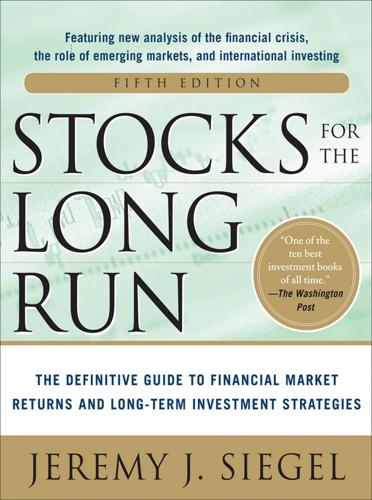
Stocks for the Long Run 5/E: the Definitive Guide to Financial Market Returns & Long-Term Investment Strategies
by
Jeremy Siegel
Published 7 Jan 2014
When examining the returns from 2001 onward in Figure 20-2, it appears as if the returns from the timing strategy would swamp the buy-and-hold strategy, but that is not the case. The buy-and-hold strategy from 2001 to 2012 beats the timing strategy by more than 2 percentage points per year even before transaction costs are factored in. This is because the poor returns from the timing strategy occur when markets are not in a strong uptrend or downtrend and the market crosses the 200-day moving average many times, incurring large costs. Although the returns from the timing strategy often fall behind that of a buy-and-hold investor, the major gain from the timing strategy is that the timing investor is out of stocks before the bottom of every major bear market.
…
FIGURE 20-3 Distribution of Annual Gains and Losses: Dow Industrials: Timing Versus Buy-and-Hold Strategy The distribution of gains and losses is quite similar to that of a buy-and-hold investor who has purchased index puts to cushion market declines. As noted in Chapter 18, purchasing index puts is equivalent to buying an insurance policy on the market. If no losses are realized, the cost of the puts drains returns. Similarly, the timing strategy involves a large number of small losses that come from moving in and out of the market. That is why the modal annual return for the timing strategy is from zero to minus 5 percent, while the modal return for a buy-and-hold investor is plus 5 to 10 percent.
…
GAINS THROUGH TIMING THE BUSINESS CYCLE My studies show that if investors could predict in advance when recessions will begin and end, they could enjoy superior returns to the returns earned by a buy-and-hold investor.8 Specifically, if an investor switched from stocks to cash (short-term bonds) four months before the beginning of a recession and back to stocks four months before the end of the recession, he would gain almost 5 percentage points per year on a risk-corrected basis over the buy-and-hold investor. About two-thirds of that gain is the result of predicting the end of the recession, where, as Table 15-3 shows, the stock market hits bottom between four and five months before the end of the economic downturn, and the other third comes from selling stocks four months before the peak.
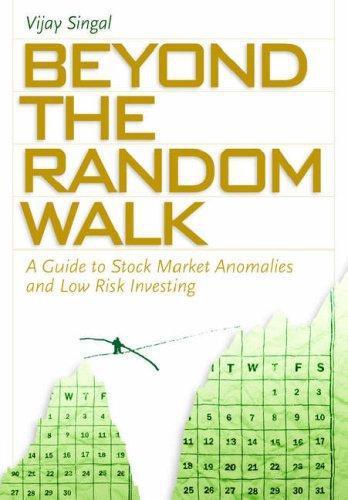
Beyond the Random Walk: A Guide to Stock Market Anomalies and Low Risk Investing
by
Vijay Singal
Published 15 Jun 2004
The two-day holding period returns for the selected categories are 7.7 percent for European funds, 7.1 percent for foreign funds, and 10.8 percent for Pacific Asia funds. In most cases the returns for 2002 correspond closely with the co- Mispricing of Mutual Funds Returns from Trading Mispriced Funds 15% Six-Month Returns 10% 5% Buy and hold Two-day holding One-day holding 0% -5% -10% European funds Pacific Asia funds Figure 6.1 The returns from trading mispriced funds are compared with the fund’s buy-and-hold return over the January-June 2002 period. efficients reported in the last column. The close association between the January-June 2002 returns and the 2001 coefficients suggests that the pattern of returns is quite stable between 2001 and 2002 and is indicative of the future profitability of similar trading strategies.
…
Number of trades = 4 Return based on signals and holding for at least 30 days = –5.8% Abnormal return = 11.3% for 6 months Strategy 2 Pay the redemption fee if the predicted return is less than the redemption fee, that is, < –1.0% Number of trades = 8 Gross return based on signals = –4.3% Net return after payment of 7% in redemption fees = –11.3% Abnormal return = 5.8% for six months The results are reported in Table 6.5 for a thirty-day holding period. There are four signals during January–June 2002 with a 1.0 percent threshold. The total return is –5.8 percent. Compared with a buy-and-hold return of –17.1 percent, an investor would have earned an abnormal return of 11.3 percent over the six-month period, equivalent to an annual abnormal return of 22.6 percent even for a fund that has a thirty-day redemption fee. It is clear that a timing strategy is superior to a buy-and-hold strategy. Pay the Redemption Fee The second approach is to actually sell the fund even if you have to pay the redemption fee. However, the redemption fee is paid only when the predicted return is more negative than the redemption fee.
…
Deducting a redemption fee of 7 percent for the seven premature sales generates a net return of –11.3 percent. Again, compared with the buy-and-hold return of –17.1 percent, an investor will earn an abnormal return of about 5.8 percent in a six-month period, or an 11.6 percent annual abnormal return, by paying the redemption fee each time it is less than the predicted return. To conclude, it can be observed that mispriced mutual funds are attractive for the smart investor. The redemption fees make the trading less attractive, but the returns from timing are still reasonable and better than a buy-and-hold strategy. The returns can be improved with a refinement in the regression model that includes multiple index returns instead of just the S&P 500, as mentioned in “The Trading Process.”
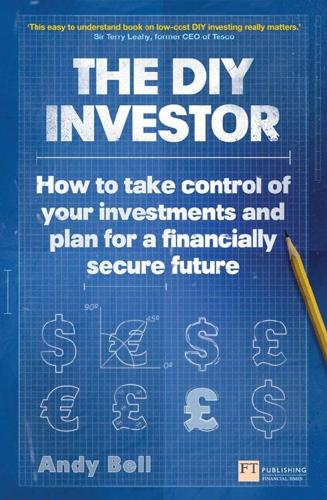
DIY Investor: How to Take Control of Your Investments & Plan for a Financially Secure Future
by
Andy Bell
Published 12 Sep 2013
Two websites that allow you to follow directors’ share purchases and sales are www.directorsholdings.com and www.directorsdeals.com. The long-term buy and hold investor This self-explanatory way of investing, combined with passive investing, explained below, is arguably the strategy that gives the DIY investor the best chance of good returns over a long period of time. Buy and hold investing is founded on the idea that markets will give a good rate of return in the long term, in the way that they have done over long periods for most of the last 100 or so years. Buy and hold investors believe it is not possible to beat the market by making short-term bets on swings in valuations because the increased costs of dealing, including broker costs, stamp duty and bid/offer spreads, will more often than not wipe out whatever gains, if any, the investor trying to time the market might make.
…
But they do offer some protection against inflation – unlike cash on deposit – as equities tend to rise when prices rise. And by buying a basket of high-income equities you can spread the risk of one of them going bad. People who buy and hold equities long term are often investment platforms’ least profitable customers. That is why some investment platforms charge a custody fee or a quarterly inactivity fee for investors who are not actively trading. If you want to buy and hold income shares, make sure you use an investment platform that is not going to penalise you for doing so. Corporate actions – rights issues, open offers and takeovers Corporate actions are changes to the structure of a company that affect the shares you hold.
…
Buy and hold investors believe it is not possible to beat the market by making short-term bets on swings in valuations because the increased costs of dealing, including broker costs, stamp duty and bid/offer spreads, will more often than not wipe out whatever gains, if any, the investor trying to time the market might make. Supporters of buy and hold investing argue that markets are so efficient that the price of a share is always accurate, meaning there is no scope for an investor to find undervalued shares. This theory is known as the efficient market hypothesis. Investment legends Warren Buffett, chairman and chief executive of investment giant Berkshire Hathaway, and the UK’s own Neil Woodford, of Invesco Perpetual, are both buy and hold investors of sorts in that they hold stocks for a very long time and keep their portfolio turnover to a minimum.

Capital Ideas: The Improbable Origins of Modern Wall Street
by
Peter L. Bernstein
Published 19 Jun 2005
Rhea declares: “Surely no Dow theory student saw anything resembling the termination of a bear market until June and July 1932, and it is inconceivable that Hamilton would have turned bullish before then.”38 Rhea goes on to argue that, had Cowles continued his investigation beyond Hamilton’s death, he would have found that the capital of the buy and hold investor would have suffered a shrinkage of more than 80 percent before the bear market hit bottom whereas the investor who had followed Hamilton’s advice could have sat back comfortably with a pile of cash. On the other hand, an indefinite extension of the test period after 1933 might well have put the buy and hold investor back in the lead over the advice of a market-timing Dow theorist. The financial publications that Cowles investigated fared no better than Hamilton: “We are enabled to conclude that the average forecasting agency fell [below] the average of all performances achievable by pure chance.”39 In 1928, when an investor in the market as a whole would have earned the enormous return of 44 percent, the ratio of bullish to bearish forecasts by this group was only four to three.
…
Before the fact, however, they are always uncertain whether an observed trend is likely to continue or go into reverse, or whether a price movement counter to a trend is just a twitch or the beginning of a new trend in the opposite direction. This is the same dilemma that Kendall sought to resolve. In short, asks Alexander, are stock prices predictable, or are they ruled by the Demon of Chance? How investors answer that question determines whether they will choose to buy and hold for the long pull, or will try to swing between cash and stocks as the market fluctuates. Investors who opt for buy-and-hold say that all they can forecast is that stocks are a good investment over the long run. This attitude is typical among many individual investors. Some simply have no taste for shifting their holdings around. They see no advantage in doing so.
…
When a given piece of information prompts an almost simultaneous response by investors—as when a bank announces a huge write-off for loan losses or an oil company comes up with a big drilling hit in an unexploited area—even the cleverest analyst of balance sheets or with the keenest eye for the charts will fail to do as well as the investor who simply buys and holds. At least, that is how a perfect market operates. Profitable trading depends on imperfections, which develop only when other investors are slower than the swinger to receive information, draw erroneous conclusions from it, or delay acting on it. Gradual recognition and understanding of the facts is what makes for trends instead of bedlam. Professionals insist that they can win when they invest actively, as opposed to buying and holding a broadly diversified portfolio, because they can distinguish trends from noise and make better sense than amateurs out of new information.

The Bogleheads' Guide to Investing
by
Taylor Larimore
,
Michael Leboeuf
and
Mel Lindauer
Published 1 Jan 2006
Regarding Stay the Course Frank Armstrong, author: "Buy and hold is a very dull strategy. It has only one little advantage-it works, very profitably and very consistently." Jack Bogle: "No matter what happens, stick to your program. I've said `Stay-the-course' a thousand times and I meant it every time. It is the most important single piece of investment wisdom I can give to you." Rick Ferri, author of four excellent investment books: "Write down your strategy-then stay the course" Carol Gould, New York Times: "For most investors the odds favor a buy-and-hold strategy." Michael LeBoeuf, author of The Millionaire in You: "Simple buy-andhold index investing is one of the best, most efficient ways to grow your money to the ultimate goal of financial freedom."
…
The Securities and Exchange Commission (SEC) has an excellent primer where you can get more information on variable annuities at www.sec.gov/investor/pubs/varannty.htm#wvar. EXCHANGE-TRADED FUNDS Exchange-Traded Funds (ETFs) are basically mutual funds that trade like stocks on an exchange. They are bought and sold continuously throughout the day when the stock market is open. The ETF's stocklike features appeal to a wide range of investors, including long-term buy-and-hold investors, as well as short-term traders. Perhaps one of the biggest benefits of owning ETFs is the low cost. ETF expenses can be as low, or even lower, than many mutual funds that track the same index. ETFs are available that follow both foreign and domestic equity indexes. There are ETFs that follow bond indexes, as well.
…
Unlike regular mutual funds, which are priced at net asset value (NAV) only once a day at the close of business by the fund company, based on the value of the securities owned by the fund, ETFs are priced continuously throughout the day, by an open market system, as are stocks, whenever the stock market is open. This makes ETFs attractive to those investors who wish to trade during the day and know the exact price of their trade. However, being able to trade ETFs during the day is of no benefit to Boglehead investors because we are buy-and-hold types. If you're interested in day-trading funds, you're reading the wrong book. There are some downsides to ETFs. First, you have to use a broker each time you buy or sell. Needless to say, the shorter the holding period, the more those added commission costs could negate any benefits of the ETF's lower expenses.
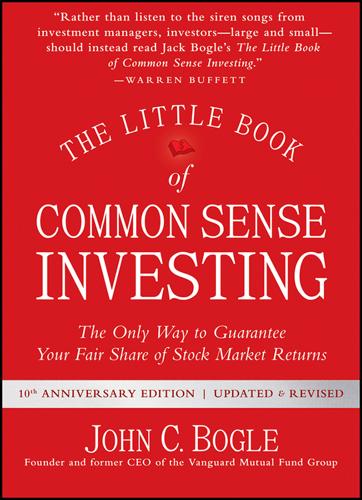
The Little Book of Common Sense Investing: The Only Way to Guarantee Your Fair Share of Stock Market Returns
by
John C. Bogle
Published 1 Jan 2007
Equally important, it is consistent with the age-old principle of simplicity expressed by Sir William of Occam: Instead of joining the crowd of investors who dabble in complex algorithms or other machinations to pick stocks, or who look to past performance to select mutual funds, or who try to outguess the stock market (for investors in the aggregate, three inevitably fruitless tasks), choose the simplest of all solutions—buy and hold a diversified, low-cost portfolio that tracks the stock market. Don’t Take My Word for It Hear David Swensen, the widely respected chief investment officer of the Yale University Endowment Fund. “[Over the fifteen years ending 1998, a] minuscule 4 percent of [mutual] funds produced market-beating after-tax results with a scant 0.6 percent [annual] margin of gain.
…
Just stay the course. Don’t Take My Word for It The wise Warren Buffett shares my view. Consider what I call his four E’s. “The greatest Enemies of the Equity investor are Expenses and Emotions.” So does Andrew Lo, MIT professor and author of Adaptive Markets (2017), who personally “invests by buying and holding index funds.” * * * Perhaps even more surprisingly, the founder and chief executive of the largest mutual fund supermarket—while vigorously promoting stock trading and actively managed funds—favors the classic index fund for himself. When asked why people invest in managed funds, Charles Schwab answered: “It’s fun to play around . . . it’s human nature to try to select the right horse . . .
…
“Assuming that the future is like the past, you can outperform 80 percent of your fellow investors over the next several decades by investing in an index fund—and doing nothing else. . . . [A]cquire the discipline to do something even better [than trying to beat the market]: become a long-term index fund investor.” His New York Times article was headlined: “Buy and Hold? Sure, but Don’t Forget the ‘Hold.’” Notes 1 Extreme example: If a fund with $100 million of assets earns a time-weighted return of 30 percent on its net asset value during a given year, and investors, recognizing the strong return, purchase $1 billion worth of its shares on the final day of the year, the average dollar-weighted return earned by its investors would be just 4.9 percent. 2 This gap was estimated based on the difference between the time-weighted returns reported by Morningstar on the average large-cap fund and actual dollar-weighted returns over the full 25-year period.

In Pursuit of the Perfect Portfolio: The Stories, Voices, and Key Insights of the Pioneers Who Shaped the Way We Invest
by
Andrew W. Lo
and
Stephen R. Foerster
Published 16 Aug 2021
Aside from the emotional reaction of wanting to de-risk at the wrong time or de-risk in the face of bad times, there is a consideration especially more for individuals, but not just for individuals, where you get to a point where the risk level in the market relative to your ability to tolerate risk may essentially move you to say, ‘Don’t stay the course,’ cut back some, sleep better at nights, or if you’re sleeping at nights and you shouldn’t be, get yourself to the point where you should be sleeping better at night.”62 Leibowitz’s Perfect Portfolio is “definitely not buy and hold. Even though buy and hold may be a good advice for openers, it’s not a good advice for ending, or for always getting all the way through the process.”63 The risk an investor can bear has an impact on the asset types in which they can invest. Leibowitz compares it to the funding ratios in pension funds, the relative amount of investment assets compared to the discounted value of future liabilities.
…
If fund managers have information superior to general market participants and thus are able to earn superior returns compared to what one can obtain from a passive stock portfolio plus bonds, then their alphas should be positive and significant. Jensen found that, on average, fund managers were generating negative alpha—now referred to as Jensen’s alpha—even before accounting for fees. This implied that, on average, funds weren’t able to outperform a “buy and hold the market” strategy. Furthermore, only three individual funds statistically significantly outperformed—even fewer than what one would expect by chance. Fama recently commented on the phenomenal impact of Jensen’s study. “[On] Wall Street [in the 1960s], there were no standards [and] there were very few mutual funds, and you were free to say anything you wanted about what your performance looked like.
…
“When you hear news that moves the market and your broker calls up and says, ‘Do something,’ just tell him my rule is ‘don’t do something, just stand there.’ ”119 In his 2012 book The Clash of the Cultures: Investment vs. Speculation, Bogle emphasized the differences between the culture of short-term speculation, such as day trading, and the buy-and-hold culture of long-term investing—and it’s clear where he stood. His closing piece of advice: “The secret to investing is that there is no secret.… There is only the majesty of simplicity.… When you own the entire stock market through a broad stock index fund, all the while balancing your portfolio with an allocation to an all-bond-market index fund, you create the optimal investment strategy.… Owning index funds, with their cost-efficiency, their tax-efficiency, and their assurance that you will earn your fair share of the markets’ returns, is, by definition, a winning strategy.… Stay the course!”
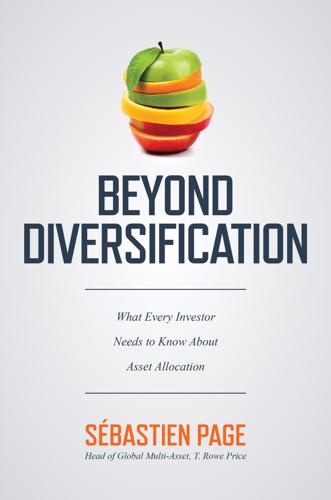
Beyond Diversification: What Every Investor Needs to Know About Asset Allocation
by
Sebastien Page
Published 4 Nov 2020
In fixed income markets, yield to maturity is a reasonably good predictor of future returns . . . better than most people think. In fact, by definition, yield to maturity is a perfect predictor of the buy-and-hold return of a single default-free bond. However, with the CAPM we need a return forecast for the total bond market, which includes credit exposures and is better represented as a constant maturity portfolio, rather than buy and hold. Nonetheless, ultimately, it’s easier to forecast bond returns than equity returns, and the math behind forecasting bond returns is fascinating, at least to a geek like me. First, the key takeaway is that higher reinvestment rates offset interest rate shocks over time.
…
The strategy is portable and can easily be applied as a futures overlay to smooth the ride for almost any portfolio.3 Importantly, it has been thoroughly backtested. In Table 7.1, I summarize a sample of 11 studies on the topic.4 TABLE 7.1 Prior Studies on Managed Volatility To compare results across studies, I report alpha over volatility-matched, buy-and-hold benchmarks. Another way to think about these results is that for the same return, managed volatility portfolios delivered less volatility (and, it is hoped, less exposure to loss) than did their buy-and-hold benchmarks. When the authors did not report these results directly, I scaled Sharpe ratios to match the volatility of the static benchmark. The results are encouraging, especially in a low-rate environment in which expected returns are depressed across stocks and bonds.
…
By adjusting risk exposures, managed volatility essentially “normalizes” portfolio returns to one single distribution and thereby significantly reduces tail risk. Short-term expected (or “forward”) returns do not seem to increase after volatility spikes, which explains why managed volatility often outperforms buy and hold in terms of the Sharpe ratio (or risk-adjusted performance in general). This phenomenon has been studied in academia (see the article published in the Journal of Finance titled “Volatility Managed Portfolios,” by Alan Moreira and Tyler Muir, 2017). Most explanations focus on the time horizon mismatch between managed volatility and value investing.

The Behavioral Investor
by
Daniel Crosby
Published 15 Feb 2018
As a result, the thing to do is usually nothing at all. Buy and hold proponents Vanguard examined the performance of accounts that made no changes versus those who had made tweaks and found that the “no change” condition handily outperformed the tinkerers. Meir Statman cites research from Sweden showing that the heaviest traders lose 4% of their account value each year to trading costs and poor timing, and these results are consistent across the globe. Across 19 major stock exchanges, investors who made frequent changes trailed buy and hold investors by 1.5 percentage points per year. Jason Zweig pithily sums up the futility of excessive activity in his Devils Financial Dictionary definition of Day Trader: “n.
…
Behavioral economist Meir Statman cites research from Sweden showing that the heaviest traders lose 4% of their account value each year to trading costs and poor timing, and that these results are consistent across the globe. Across 19 major stock exchanges, investors who made frequent changes trailed buy and hold investors by 1.5 percentage points per year. Perhaps the best-known study on the damaging effects of our brain’s action bias also provides insight into gender-linked tendencies in trading behavior. Terrance Odean and Brad Barber, two of the fathers of behavioral finance, looked at the individual accounts of a large discount broker and found something that surprised them.
…
Jason Zweig pithily sums up the futility of excessive activity in his Devils Financial Dictionary definition of Day Trader: “n. See also IDIOT.” But for all of the evidence that market timing is foolish, there is equally compelling evidence that a buy and hold approach can yield unsatisfactory results for even the most patient investor. Michael Batnick published the table below, which provides a sobering look at how poor real returns can be over even long periods of time and how regular such occurrences truly are. Real growth of one dollar 1929–1943 $1.08 1944–1964 $10.83 1965–1981 $0.94 1982–1999 $11.90 2000–present $1.35 Urban Carmel, who writes at The Fat Pitch, shared some fascinating insights in his post, ‘When Buy and Hold Works and When It Doesn’t.’
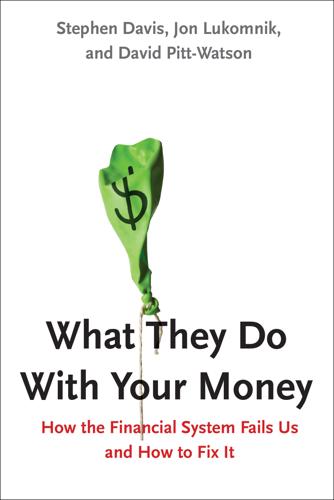
What They Do With Your Money: How the Financial System Fails Us, and How to Fix It
by
Stephen Davis
,
Jon Lukomnik
and
David Pitt-Watson
Published 30 Apr 2016
“So, OK, we’ll hold for a year.”7 For years, investing gurus urged retail investors not to try to outguess the market on a day-to-day basis. “Buy and hold” was the advice: pick great companies and stay with them.8 We are 180 degrees away from that. Today, a Google search for the phrase “buy and hold is dead” yields about 100,000 hits, including books like Buy and Hold Is Dead (Again): The Case for Active Portfolio Management in Dangerous Markets and Buy and Hold Is Dead: How to Control Risk and Make Money in Any Environment; innumerable articles with titles like “Buy and Hold Is Dead and Gone” and “Buy and Hold Is Dead (And Never Worked in the 1st Place)”; video clips; blogs; and stock market tips.9 As in less metaphorical forms of attention deficit hyperactivity disorder (ADHD), not all of this activity is intentional.
…
See Corporate boards Bogle, John C., 6–7, 139, 221, 235n24 Borrowers, financial system as intermediator between lenders and, 17, 19–22, 47, 74, 128–29, 211–13 “Brand Tracker” survey, 206 Brandeis, Louis, 92 Breakout Performance social media campaign, 115 Brealey, R. A., 254n2 BrightScope, 122 Brokers, fiduciary duty and, 256n23 Brooks, David, 167 Buffett, Warren, 45, 63, 64, 80, 150, 221 Business judgment rule, 78–79 Business school curriculum, 190–92 Buy and Hold Is Dead (Again) (Solow), 65 Buy and Hold Is Dead (Kee), 65 Buycott, 118 Cadbury, Adrian, 227 Call option, 93 CalPERS, 91, 110, 111–12, 208, 221, 241n37 CalSTRS, 208 Canada, pension funds in, 59, 111, 209 Capital Aberto (magazine), 117 Capital gains, taxation of, 92 Capital Institute, 59, 87 Capital losses, 92 Capitalism: agency, 33, 74–80 defined, 243n2 Eastern European countries’ transition to, 167 financial system and, 9 injecting ownership back into, 83–93 private ownership and, 62 reforming, 11–12 Carbon Disclosure Project, 89 Career paths, new economic thinking and, 189–90 CDC.
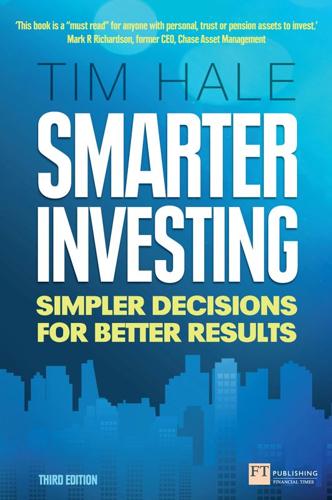
Smarter Investing
by
Tim Hale
Published 2 Sep 2014
The active management industry has done a good job in encouraging them to do so, and will try to do the same to you. Today, the battle for investors’ money rages around whether you should try to beat the markets through active decision-making, or simply try to capture the market return as closely as possible, adopting a buy-and-hold strategy, as you will see. It is a question of where the probabilities of success lie in your favour. This is how the story unfolds. The stockbroking model is on its last legs Before the early 1970s, investors had little option but to buy securities through stockbrokers, or employ a stockbroker to manage a portfolio for them, an optimal way of managing money at the time.
…
It is tempting to be drawn into the comfort of passing the responsibility over to the professionals, who after all should be best placed to beat the market, as they spend their lives working with valuation models, work with bright colleagues, meet and analyse companies, and have good access to information. Surely if anyone can beat the markets, they can? Figure 4.1 Ways to try to beat a long-term buy-and-hold strategy Figure 4.1 illustrates how active managers attempt to beat the returns from a long-term investment policy mix of investments. The route you choose is a question of probabilities Managers who believe that they can beat your investment policy mix returns by market timing and security selection are known as active managers.
…
For some reason, we hate to be considered average. We seem to aspire to want to be winners, which is fine if it is winning an egg and spoon race, but dangerous in the less-than-zero-sum game that we play as investors. In investing, there is nothing wrong with being average if by average you mean achieving the market return for your buy-and-hold portfolio, as you will see. The problem with many investors is that they are attracted to active management because they have not thought through the issues clearly, and have not seen or read the evidence that exists that helps them to decide which course of action is likely to be best for their investing health.
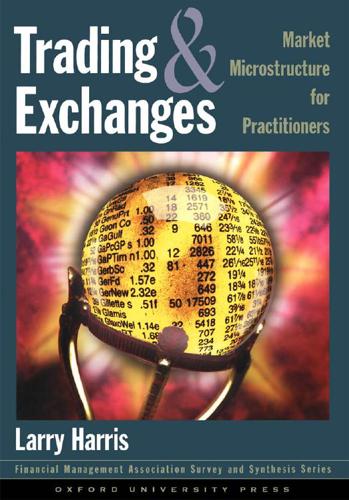
Trading and Exchanges: Market Microstructure for Practitioners
by
Larry Harris
Published 2 Jan 2003
The most important decision investment sponsors make is whether to employ active managers. Investors who believe that they cannot speculate successfully often invest their money with passive investment managers. Passive investment managers use buy and hold strategies. They simply buy and hold securities. Passive managers therefore rarely trade. The most common buy and hold strategy is the index replication strategy. Index replicators buy and hold portfolios that they design to replicate the returns to a broad market index. We discuss how they do this in chapter 23. Indexing is very popular because many investors have decided that they do not want to speculate.
…
Successful traders win more often than they lose, however. Those who do not are futile traders. * * * ▶ A Trading Oxymoron Investment managers help people manage their funds. They may help people invest, as their name implies, or they may help people speculate. Passive investment managers pursue buy and hold strategies. Managers who buy and hold rarely trade. Indexing is the most common buy and hold strategy. Indexers try to replicate the returns to an index. Such strategies are often appropriate for investors. Active investment managers are speculators who try to beat the market. Traders who “invest” with such managers actually speculate on whether the manager can beat the market. ◀ * * * 8.3 FUTILE TRADERS Futile traders expect to profit from trading, but they do not profit on average.
…
Some managers undoubtedly can beat the market on average, even after accounting for their transaction costs and management fees. Unfortunately, as we saw in chapter 22, identifying such managers is very difficult. Many uninformed investors employ buy and hold strategies to avoid the difficulties of selecting skilled active managers and the costs of investing with unskilled active managers. Buy and hold investors avoid trading losses by not trading. They also avoid high management fees. Since index funds implement buy and hold strategies, they are very attractive to investors who want exposure to index risk without the risk of substantially underperforming the market. The minor frictions associated with index fund management ensure that index funds will slightly underperform their indexes.
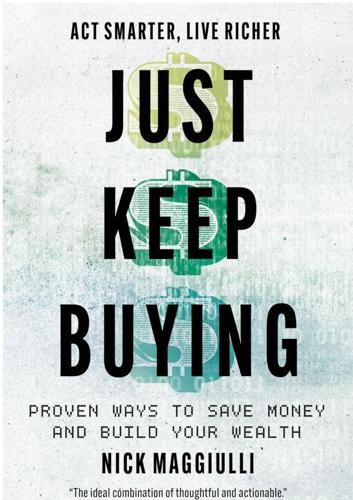
Just Keep Buying: Proven Ways to Save Money and Build Your Wealth
by
Nick Maggiulli
Published 15 May 2022
As you can see, since you are in bonds so often, you rarely participate in the growth of the stock market. By taking no risk at all you end up underperforming Buy and Hold by a significant amount. Avoiding drawdowns of 5% or more is obviously too safe of a route to take, so what if we went to the other extreme and only avoided drawdowns bigger than 40%? If you did so, the only year you would have been out of the market since 1950 was 2008. This is the exact point when the Avoid Drawdowns strategy differs from Buy and Hold, as shown in the next chart. While the Avoid Drawdowns strategy (gray line) does beat Buy and Hold (black line) over time, it doesn’t beat it by much. It can do far better if it was more conservative.
…
Investing in bonds in years when the market declines by 15% (or more) and investing in stocks in all other years would maximize your long-term wealth. In fact, if you were to be in bonds in each year when the market declined by 15% (or more), you would outperform Buy and Hold by over 10x from 1950–2020. The next plot shows Buy and Hold versus the Avoid Drawdowns strategy when the Avoid Drawdowns strategy avoids drawdowns of 15% or greater. This is the Goldilocks zone of drawdown avoidance. It’s not too risky, but it’s not too timid either. In fact, this strategy spends about one-third of its time in bonds when avoiding intrayear drawdowns of 15% or more.
…
In other words, the benefit of avoiding capital gains taxes by using a nontaxable retirement account like a 401(k) is about 0.50% a year (assuming a 7% growth rate and 15% long-term capital gains rate). All else equal, this means that a 401(k) provides about half a percent more in after-tax return than a well-managed brokerage account. But this comparison assumes that you will be able to buy and hold in your taxable brokerage account for 30 years. If you don’t have this level of discipline, then the calculus changes significantly. For example, if you were to trade in/out of your positions annually and pay long-term capital gains taxes along the way (i.e., the “Taxed Annually” strategy), you would lose an additional 0.55% in annual return to Uncle Sam.
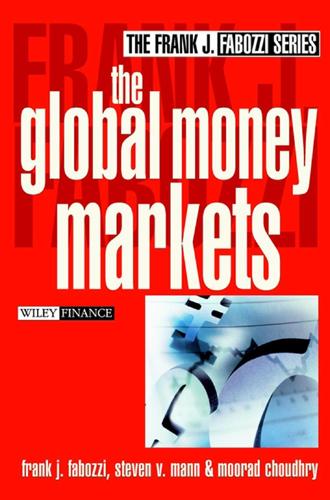
The Global Money Markets
by
Frank J. Fabozzi
,
Steven V. Mann
and
Moorad Choudhry
Published 14 Jul 2002
For a 3-month holding period, the results in Exhibit 3.10 indicate that riding the yield curve using 6-month bills provides an additional 10 basis points in returns on average and outperforms a buy-and-hold strategy over 82% of the time. Rides using longer bills increase the additional return, with a corresponding decrease in the percentage of rides that beat the buy-and-hold. For the 6-month holding period, the results suggest a similar story. A 6-month ride using the 9-month bill adds approximately 16 basis points on average, is effective 80% of the time, and has the highest (i.e., the most desirable) minimum return of all five riding strategies examined. A ride using the 12-month bill adds about 25 basis points on average and outperforms the buy-and-hold strategy 71% of the time.
…
Marcus, and Pradipkumar Ramanlal examine the effectiveness of riding the yield curve using Treasury bills for the period January 2, 1987, through April 20, 1997.17 They find that riding the yield curve on average enhances return over a given holding period versus a buy-and-hold strategy. Exhibit 3.10 pre17 See Robin Grieves, Steven V. Mann, Alan J. Marcus, and Pradipkumar Ramanlal, “Riding the Bill Curve,” The Journal of Portfolio Management (Spring 1999), pp. 74–82. 42 THE GLOBAL MONEY MARKETS sents summary statistics for the differences in holding period returns. These return differences are reported in basis points. Panel A presents the mean, median, minimum, maximum, and the percentages of return differences that are positive (i.e., meaning the riding strategy outperforms the buy and hold) for the 3-month holding period.
…
However, the same pattern emerges when yield ratios (i.e., 3-month LIBOR/3-month Treasury-bill) are examined. 40 EXHIBIT 3.9 Bloomberg Treasury Bill Screens a. Treasury Bill Curve Screen b. Treasury Bill Screen Source: Bloomberg Financial Markets THE GLOBAL MONEY MARKETS 41 U.S. Treasury Bills EXHIBIT 3.10 Summary Statistics for Differences in Holding-Period Returns (Ride minus Buy-and-Hold) in Basis Points from January 1987 through April 1997 Strategy Mean Median Min Max % Positive 9.0 14.2 17.3 −34.9 −69.2 −107.9 67.2 106.4 139.7 82.36 73.60 65.56 15.8 27.9 −19.9 −68.7 78.8 144.1 80.04 71.23 Panel A: Three-Month Holding Period Ride Using 6-Month Ride Using 9-Month Ride Using 12-Month 10.6 16.0 17.9 Panel B: Six-Month Holding Period Ride Using 9-Month Ride Using 12-Month 16.1 25.2 Both of these yield curves are positively sloped.

Financial Freedom: A Proven Path to All the Money You Will Ever Need
by
Grant Sabatier
Published 5 Feb 2019
Back in the 1980s, when mortgage rates were 10 to 12 percent, it would have made more sense to pay off a mortgage as quickly as possible, since other investments were unlikely to return that much. TWO WAYS TO INVEST IN REAL ESTATE There are two primary ways to invest in real estate: you can buy and sell (aka flip) properties, or buy and hold them for the long term. While the primary focus of this chapter is buying and holding real estate, let’s look at how both strategies can help you hit your number in different ways. Buying and flipping properties means you buy a property and then try to sell it within a few years (or even a few weeks). Sometimes the homes need repairs and sometimes they don’t, but the strategy is to look for values—homes that are worth more than you pay for them or could be worth a lot more with some repairs.
…
As you’ve already learned, because of the 1031 exchange rule, you can keep rolling over your profits tax-free by using them to buy new properties. Or you can flip your way into larger and larger homes so you can buy your dream home. You can also flip your way into buying a multi-unit property or apartment building that you can then hold and rent out. Just like buying and holding stock for the long term, buying and holding real estate is a more effective strategy than flipping to help you reach financial independence faster, since you can build up a portfolio that generates consistent monthly cash flow through rental income that can cover your mortgage debt and monthly expenses, as well as have a portfolio of assets that will also appreciate over time.
…
As you get closer to early retirement you should increase your cash fund from six months of living expenses to twelve. Long-Term Investing No matter when you start investing, a majority of your money should be invested for the long term (thirty-plus years), because even if you plan to retire earlier than that, you will want to keep the money growing so you can live off it forever. Buy and hold is the name of the long-term investment game. Because you have a longer time horizon, short-term fluctuations in your investments don’t matter as much because they have a longer time to recover from losses. The best places to invest for the long term are in the U.S. and international stock markets.
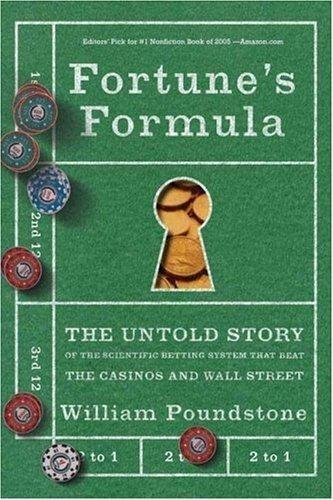
Fortune's Formula: The Untold Story of the Scientific Betting System That Beat the Casinos and Wall Street
by
William Poundstone
Published 18 Sep 2006
The only way to survive is through diversification. Someone who bets on every horse—or buys an index fund—will at least enjoy average returns, minus transaction costs. “Average” isn’t so hot at the racetrack, given those steep track takes. “Average” is pretty decent for stocks, something like 6 percent above the inflation rate. For a buy-and-hold investor, commissions and taxes are small. Shannon was more interested in above average returns. The only way to beat the market (of stocks or horse wagers) is by knowing something that other people don’t. The stock ticker is like the tote board. It gives the public odds. A trader who wants to beat the market must have an edge, a more accurate view of what bets on stocks are really worth.
…
The average return of the passive investors is exactly the same as that of the active investors, for the reason just outlined. Now factor in expenses. The passive investors have little or no brokerage fees, management fees, or capital gains taxes (they rarely have to sell). The expenses of the active traders vary. We’re using that term for everyone from day traders and hedge fund partners to people who buy and hold a few shares of stock. For the most part, active investors will be paying a percent or two in fees and more in commissions and taxes. (Hedge fund investors pay much more in fees when the fund does well.) This is something like 2 percent of capital, per year, and must be deducted from the return.
…
Then you pay the government 20 cents and end the first year with $1.80 rather than $2.00. This means that you are not doubling your money but increasing it by a factor of 1.8—after taxes. At the end of eleven years you will have not 211 but 1.811. That comes to about $683. That’s less than half what the buy-and-hold investor is left with after taxes. In the late 1970s, Jay Regan came up with a clever idea. At that time, a treasury bond was still a piece of fancy paper. Attached to the bond certificate were perforated coupons. Every six months, when an interest payment was due, the holder would detach a coupon and redeem it for the interest payment.
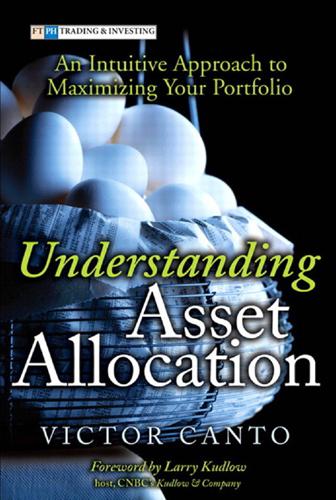
Understanding Asset Allocation: An Intuitive Approach to Maximizing Your Portfolio
by
Victor A. Canto
Published 2 Jan 2005
Although this can be somewhat discouraging, an upside does exist: It is also extremely difficult to choose the worst-performing asset class every single year. As well, it is fairly easy to randomly be above the median almost half the time, which means oneyear buy-and-hold strategies are likely to generate average returns. One question immediately comes to mind: Why not buy and hold a single asset all the time? The data provides the answer. Table 1.2 reports the average returns realized for each year by selecting the top-ranked asset class, the second-ranked class, and so on, for each year. Holding one asset class for 30 consecutive years (see Table 1.4) contrasts these returns with the returns produced.
…
The results are robust enough to withstand and accommodate the many idiosyncratic demands the managers and participants employing the CAA strategy make, although the strategy itself can be easily adjusted to accommodate a variety of investment horizons and lifecycle constraints, a multitude of asset classes, and a wide range of risk tolerances. 162 UNDERSTANDING ASSET ALLOCATION 9 ACTIVE VERSUS PASSIVE MANAGEMENT 163 he debate over whether to actively or passively manage occurs with frequency in the investment profession.1 Although the two terms mean different things to different people, active management is generally considered a strategy incorporating active stock picking and market timing. In contrast, passive management usually refers to buy-and-hold strategies applied to individual stocks and/or asset classes. Passive management proponents argue active management does not perform any better than the market over the long run. They also argue, because index-like portfolios have lower expense ratios, passive portfolios deliver higher net-of-fee returns.
…
Financial Analysts Journal 31, No. 2 (March/April 1975): 60–9. ———. “Capital Asset Prices: A Theory of Market Equilibrium Under Conditions of Risk.” Journal of Finance 19 (1964): 425–42. ———. “The Sharpe Ratio.” Journal of Portfolio Management (Fall 1994): 49–58. Bibliography 299 Shilling, A. Gary. “Market Timing: Better than a Buy-and-Hold Strategy.” Financial Analysts Journal 48, No. 2 (March/April 1992): 46–50. Siegel, Jeremy J. Stocks for the Long Run, Second Edition. McGraw-Hill, 1998. Siegel, Laurence. “Distinguishing True Alpha from Beta.” CFA Institute Conference Proceedings—Points of Inflection: New Directions for Portfolio Management (February 2004).
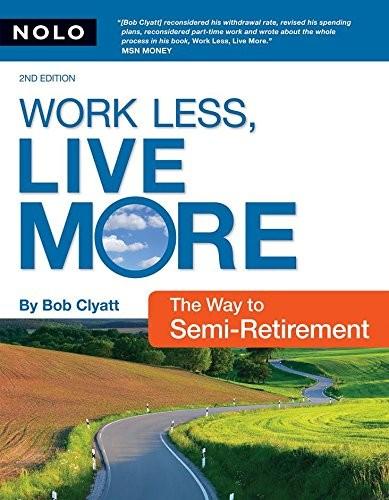
Work Less, Live More: The Way to Semi-Retirement
by
Robert Clyatt
Published 28 Sep 2007
Help for the Beleaguered Investor Those in the investment industry play on genuine concerns and fears, often offering high-priced advice and products that can seem better suited to lining their own pockets than to meeting investors’ long-term needs. Fortunately, in recent years, an investing paradigm has emerged that can be especially useful to semi-retirees and other long-term investors: buy-and-hold index investing. A growing body of credible research now supports this investment approach. At its heart, index investing is based on data confirming that simply matching the performance of the overall market, without attempting to beat the averages with superior timing and insight, will generally win out over most other investing approaches in the short run and almost invariably over the long run.
…
While superior stock-picking skills give some investors an index-beating year or two, on average the indexers edge ahead, especially against funds seeking to beat the large widely followed indexes. chapter 3 | Put Your Investing on Autopilot | 163 While most investors have heard the merits of buy-and-hold index investing, what is only beginning to be appreciated and is especially relevant to semi-retirees are enhancements and research that build on the basic index investing paradigm. I term this approach Rational Investing— and believe it offers semi-retirees profound benefits over the long run.
…
chapter 3 | Put Your Investing on Autopilot | 165 Where Wall Street Goes Wrong Despite the warm and fuzzy ads exuding affinity for your financial goals, brokerage firms and securities houses are set up as selling organizations, pitching a product for a commission. It is rare to find a broker or dealer who can look at the big picture and create the low-cost buy-and-hold investing autopilot a semi-retiree needs. Most would much rather sell you on the merits of keeping their hands firmly on the wheel, then charge you for frequent course corrections. Those who handle most mutual funds are only a little better. Not only do they see your assets as their source of steady annual fees, but many then vigorously trade your money at inflated commission levels to receive soft dollar kickbacks from cozy corporate partners.
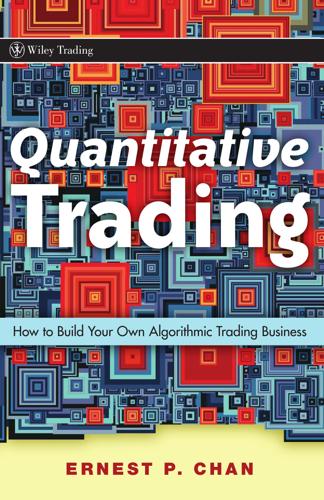
Quantitative Trading: How to Build Your Own Algorithmic Trading Business
by
Ernie Chan
Published 17 Nov 2008
The upshot here is that the more regularly you want to realize profits and generate income, the shorter your holding period should be. There is a misconception aired by some investment advisers, though, that if your goal is to achieve maximum long-term capital growth, then the best strategy is a buy-and-hold one. This notion has been shown to be mathematically false. In reality, maximum long-term growth is achieved by finding a strategy with the maximum Sharpe ratio (defined in the next section), provided that you have access to sufficiently high leverage. Therefore, comparing a short-term strategy with a very short holding period, small annual return, but very high Sharpe ratio, to a long-term strategy with a long holding period, high annual return, but lower Sharpe ratio, it is still preferable to choose the short-term strategy even if your goal is long-term growth, barring tax considerations and the limitation on your margin borrowing (more on this surprising fact later in Chapter 6 on money and risk management).
…
This is because NT = (252 trading days) × (6.5 trading hours per trading day) = 1,638. (A common mistake is to compute NT as 252 × 24 = 6,048.) Example 3.4: Calculating Sharpe Ratio for Long-Only Versus Market-Neutral Strategies Let’s calculate the Sharpe ratio of a trivial long-only strategy for IGE: buying and holding a share since the close of November 26, 2001, and selling it at close of November 14, 2007. Assume the average risk-free rate during this period is 4 percent per annum in this example. You can download the daily prices from Yahoo! Finance, specifying the date range desired, and store them as an Excel file (not the default comma-separated file), which you can call IGE.xls.
…
P1: JYS c03 JWBK321-Chan September 24, 2008 13:52 Printer: Yet to come 46 QUANTITATIVE TRADING 9. In cell I1506 (the last row in the next “=SQRT(252)* AVERAGE(I3:I1505)/STDEV(I3:I1505)”. column), type 10. The number displayed in cell I1505, which should be “0.789317538”, is the Sharpe ratio of this buy-and-hold strategy. The finished spreadsheet is available at my web site at epchan.com/ book/example3 4.xls. Using MATLAB % make sure previously defined variables are erased. clear; % read a spreadsheet named "IGE.xls" into MATLAB. [num, txt]=xlsread(‘IGE’); % the first column (starting from the second row) % contains the trading days in format mm/dd/yyyy. tday=txt(2:end, 1); % convert the format into yyyymmdd. tday=datestr(datenum(tday, ‘mm/dd/yyyy’), ‘yyyymmdd’); % convert the date strings first into cell arrays and % then into numeric format. tday=str2double(cellstr(tday)); % the last column contains the adjusted close prices. cls=num(:, end); % sort tday into ascending order.

The Simple Path to Wealth: Your Road Map to Financial Independence and a Rich, Free Life
by
J L Collins
Published 17 Jun 2016
In the online comments for the article, a reader named Patrick nailed the flaw: “So, markets are efficient except when they’re not. And buy and hold doesn’t work because most people don’t stick to it at the wrong time. OK wisdom, but is this news?” Gold star, Patrick. Worse still is the professor’s recommendation to hold “the entire spectrum of investment opportunities.” This is his solution to dealing with the new investing world his “adaptive markets hypothesis” implies? Seems odd, since he contends “buy and hold” no longer works, to suggest investors buy and hold nearly every asset class imaginable. Huh? Let’s accept the professor’s premise that markets have gotten more volatile and will likely stay that way.
…
In the interview the professor contends that the long-held theory of efficient markets—which says existing share prices almost instantly incorporate and reflect all relevant information—is morphing into what he calls the “adaptive markets hypothesis.” The idea is that with new trading technologies the market has become faster moving and more volatile. That means greater risk. True enough and so far so good. But he goes on to say this means “buy and hold investing doesn’t work anymore.” The magazine interviewer then points out, and good for him, that even during the “lost decade” of the 2000s, the buy and hold strategy of stock investing would have returned 4%. The professor responds: “Think about how that person earned 4%. He lost 30%, saw a big bounce back, and so on, and the compound rate of return….was 4%. But most investors did not wait for the dust to settle.
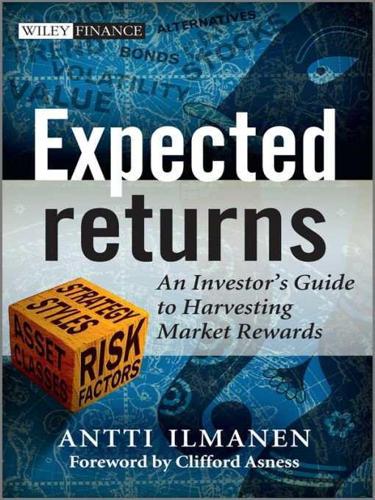
Expected Returns: An Investor's Guide to Harvesting Market Rewards
by
Antti Ilmanen
Published 4 Apr 2011
In contrast, the next four chapters focus on popular dynamic strategies that involve dynamic asset weights (changing over time) but static exposures to a given factor or characteristic such as equity value or currency carry. The boundary between static and dynamic strategies is blurred because even passive equity or bond investing is not “buy and hold” but involves portfolio adjustments to reflect changes in index composition, and if you make a “static” allocation into hedge funds they will be trading quite actively. (Moreover, even a buy-and-hold portfolio may leave the asset contents relatively unchanged over time—the weights will change due to ordinary price movements, and the names will occasionally change due to corporate actions—but portfolio characteristics and risk exposures will be quite unstable.
…
A broader mindset naturally leads to questioning the traditional 60/40 portfolio which relies excessively on one source of excess returns (the equity premium) and which therefore has highly concentrated risk (more than 90% of portfolio volatility is due to equities). • The strategy style perspective is especially important for understanding the profit potential of popular active-trading approaches. Value, carry, momentum, and volatility styles have outperformed buy-and-hold investments in many asset classes. Styles can also offer better diversification opportunities than asset classes. • Sophisticated investors are increasingly trying to look beyond asset classes and strategies in order to identify the underlying factors driving their portfolio returns. A factor-based approach is also useful for thinking about the primary function of each asset class in a portfolio (stocks for harvesting growth-related premia, certain alternatives for illiquidity premia, Treasuries for deflation hedging, and so on) as well as for diversifying across economic scenarios.
…
Basic finance theory, including single-period Markowitz or mean variance optimization and the single-period CAPM, requires that one use arithmetic means (AM) as inputs. However, most investors are interested in wealth compounding and this is better captured by geometric means (GM, also called compound average returns or compound annual returns). When I present historical evidence I focus on GMs, which show realized buy-and-hold returns. An asset’s GM is always lower than its AM, and the difference is larger for high-volatility assets. An excellent approximation of the relation between GM and AM is: GM ≈ AM—Variance/2. For example, given 20% equity market volatility, annual variance is 4% (20% squared) so the difference between AM and GM is roughly 2%.

Investment: A History
by
Norton Reamer
and
Jesse Downing
Published 19 Feb 2016
This can lead to the conclusion that hedge funds have generated more wealth than they actually have, given the reality that capital inflows tend to increase in the period after good returns because investors think the returns will persist into the future.34 Likewise, funds often experience outflows after poor performance, so the dollar-weighted returns can be much lower than buy-and-hold returns if performance reverts to the mean. 274 Investment: A History Some studies have highlighted the fact that the harm to the hedge fund vehicle was likely far greater than it appeared in the global financial crisis, as capital deployed to hedge funds was at its maximum in 2007. As a consequence, the dollar-weighted losses were more significant than the buy-and-hold return metrics make them seem. Studies that attempt to measure how divergent buy-and-hold return measures are from dollar-weighted returns for hedge funds show that dollarweighted returns tend to be 3 to 7 percent less than buy-and-hold returns per year (with the precise value naturally contingent upon the interval of time one chooses to analyze).35 Ultimately, the hedge fund is a much more complicated vehicle than is widely appreciated.
…
So hedge fund managers may have an even stronger temptation to make riskier moves toward the end of a bad period, given that this behavior will not be immediately apparent and that the payoff could be significant. One final observation pertains to the difference between dollarweighted and buy-and-hold returns. The returns one almost invariably sees from hedge funds are buy-and-hold returns, which operate on the assumption that the total dollars given by an investor to the fund does not change over time; that is, investors do not later decide to add more money to their position or, alternatively, withdraw existing investments. This can lead to the conclusion that hedge funds have generated more wealth than they actually have, given the reality that capital inflows tend to increase in the period after good returns because investors think the returns will persist into the future.34 Likewise, funds often experience outflows after poor performance, so the dollar-weighted returns can be much lower than buy-and-hold returns if performance reverts to the mean. 274 Investment: A History Some studies have highlighted the fact that the harm to the hedge fund vehicle was likely far greater than it appeared in the global financial crisis, as capital deployed to hedge funds was at its maximum in 2007.
…
An alternative explanation put forward for the momentum seen in markets is that the market could be underreacting to new information such that markets begin to move but do so incompletely when a news shock first occurs, only to continue to drift in that direction for a short time thereafter.50 The thrust of the efficient market theorists’ response to these objections has been that while there may be momentum in some markets, one cannot truly generate outsized returns because of transaction costs. The work used to support these counterarguments by efficient market proponents has thus sought to compare those using momentum strategies to those relying on buy-and-hold approaches as a means of showing that the returns of the latter are greater or equal to the returns of the former. Other work that has sought to shake the foundations of the efficient market hypothesis has centered on predicting 254 Investment: A History returns using various stock characteristics, such as dividend yield and price-to-earnings ratio.
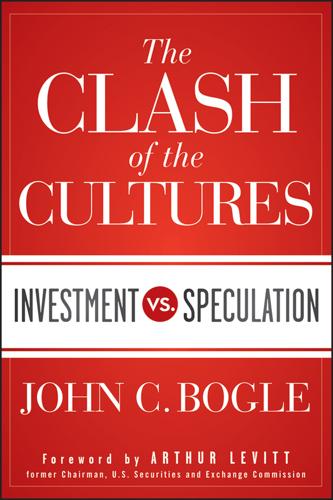
The Clash of the Cultures
by
John C. Bogle
Published 30 Jun 2012
As shown in Exhibit 4.4, the gap between reported returns and investor returns was just 0.8 percentage points for the funds in the least volatile quintile—quite bad enough—but grew to fully 3.0 percentage points in the most volatile quintile, on average a staggering cumulative 15-year loss of some 82 percent of the potential return an investor could earn by simply buying and holding the fund. “The Good Old Days” How different it was in the industry’s early days! I’m one of the rare persons, if not the only one, alive today to have observed firsthand the sea change in the industry’s business model. At the industry’s outset in 1924, most fund management companies engaged solely in portfolio supervision, research, and, yes, management.
…
Standard 4: Marketing Orientation What is more, the record is clear that the gap between the returns earned under the highly diversified, low-cost, broad market concept, relative to the more concentrated funds-as-individual-stocks concept, is far larger than the cost differential. Why? Because the cost differential reflects only the economic component of the investment management service. But there is also a large emotional component to the returns earned by investors. Since buying and holding the entire market is apt to entail far less trading and far less emotion, investors who own the entire stock market (at low cost) actually capture their fair share of the market’s return. But when fund managers act as salesmen of specialized funds, investors seem, far too often, to buy and sell their shares at the wrong time.
…
No one seems to know how these numbers play out, but I’d estimate that 75 percent of ETF assets are held by institutional investors and the remaining 25 percent by individuals. Further, I’d also guess that about two-thirds of the individual holders follow trading strategies of one type or another, and only one-third follow a strict buy-and-hold strategy akin to that of the original TIF paradigm. (This would mean that less than 10 percent of ETF assets are held by long-term investors.) Exhibit 6.6 below shows the 2011 turnover rates for the major players in the ETF game, ranging from a high of 15,813 percent to a low of 342 percent. The exhibit also presents the turnover rates of a selection of individual ETFs, ranging from 12,004 percent to 207 percent.

The Intelligent Asset Allocator: How to Build Your Portfolio to Maximize Returns and Minimize Risk
by
William J. Bernstein
Published 12 Oct 2000
Just as the amateur tennis player who simply tries to return the ball with a minimum of fancy moves is the one who usually wins, so too does the investor who simply buys and holds a widely diversified stock portfolio. This investor is the one who Market Efficiency 95 Figure 6-1. Ten-year January CRSP 9–10 decile minus S&P. usually comes out on top. The title of the piece refers to the concept that in both amateur tennis and professional investing, success is less a matter of winning than avoiding losing. And the easiest way to lose in investing is to incur high costs by trading excessively. The ultimate loss-avoidance strategy, then, is to simply buy and hold the entire market, i.e., to index. The reason should be apparent from the preceding discussion of fund costs.
…
The reason should be apparent from the preceding discussion of fund costs. Since constantly analyzing and adjusting your portfolio results in high expenses and almost no excess return, why not just work at minimizing all four layers of expenses by buying and holding the market? Table 6-4 lists the four expense layers for an indexed approach to investing. The last row shows the theoretical difference in returns between the active and indexed approach. Again, it has to be pointed out that this is a theoretical advantage, since at least some of the active-fund expenses are spent on research, which has been shown to be of benefit.
…
Cognoscenti frequently respond to news about a company with a weary, “It’s already been discounted into the stock Market Efficiency 105 price.” In fact, a very good argument can be made that the market more often than not overreacts to events, falling too much on bad news and rising too much on good news. The corollary of the efficient market hypothesis is that you are better off buying and holding a random selection, or as we have shown above, an index of stocks rather than attempting to analyze the market. I am continually amazed at the amount of time the financial and mass media devote to well-regarded analysts attempting to divine the movements of the market from political and economic events.
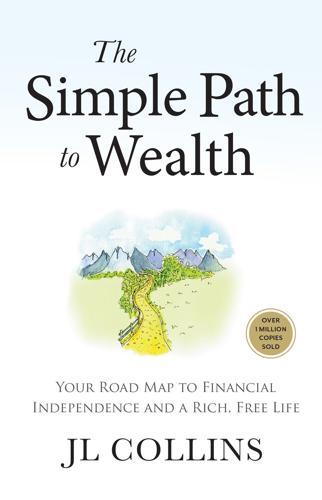
The Simple Path to Wealth (Revised & Expanded 2025 Edition): Your Road Map to Financial Independence and a Rich, Free Life
by
JL Collins
In the online comments for the article, a reader named Patrick nailed the flaw: “So, markets are efficient except when they’re not. And buy and hold doesn’t work because most people don’t stick to it at the wrong time. OK wisdom, but is this news?” Gold star, Patrick. Worse still is the professor’s recommendation to hold “the entire spectrum of investment opportunities.” This is his solution to dealing with the new investing world his “adaptive markets hypothesis” implies? Seems odd, since he contends “buy and hold” no longer works, to suggest investors buy and hold nearly every asset class imaginable. Huh? Let’s accept the professor’s premise that markets have gotten more volatile and will likely stay that way.
…
In the interview, the professor contends that the long-held theory of efficient markets—which says existing share prices almost instantly incorporate and reflect all relevant information—is morphing into what he calls the “adaptive markets hypothesis.” The idea is that with new trading technologies, the market has become faster moving and more volatile. That means greater risk. True enough, and so far, so good. But he goes on to say this means “buy and hold investing doesn’t work anymore.” The magazine interviewer then points out—and good for him—that even during the “lost decade” of the 2000s, the buy-and-hold strategy of stock investing would have returned 4%. The professor responds, “Think about how that person earned 4%. He lost 30%, saw a big bounce back, and so on, and the compound rate of return . . . was 4%. But most investors did not wait for the dust to settle.

Investing Amid Low Expected Returns: Making the Most When Markets Offer the Least
by
Antti Ilmanen
Published 24 Feb 2022
Now comes the bad news. When we measure the historical success of market timing strategies based on this information, the results are downright disappointing. Figure 16.4 shows the cumulative performance of a simple contrarian market timing strategy and a buy-and-hold strategy on the S&P500, as well as the relative performance between the two. Market timing did mildly beat buy-and-hold over 120 years, but just not in our lifetime! More recently, a mainly bearish timing signal would have left investors on the wrong side of a multi-decade bull market. When I first saw this evidence about a decade ago, I thought there was a spreadsheet error.
…
Ilmanen-Maloney (2016) presents a typical five-asset-class case (unlevered domestic and international equities and bonds, plus commodities as an alts proxy) and assesses the empirical impact of various rebalancing methods over four decades. All rebalancing methods seem to improve performance compared to a buy-and-hold portfolio. Some trade-offs are evident: Fast rebalancing, say monthly full rebalancing, would ensure tight adherence to allocation targets, but at meaningful trading costs. More patient rebalancing, say yearly, would let the portfolio weights drift further away from the target, but this would improve historical performance somewhat by allowing momentum to play out.
…
Taking more active risk increases the chance of both positive and negative outcomes. 10 The misunderstanding that picking winners is easy or essential for good investing has been reinforced by a misreading of a recent Bessembinder (2018) article. This study found that the majority (58%) of US common stocks since 1926 have lifetime buy-and-hold returns less than one-month T-bills. In terms of lifetime dollar wealth creation, the best-performing 4% of listed companies explain the net gain for the entire US stock market since 1926, since other stocks collectively matched T-bills. Some readers interpret that these results validate concentrated picking of lottery-like winners (good luck trying!).
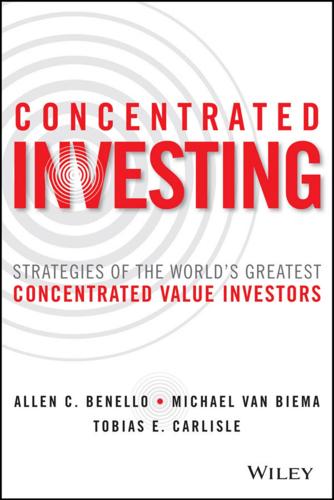
Concentrated Investing
by
Allen C. Benello
Published 7 Dec 2016
He had lectured at Cambridge on the stock market in 1910, describing it as “essentially a practical subject, which cannot properly be taught by book or lecture,” about which “I myself have no practical experience of the questions involved.”19 He was given his first taste of finance when in 1911, he was appointed to King’s College’s Estates Committee, which was tasked with managing the college’s property and funds. The Estates Committee held King’s College’s non–real estate assets largely in cash. Keynes pushed to invest the money, which meant, at the time, buying and holding bonds.20 The stock market was out of the question. It was regarded as the province of the individual investor, and common stocks were not regarded as institutional assets.21 Keynes had no inherited wealth, and he was not well paid as a junior clerk. He started making money lecturing and tutoring private students at Cambridge.
…
From 1930 to 1939, 22 percent of the portfolio was dedicated to U.K. preference shares and U.S. preferred stock, and 20 percent from 1940 to 1946.64 Like Lou Simpson would 50 years later in the United States, Keynes revolutionized insurance investment management in the United Kingdom. Before Keynes, institutional investing meant buying and holding bonds and real estate. U.K. institutions had only 3 percent of their assets in stocks in 1920 and only 10 percent by 1937.65 As he had with King’s College’s discretionary portfolios, though he held considerably less sway, Keynes pushed two British insurance companies he was involved with to shift into equities.
…
Chambers et al. note that his subsequent improvement in returns was a result of his “no longer having to make top‐down asset allocation decisions which compromised his stock‐picking instincts” because “he could now take greater care in timing the purchases of those stocks he liked.” The portfolio he managed for King’s College outshone the market throughout the 1930s, except for the crash of 1938, when he lost two‐thirds of his fortune. It quickly recovered. His shift to long‐term buy‐and‐hold value investing allowed him to maintain his commitment to his holdings when the market fell sharply in 1938, his final test. In so doing, he provides an excellent example of the natural advantages that accrue to investors with a long‐term focus, who are able to behave in a contrarian manner during economic and financial market downturns.

Personal Investing: The Missing Manual
by
Bonnie Biafore
,
Amy E. Buttell
and
Carol Fabbri
Published 24 May 2010
The interest rate a bond pays doesn’t change once the bond is issued. Even if the company that issues the bond does spectacularly well, you still earn the 58 Chapter 4 original interest rate. For example, a $1,000 bond with a 6% interest rate pays $60 in interest each year until the bond matures. That’s one attraction of buying and holding a bond: Your return may be lower than what you’d earn from investing in stock, but you know what your return will be all along. Although most investors stick with bonds purely as income investments, you can make money with bonds in another way. Although a bond’s interest rate doesn’t change, its price can.
…
Stocks you trade frequently, which results in capital gains. 68 Chapter 4 Low-turnover stock funds, such as index funds. ETFs, which don’t have to sell investments to meet redemption requests the way mutual funds do. Tax-managed funds, which invest with an eye toward reducing taxes. Stocks with low or no dividends. Stocks you tend to buy and hold onto, because you don’t pay capital gains until you sell, and then they’re long-term capital gains. Investments to hold in a tax-advantaged account Investments to hold in a taxable account Bonds and Bond Funds Regular bonds and highyield bonds, because they produce current income taxed at ordinary incometax rates.
…
For example, if you’re saving for a short-term goal, stocks may be too risky, so you put your money in bonds or bond funds, or in a savings account. Or you may be saving for a goal that doesn’t have a tax-advantaged account option. Don’t worry. Although you shouldn’t make investment decisions purely to avoid paying taxes, you can keep your investment taxes low with the following tactics: • Buy and hold individual stocks and bonds instead of stock or bond funds. You don’t pay capital gains on individual stocks and bonds until you sell them; fund managers may trade within stock or bond funds frequently, and you pay taxes on any gains from those trades. Sell individual securities in taxable accounts only to rebalance your asset allocation or because an investment hasn’t panned out as you hoped. • Buy municipal-bond funds or municipal bonds.

The Art of Execution: How the World's Best Investors Get It Wrong and Still Make Millions
by
Lee Freeman-Shor
Published 8 Sep 2015
A Hunter bought the stock on 13 June 2006, at an initial price of £9.02 per share. Despite holding out through the credit crunch, this Hunter subsequently sold his entire stake five years later on 1 September 2011 with the shares trading at £7.06 per share. Had he done nothing, his patience as a buy-and-hold investor would not have been rewarded and he would have realised a loss of 22%. So much for the saying, ‘Time is your friend when losing’. Fortunately, the Hunter had bought more shares in the company when they fell in price during that period. This reduced the average book price of his shares to £5.66 per share and meant that when he did sell he realised a profit of 19% and not a loss of 22%.
…
The Hunter adopts the three-bites-at-the-cherry approach to investing, which means that he initially invests a third of the total amount he is willing to invest in the stock. If the price falls beyond a certain threshold, he invests another third. If the price falls yet further, he will deploy his final third of remaining capital in the stock. The Rabbit invests his entire stake, $900, in one go and adopts a buy-and-hold approach. The Assassin also invests his entire stake of $900 in one go but will only keep holding it if it doesn’t hit the stop-loss set at 25% below his original purchase price. Here is an overview of each strategy over the next four years: Rabbit’s P&L Year Share price Shares bought Shares sold Total book cost Average price paid Profit or loss 2011 $100 9 0 $900 $100 $0 2012 $75 0 0 $900 $100 -$225 2013 $50 0 0 $900 $100 -$450 2014 $90 0 0 $900 $100 -$90 Overall profit or loss -$90 Assassin’s p&l Year Share price Shares bought Shares sold Total book cost Average price paid Profit or loss 2011 $100 9 0 $900 $100 $0 2012 $75 0 9 $900 $100 -$225 2013 $50 0 0 $900 $100 -$225?
…
If you read one of its strategy documents you will see that its goal is to be Thailand’s main consumer bank. A Connoisseur initiated a position in Kasikornbank on 20 June 2008 when the shares traded at the equivalent of £1.09 per share. He sold two years later on 1 November 2010 with the shares trading at £2.65 per share. On a buy-and-hold basis this represented a return of 143%, but the investor’s trimming meant that his average sell price was £1.88 per share. Thus, when he eventually sold out completely he had made a profit of 79%. DATA POINT: Dealing with losses Remember, despite their successful approach, only one-in-three of the Connoisseurs’ ideas made money.
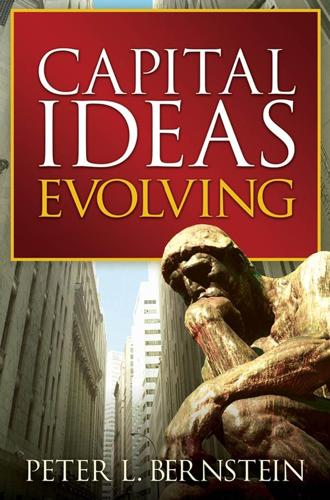
Capital Ideas Evolving
by
Peter L. Bernstein
Published 3 May 2007
The manuscript turned into Inside the Yield Book: New Tools for Bond Market Strategy, published in 1972 by PrenticeHall and the New York Institute of Finance.2 The very notion of a bond market strategy was revolutionary in a field where, as I mentioned earlier, bonds had been traditionally bought on a buy-and-hold basis. Active management of bond portfolios followed quickly in the wake of the book’s publication, while buy-and-hold almost vanished. The bond market has never been the same, and fixed-income investing has become more elaborate, more complex, more challenging— and often more risky—than the stock market. Thanks to the work of Homer and Leibowitz, theory now played an important role in helping to transform the practice of bond management in ways no one had in any way anticipated.
…
During this period, the aggregate portfolio of corporations, dealers, foreigners, and mutual funds showed annual gains of 1.5 percent over and above the gains they would have made just from the rise or fall of bern_c04.qxd 3/23/07 9:02 AM Page 57 Robert C. Merton 57 the market as a whole. Individuals, on the other hand, had disastrous results. Their returns from trading were 3.8 percent a year lower than if they had just invested on a buy-and-hold basis. The absolute magnitude of that number is astonishing: It is equal to 2.2 percent of Taiwan’s nominal GDP during 1995–1999, or nearly as much as total consumer spending on clothing and footwear in Taiwan. This weird and persistent form of market behavior evokes what Daniel Kahneman has had to say on these phenomena in a more general sense: “It is quite remarkable that you have those individuals losing money, and there seems to be an endless supply of individuals, because this is not a transitory phenomenon.
…
In this role, investors who use their cash to buy assets with future cash f lows are giving the sellers of those assets the option of realizing in the present the discounted value of those future cash f lows. But something more profound is going on. In this kind of role, financial markets are a time machine that allows selling investors to compress the future into the present and buying investors to stretch the present into the future. Without financial markets, all assets would be buy-and-hold, and the cost of capital would be an order of magnitude higher than it is today. Some of these kinds of transactions arise because one side or the other sees an opportunity to buy a bargain or to sell an overpriced asset. Either way, the seller is compressing the future into the present by raising cash, while the buyer is stretching the present into the future by committing cash.
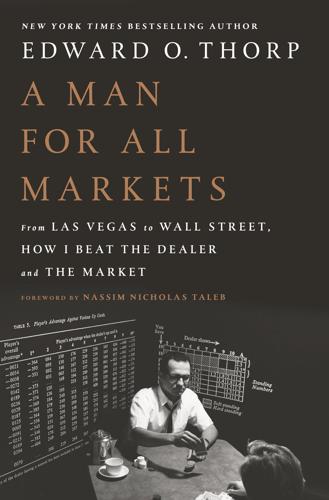
A Man for All Markets
by
Edward O. Thorp
Published 15 Nov 2016
In fact, their costs may be even less than those of indexers. If such a buy-and-hold investor were, for instance, to choose stocks at random, purchasing an amount of each proportional to its market capitalization, we could show, by reasoning like that used to prove Sharpe’s Principle, that the expected return is the same as for the index from which the stocks were chosen minus the presumably small costs of acquiring the stocks. The main disadvantage to buy-and-hold versus indexing is the added risk. In gambling terms, the return to buy-and-hold is like that from buying the index then adding random gains or losses by repeatedly flipping a coin.
…
Nobel Prize–winning economist Paul Krugman disagrees sharply, arguing that high-frequency trading is simply a way of taking wealth from ordinary investors, serves no useful purpose, and wastes national wealth because the resources consumed create no social good. Since the more the rest of us trade the more we as a group lose to the computers, here’s one more reason to buy and hold rather than trade, unless you have a big enough edge. Although it’s politically not likely, a small federal tax, averaging a few cents a share on every purchase, could eliminate these traders and their profits, possibly saving more for investors than the extra tax, and adding cash to the US Treasury.
…
In gambling terms, the return to buy-and-hold is like that from buying the index then adding random gains or losses by repeatedly flipping a coin. However, with a holding of twenty or so stocks spread out over different industries, this extra risk tends to be small. The threat to a buy-and-hold program is the investor himself. Following his stocks and listening to stories and advice about them can lead to trading actively, producing on average the inferior results about which I’ve warned. Buying an index avoids this trap. For another way to look at index investing, suppose the same percentage of each US stock were put into a low-cost index fund and all the rest went into a giant pool actively managed by the world’s best managers.
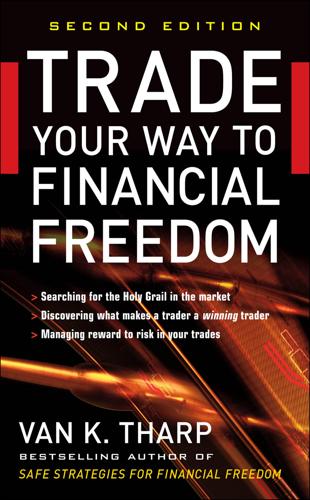
Trade Your Way to Financial Freedom
by
van K. Tharp
Published 1 Jan 1998
TABLE 6.1 Primary Bull Markets According to market historian Michael Alexander, we have had many such cycles during the last 200 years. Table 6.1 shows a listing of primary bull markets. On the average, these bull markets tend to last about 15 years, and investors who buy and hold the major averages earn about 13.2 percent per year. These bull markets lasted 103 years of this 200-year period. Unfortunately, for people who believe in buying and holding stocks, primary bull markets tend to be followed by primary bear markets. These are major shakeouts, which tend to correct the excesses of the bull market. The United States is now in such a primary bear market, which began in early 2000.
…
Colby and Meyers, in their Encyclopedia of Technical Market Indicators,13 found that the strategy of buying stock when the price crossed above the one-year average and selling it when it crossed below that average outperformed a buy-and-hold strategy by a large margin. The strategy of buying stock when the price crossed above the one-year average and selling it when it crossed below that average outperformed a buy-and-hold strategy by a large margin. Short moving averages, in contrast, are quick moving. A market does not have to go up too many days for the price to be above its five-day moving average. Similarly, prices could quickly drop below that average.
…
Many mutual funds also have a sales load when you buy or sell your fund. These fees are paid by you. Thus, the costs of investing in funds that are actively managed are huge. According to Baer and Gensler, these fees are the primary reason that actively managed mutual funds cannot outperform a passive fund that simply buys and holds a major stock index. There are also several drawbacks to mutual funds that Baer and Gensler do not point out: • First, mutual funds control much of the stock market through their ownership. Most of them tend to invest in the large blue-chip companies of Wall Street, partially because these are the most liquid.

The Smartest Investment Book You'll Ever Read: The Simple, Stress-Free Way to Reach Your Investment Goals
by
Daniel R. Solin
Published 7 Nov 2006
Instead, small investors should pool their money into a mutual fund, where a "professional" money manager buys and sells the stocks for them, in large blocks, 28 Your Broker or Advisor Is Keeping You from Being a Smart Investor with much lower commissions than an individual investor could get. In this way, the investor can "buy and hold" a good mutual fund, and the fund manager can indulge his or her illusive goal of beating the markets through stock picking and market timing. Nice theory. But today hyperactive brokers and advisors often recom~ mend that their diems sell old mutual funds and invest in the next "hot" fund. This way, these "investment professionals" can continue to generate sales commissions.
…
Al l we know is that it is unlikely that he or she will be "hot" for long. Hyperactive Investors typically hold a mutual fund in their portfolio for four years or less. Why do they switch funds? After all, as I previously noted, the concept of a mutual fund was to allow small investors who didn't have time to research investments and pick their own stocks to "buy and hold" a fund and let the "invesunent professional" do the stock picking. Hyperactive Investors switch funds because they are convinced by the fi nancial media or by their hyperactive broker or advisor that they can do better in a "hot" mutual fund run by a "hot" mutual fund manager. And the coveted Morningstar five-star rating is freq uently what convinces these investors to sell lower-rated funds and buy the newly designated ones rated "five stars."
…
153 Here is what Burton Malkid has to say about charting (wh ich he likens to "alchemy") in his sem inal book, A Random Walk Down Wall Strut, (p. 165): "There has been a rematkable unjformity in the conclusions of studies done on all forms of technical ana1ysis. Not one has consistently outperformed the placebo of a buy-and-hold strategy. Technical methods cannot be used to make useful investment strategies ... Ma1kiel believes that chartistS simply provide cover fo r hyperactive brokers to encourage more trading-generating more fees-by their unsuspecting clients. It is notewonhy that, in February 2005, C itigroup fired its entire techn ical analysis group.
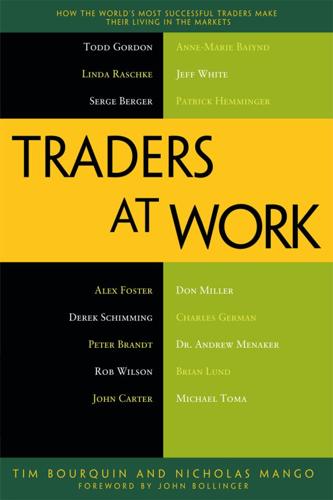
Traders at Work: How the World's Most Successful Traders Make Their Living in the Markets
by
Tim Bourquin
and
Nicholas Mango
Published 26 Dec 2012
It has been a long time since those days of bull market glory. The S&P 500 has barely changed from its peak value in 1998, even though 14 years have passed. The entire idea of buy and hold has been discredited, leaving a generation of investors looking for the 10 percent annual gains they were supposedly “entitled” to bitterly disappointed. For more than a decade, it has been crystal clear that trading is not an impossibility or a luxury; it is a necessity if you want to make money in the financial markets. The whole buy-and-hold concept was a joke to begin with. There simply is no free lunch. Investing and trading are work—hard work that pays well.
…
People said to me, “Well, we are in it for the long term,” but my view is that the long term is built upon shorter-term trades that can be managed on a long-term basis, though more on a tactical scale. So, although the strategic view is focusing on the long term, short-term trades can get you there better than just a buy-and-hold approach. After that, I talked to people about making trades for them and giving advice, and then I talked to an advisor who explained to me that it was easy to get into business and still be independent. One of my biggest hang-ups was that I didn’t want to work for a big brokerage house because I wanted more flexibility and to not have to push proprietary products or funds.
…
Bourquin: How do you make money while managing other people’s money? Is it a percentage of gains, a flat rate, or something else? Foster: For me, it’s just a straight percentage of assets, and it varies, depending on how active I am in the account. If, for example, a client is interested in a more passive account that mainly employs a buy-and-hold approach and for which major market changes would only result in changes to a smaller percentage of the account—that would be a 1.25 percent fee. Some accounts are totally active, where clients have more money with a big brokerage house, but they want to manage a portion of their account with me using what they call “play money.”

I Will Teach You To Be Rich
by
Sethi, Ramit
Published 22 Mar 2009
When I hear people talk about the stocks they bought, sold, or shorted last week, I realize that my investment style sounds pretty boring: “Well, I bought a few good funds five years ago and haven’t done anything since, except buy more on an automatic schedule.” But investment isn’t about being sexy—it’s about making money, and when you look at investment literature, buy-and-hold investing wins over the long term, every time. Forget what that money TV station or finance magazine says about the stock-of-the-month. Do some analysis, make your decision, and then reevaluate your investment every six months or so. It’s not as sexy as those guys in red coats shouting and waving their hands on TV, but as an individual investor, you’ll get far greater returns.
…
Most people who buy a stock and make $10,000 in nine months and stupidly decide to sell it really pocket only $7,500. If, however, you hold your investment for more than a year, you’ll pay only a capital-gains tax, which in most cases is currently 15 percent (depending on your income, it could even be less). This is a strong incentive to buy and hold for the long term. In the above example of a $10,000 gain, if you sold it after one year and were taxed at 15 percent, you’d pocket $8,500. Here’s the trick: If you’ve invested within a tax-advantaged retirement account, you don’t have to pay taxes in the year that you sell your investment. In a 401(k), which is tax deferred, you’ll pay taxes much later when you withdraw your money.
…
In a Roth IRA, by contrast, you’ve already paid taxes on the money you contribute, so when you withdraw, you won’t pay taxes at all. Since you presumably made a good investment, why not hold it for the long term? In Chapter 6, we covered how people can’t time the market. In Chapter 3, I showed you how buy-and-hold investing produces dramatically higher returns than frequent trading. And once you’ve factored in taxes, the odds are stacked against you if you sell. This is yet another argument for not buying individual stocks, and instead using lifecycle funds or index funds to create a tax-efficient, simple portfolio.

The Power of Passive Investing: More Wealth With Less Work
by
Richard A. Ferri
Published 4 Nov 2010
Assume three investors each start to invest in January 2000 with a portfolio of 45 percent in U.S. stocks as represented by the S&P 500, 15 percent in international stocks as represented by the MSCI EAFE Index, and 40 percent in bonds as represented by the Barclays Capital Aggregate Bond Index. One investor uses tactical asset allocation in an attempt to beat the markets and underperforms them by 1 percent annually. The second uses a buy-and-hold strategy and lets the portfolio sit over the 10-year period, thereby earning market returns. The third investor rebalances every year for 10 years and thereby outperforms the tactical asset allocator and the buy-and-hold investor. Figure 8.4 illustrates the outcomes. Figure 8.4 The Benefit from a Strategic Asset Allocation 2000–2009 The rebalanced portfolio in Figure 8.4 picked up an excess compounded return of 0.9 percentage points over the market portfolio that wasn’t rebalanced during the last decade.
…
HG4530.F428 2010 332.63'27—dc22 2010028567 Foreword In The Power of Passive Investing, Rick Ferri has given us a comprehensive guide to what is proving to be a virtual revolution in investment strategy. Up until the 1980s, “stock picking” was the dominant method of investing by individual investors. Then, through the 1990s, professional investment supervision through actively managed mutual funds was ascendant. But, gradually, index investing—buying and holding a portfolio representing the entire stock (or bond) market, or various sectors of those markets—has attracted the most attention (and dollars) from investors. Rick’s book begins with the historical background of index funds. As one who was present at the creation of the first index mutual fund in December 1975, I can attest to the accuracy of his chronology.
…
There’s no academic evidence supporting the notion that active management has paid off in the long run, no way of telling which stocks have good fundamentals for investment purposes, and no research supporting the ridiculous notion that more diversification is imprudent overdiversification! But it doesn’t stop there. The same attorneys then say that “if you blindly throw money at index funds, then you should at least hold more than the 500 stocks in the S&P 500. . . . A trustee, for example, might consider a long-term buy and hold investment strategy using two index funds, one that tracks the Standard and Poor’s 500 Index and the other that tracks the Nasdaq-100 Index.”16 This advice shows poor knowledge of indexing methods. The S&P 500 primarily holds large U.S. stocks from all U.S. exchanges and NASDAQ-100 represents the largest 100 companies that trade mainly on the Nasdaq market, excluding financial firms.

The End of Accounting and the Path Forward for Investors and Managers (Wiley Finance)
by
Feng Gu
Published 26 Jun 2016
The unique contribution of a given information source in a calendar year is measured by the partial R2 associated with the information source for the year. The procedure for computing the partial R2 s for financial (accounting) reports—source no. 1—is illustrated as follows: First, for each quarter, the quarterly buy-and-hold abnormal return of a firm’s shares (CAR) is regressed on the three-day buy-and-hold abnormal 48 MATTER OF FACT returns associated with each of the three following types of events (information sources): corporate (nonaccounting) SEC filings (CAR_SEC), analysts’ forecasts (CAR_AF), and managers’ forecasts (CAR_MF), that is, the nonaccounting events occurring during the calendar quarter.
…
The cross-sectional regression model is as follows (pooling across quarters of the year): CARjt = at + bt CAR_SECjt + ct CAR_AFjt + dt CAR_MFjt + 𝜀jt , (4.1) where j and t are firm and year subscripts, respectively. The residual of this regression is 𝜀jt . Second, the three-day buy-and-hold abnormal returns associated with the firm’s financial accounting reports released during the calendar quarter (CAR_FAR) are regressed on the three-day buy-and-hold abnormal returns associated with the three nonaccounting events: corporate (nonaccounting) SEC filings (CAR_SEC), analysts’ forecasts (CAR_AF), and managers’ forecasts (CAR_MF). The regression model is as follows (pooling across quarters): CAR_FARjt = 𝛼t + 𝛽t CAR_SECjt + 𝜒t CAR_AFjt + 𝛿t CAR_MFjt + 𝜌jt , (4.2) The residual of this regression is 𝜌jt .
…
See Public Company Accounting Oversight Board Penetration gains 139 Pepsi 88 Performance measures, annual median absolute prediction error 54–55 Pfizer company strategy 164 competitors 120 credit, enhanced transparency 202 drug launch 169–170 earnings conference calls, Q&A section 201 expected financials, earnings conference call 16 FDA decisions, impact 200 first-in-class product 169–170 growth prospects 78 Johnson & Johnson’s, comparison 165 joint development 168 SUBJECT INDEX patents 78, 88 pipeline-related questions, number/percentage 202f product pipeline, 10-K disclosure enhancements 209t R&D expenses 165 response (analyst pipeline questions) 200–201 restructuring cost 108 ROE 84–85 sales, expiration 164–165 10-K filings 200–201 transparency, enhancement 202 Pharmaceutics, Strategic Resources & Consequences Report 163, 167f Physical capital 82 Pipeline exposé, reasons 201–203 pipeline-related questions, number/percentage 202f questions, Pfizer response 200–201 test data, usefulness 170–171 Policies-in-force data 150 Post-financial crisis 19 Premium prices, charging 234 Price to earnings ratio (P/E ratio) 53, 232 Procter & Gamble, consumer product business 88 Product pipeline 170–173, 233 candidates 172f enhancements 209t Products growth 139 launch 105 Profitability maintenance 150–151 measures 78 ratios, inflation 216 Progressive advertising 147 year-on-year revenue growth reports 157 Property and casualty (PC) business risk 147 Subject Index Property and casualty (PC) firms, dominance 147 Property and casualty (PC) insurance, Strategic Resources & Consequences Report 146, 160f sector synopsis 147–148 Proposed information, elicitation process 199–200 Prosensa Holding NV, drug failure 104 Public companies financial analyst tracking 63 vintage year, accounting relevance (decrease) 89f Public Company Accounting Oversight Board (PCAOB), enforcement actions 56 Quantitative easing 32–33 Fed termination 54 Quarterly buy-and-hold abnormal return 47–48 Quarterly earnings releases 44 Quarterly reporting, elimination (consideration) 207 R2 . See Adjusted coefficient of variation Real assets 82 Real estate sales, turnover 97 Regression analysis, example 33–34 Regulation Fair Disclosure 45 Regulatory burden, lightening 206–208 Regulatory risk 158 Reinsurance 147 Reinsurers, company exposure 153 Relevance, loss 77 Reported earnings components 149 release 46 understatement 216 Reported financial information, role (documentation) 37–38 Reporting.
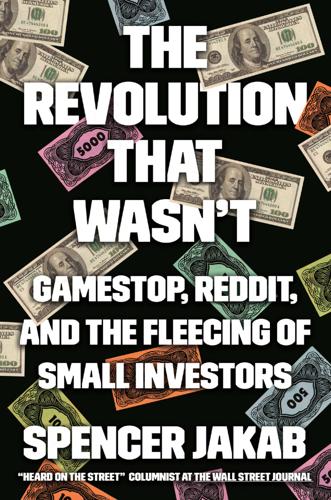
The Revolution That Wasn't: GameStop, Reddit, and the Fleecing of Small Investors
by
Spencer Jakab
Published 1 Feb 2022
Zero-dollar commissions played a big role in that extraordinary surge, and brokers actually saw their profits rise rather than fall. “When something is free, it changes business incentives and consumer psychology,” says Dan Egan, a behavioral finance expert who works for low-cost robo-adviser Betterment.[6] Of course for those customers inclined to buy and hold—and there were many of them—the elimination of commissions saved them a little bit of money and made it possible to get on the investing ladder with a small amount of savings. “Most of their customers aren’t pattern day traders at all,” says Wharton School marketing professor Cait Lamberton.
…
Back during the dot-com era, retail investors almost never got access to a hot deal and were instead forced to buy stocks as soon as they began trading at a much higher price. The results were not good. Following the period that still holds the record for biggest first-day IPO pops, 1999 and 2000, the three-year buy-and-hold return of IPOs was negative 53 percent, according to Jay Ritter, a professor at the University of Florida. Being able to buy shares at their offering price and quickly sell them in an IPO was like being handed an almost-surefire winner, but the privilege was reserved for favored clients, including executives of companies with whom big banks sought future business.
…
Even for those who had lost money, the stock market at that juncture seemed more like a casino where the pit boss was on an extended lunch break and the house appeared to no longer have the edge. Why not keep on rolling the dice until he comes back? Maybe he never will? He always comes back. Even people who make conservative investments such as buying and holding index funds will endure some big losses in the market. It is the psychological pain of those losses and the occasionally uncomfortable volatility that make stocks such good investments in the long run—returns have to be high enough to compensate you for the stress of holding on. Novice investors who followed the recommendations of those with the funniest memes were setting themselves up for financial failure.
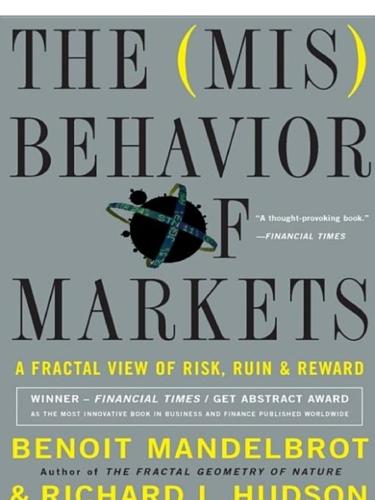
The Misbehavior of Markets: A Fractal View of Financial Turbulence
by
Benoit Mandelbrot
and
Richard L. Hudson
Published 7 Mar 2006
They are price-takers, not makers. They are like the molecules in the perfect, idealized gas of a physicist: identical and individually negligible. An equation that describes one such investor can be recycled to describe all. Reality: Patently, people are not alike—even if differences in wealth are disregarded. Some buy and hold stocks for twenty years, for a pension fund; others flip stocks daily, speculating on the Internet. Some are “value” investors who look for stocks in good companies temporarily out of fashion; others are “growth” investors who try to catch a ride on rising rockets. Once you drop the assumption of homogeneity, new and complicated things happen in your mathematical models of the market.
…
From the very beginning, in 1963, some economists had pointed out that the degree of wildness—the fatness of the tails—appeared to diminish as you looked at returns over longer and longer time-periods, from a day to a year to a decade. The common wisdom in economics was, and in some circles still is, that I may be right that daily or weekly prices do not follow the standard model, but who cares? Most people, goes the argument, buy and hold for months, years, or decades—and in those time-scales, the conventional models work just fine. There is a fallacy in this, of course. Most people also do not contract HIV and then develop AIDS, but the few percent who do get it are very glad that the pharmaceutical industry has taken the time and expense to develop the necessary drugs to keep them alive longer.
…
Put another way, 46 percent of the damage to dollar investors happened on 0.21 percent of the days. Similar statistics apply in other markets. In the 1980s, fully 40 percent of the positive returns from the Standard & Poor’s 500 index came during ten days—about 0.5 percent of the time. What is an investor to do? Brokers often advise their clients to buy and hold. Focus on the average annual increases in stock prices, they say. Do not try to “time the market,” seeking the golden moment to buy or sell. But this is wishful thinking. What matters is the particular, not the average. Some of the most successful investors are those who did, in fact, get the timing right.
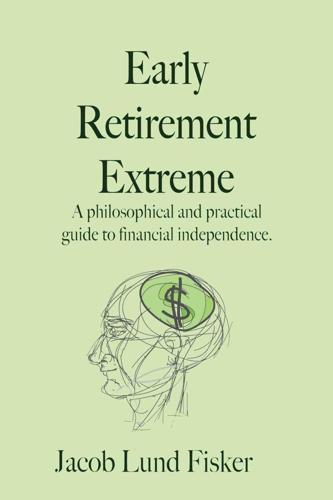
Early Retirement Extreme
by
Jacob Lund Fisker
Published 30 Sep 2010
Since the risk-reward profiles of most, but not all fund advisors are skewed--that is, fail conventionally and you're okay; fail unconventionally and you're fired; win conventionally and you're okay; win unconventionally and you're a genius--mutual fund advisors that wish to keep their jobs tend to flock together and behave like a herd. This has resulted in the growing popularity of "buy and hold" index funds, which simply mimic what everybody else is doing, on average, at less cost. Of course, the emerging behavior of such a strategy is eventual chaos, as nobody leads and everybody follows each other. Buy and hold is an investment strategy with no exit strategy. What this typically means is that stocks are usually liquidated when money is needed, rather than taking into account when a given stock is overvalued.
…
Of course, this is only accurate if the future repeats the past numbers. Still, plotting for all possible historical periods shows how things have played out historically. This exercise can be repeated for different markets (domestic equity, international equity, commodities, real estate, timber, etc.) and for different investment methods (buy and hold, dividends, Dogs of the Dow, etc.). It will, however, quickly become clear that there are limits to how much the model can be fitted to the data. The objective of this exercise isn't to get a numerical value, but to get a sense of possible future scenarios, assuming that the future will likely repeat the past in one way or another.
…
Note that this result includes a significant two-decade-long bull market between 1983 and 2000. Other times, it has been flat for decades. In the periods 1905-1942, 1965-1983 and 2000-2007 market return was either zero or negative. Some of these periods are really long! If the investment strategy relies on capital gains, as it does in a buy and hold strategy, this will lead to failure if the withdrawal rate is too high during years of decline, as too much stock will be liquidated when the market is low. Monte Carlo simulations suggest that a withdrawal rate of 4% is good for 30 years of inflation-adjusted expenses and that a withdrawal rate of 3% is good for 60 years or more.
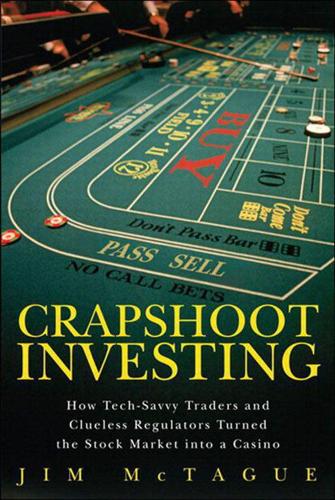
Crapshoot Investing: How Tech-Savvy Traders and Clueless Regulators Turned the Stock Market Into a Casino
by
Jim McTague
Published 1 Mar 2011
Source: Birinyi Associates The market’s intraday swings were particularly unnerving during the 146 trading days between October 1, 2008 and March 31, 2009.3 Retail investors typically invest first thing in the morning, at the market opening. On these wild days, their newly purchased shares often dropped significantly in value by the time the market closed at 4 p.m. EST. Consequently, equity investors began to lose that old-time, buy-and-hold religion and became risk adverse to the extreme. No item of bad news was ignored; no piece of good news was accepted uncritically. No new money was flowing into the stock market, either. “It’s a show me market,” said Robert Doll, the chief equity strategist at BlackRock Inc. “Fresh in everybody’s mind is the carnage of late 2008 and 2009.
…
Those retail investors who stayed in the market were playing the momentum game, not investing. They wanted to go with the flow, to ride the trend. Thus, they were inclined to buy stock-index futures, options, and ETFs that mimicked the S&P 500 or specific sectors of the economy. As far as the small investor was concerned, the classic buy-and-hold strategy had been a big bust. The market was a lightning-fast roller coaster, and you had to sell at the top of the hill before the market took you screaming to the bottom. Even if an investor had wanted to buy stocks the old-fashioned way—by pouring over its financials and weighing the informed opinions of star analysts—he would have found himself at a disadvantage compared to times gone by.
…
Stock investing in the short-run is risky, Kay says, because of the sharp, violent swings caused by HFT and due to the movements of exchange-traded funds (ETFs), which will cause the underlying securities held by these funds to bounce around quite a bit. But, like McCaughan, Kay believes that the short-term swings will not injure long-term investors who buy and hold stocks for five years or longer. Gary Gastineau, a principal at ETF Consultants, Summit, New Jersey, recommends long-term investments in ETFs. He believes that the circuit breakers instituted by the Securities and Exchange Commission (SEC) and the Commodities Futures Trading Commission (CFTC) will protect investors from rapid declines due to correlation.
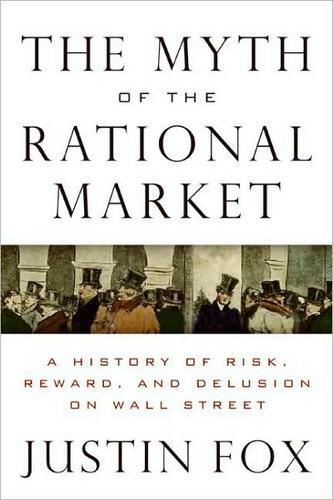
The Myth of the Rational Market: A History of Risk, Reward, and Delusion on Wall Street
by
Justin Fox
Published 29 May 2009
His roommate Ibbotson had entered the Ph.D. program in the Chicago Business School after getting an MBA from Indiana University in 1967 and struggling a bit in the business world. While still a grad student, Ibbotson got a part-time job managing the university’s bond portfolio. When it came to stocks, the Chicago approach encouraged formerly frenetic traders to buy and hold. Bond investing had long been all about buying and holding, but the high inflation of the 1970s made that untenable. Holding on to a bond paying 5 percent interest when inflation was 10 percent was equivalent to giving away money. Ibbotson, using analytical tools being developed or rediscovered on campus—Fred Macaulay’s formula for duration had just been unearthed by two Chicago professors—began buying and selling bonds and running rings around the market.
…
With the help of his staff and a Hollerith (IBM) punch card calculating machine, Cowles had examined the individual stock picks of sixteen statistical services, the investment record of twenty-five insurance companies, the stock market calls of twenty-four forecasting letters, and the Dow theory editorials of the only forecaster Cowles mentioned by name: William Peter Hamilton. Cowles’s verdict, delivered in a paper titled, “Can Stock Market Forecasters Forecast?” was that no, they can’t. An investor who had bought and sold when Hamilton instructed between December 1903 and December 1929 would have made 12 percent a year. Just buying and holding the Dow Jones industrial average would have delivered a return of 15.5 percent a year. Of the other forecasters, only a few had been able to beat the market and even those better-than-average performances were “little, if any, better than what might be expected to result from pure chance.”25 That last was no idle comment.
…
But why should anyone wish to sell such lucrative securities?2 Could a person take advantage of such mass delusions to make a killing? There can be no “foolproof system” to beat the market, Samuelson wrote in his textbook. But some approaches were better than others. He identified four classes of stock market players: (1) the buy and hold crowd, who do reasonably well as long as the economy grows; (2) “the hour-to-hour, day-to-day ticker watchers,” who mostly “make money only for their brokers”; (3) the market timers who try to take advantage of the changing moods of the investing public, and are sometimes successful at it; and finally (4) those who study companies closely enough to take advantage of “special situations” of which the investing public is not aware.
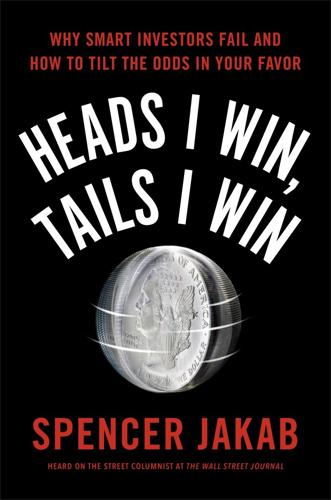
Heads I Win, Tails I Win
by
Spencer Jakab
Published 21 Jun 2016
Back in chapter 2, “Timing Isn’t Everything,” I laid out the very wide range of outcomes that the stock market presents. I emphasized that the future was unknowable. It still is, but you just saw that the market’s valuation can tell you a lot about your odds. In theory you could even use the CAPE in a way that would give the buy-and-hold crowd conniptions. Just for fun I did that in a column a few years ago, and I received more e-mails than for almost anything I had written on any subject. Its title was “Yes, Virginia, You Can Time the Stock Market!” With the caveat that there are better and easier ways to squeeze out extra return from stocks (I’ll discuss them later in the book).
…
A paper coauthored by Jason Hsu of the UCLA Anderson School of Management and colleagues, “Timing Poorly: A Guide to Generating Poor Returns While Investing in Successful Strategies,” measured the effect across the whole universe of stock mutual funds from 1991 to 2013 and showed some interesting results. The actual or dollar-weighted return on all funds during that period was 6.9 percent annually, while the buy-and-hold return—the one reported in those glossy mutual fund brochures—was 8.8 percent. Over that twenty-three-year period that nearly two percentage point drag would have seen a typical investor turn $10,000 into just $46,000 even as the published returns suggested that he or she could have made $70,000, or one and a half times as much.
…
Those numbers, which are the difference between a healthy return and living in the slums of Lake Moneybegone, are no fluke, and they don’t even include another major drag on returns: taxes. Short-term capital gains are higher than long-term ones, so frequent trading has to be more profitable than buy-and-hold investing to begin with. But another finding by the same researchers genuinely surprised me. They looked at ten thousand investors at a large discount broker and the subsequent performance of stocks investors bought versus the ones they sold. The average difference between them was negative 3.3 percent annually, and that was before counting transaction costs.

The Millionaire Fastlane: Crack the Code to Wealth and Live Rich for a Lifetime
by
Mj Demarco
Published 8 Nov 2010
Yet, you've been domesticated to believe that these tools accelerate wealth. Mutual funds, stocks, bonds, 401(k)s, dollar cost averaging, and compound interest are perfunctory stratagem for wealth acceleration in the Slowlane. Unfortunately, without control or leverage, they're impotent wealth accelerators. Buy-and-Hold Is Dead In college, I was taught “buy and hold” was the safe investment strategy that made millions. Buy stocks in solid companies, sit back and wait decades, and voila, I'd be awash with millions. They'd shove that graph in your face and say “A$10,000 Investment in XYZ Company in 1955 would be worth $5 million today!”
…
So how do you know you're being sold the Slowlane? The following lists the primary munitions indigenous to the Slowlane roadmap. Go to school Get good grades Graduate Pay yourself first Overtime Corporate ladder Save X% of your paycheck Contribute to your 401(k) Invest in mutual funds Buy and hold Paychecks, pensions, benefits Diversify Raise your insurance deductibles The stock market Say “no” to expensive lattes Be frugal Get out of debt Clip coupons Cancel your credit cards Dollar cost averaging Get an advanced degree Pay off your house early Your home is an asset Individual retirement accounts (IRAs) Live below your means Understand compound interest When you encounter these “buzz phrases,” be wary-someone is selling you the Slowlane as a total plan to wealth.
…
$698! With inflation, the real purchasing power is $500. My spare change bucket on my kitchen table was a better investment. Had I invested $1 million, I'd have lost more than $400,000. And this is the Slowlaner's anointed weapon of wealth? Hilarious! Millions worship the Slowlane roadmap with “buy and hold” as Main Street, a Main Street that is decades long, imperiled by hazards, and rarely routes to wealth. I recently heard a Slowlane prognosticator proclaim the effectiveness of “Get Rich Slow” by citing this tasty factoid: If at the end of 1940 you had invested $1,000 in the stocks of the S%P 500 you would now have $1,341,513.
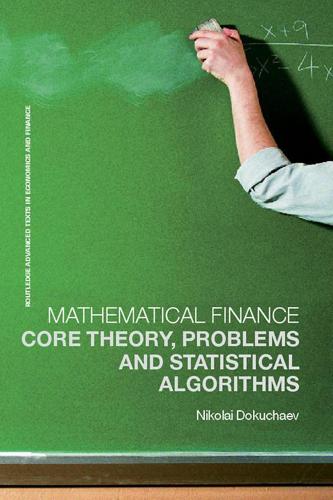
Mathematical Finance: Core Theory, Problems and Statistical Algorithms
by
Nikolai Dokuchaev
Published 24 Apr 2007
Remark 3.7 Similarly, we can consider a multistock market model, when St={Sit} and γt={γit} are vectors, and when the wealth is Xt=βtBt+∑i γitSit. Some strategies Example 3.8 A risk-free (‘keep-only bonds’) strategy is a strategy when the portfolio contains only the bonds, γt≡0, and the corresponding total wealth is Example 3.9 A buy-and-hold strategy is a strategy when γt>0 does not depend on time. This strategy ensures a gain when stock price is increasing. Example 3.10 A short position is the state of the portfolio when γt<0. This portfolio ensures a gain when stock price is decreasing. Example 3.11 A ‘doubling strategy’ is sometimes used by an aggressive gambler (for instance in the coin-tossing game).
…
Let us describe the resulting wealth for the constantly rebalanced portfolio given C. For simplicity, we assume that ρt≡1. Then Xt+1−Xt=γt(St+1−St)=γtStξt+1=CXtξt+1, © 2007 Nikolai Dokuchaev Discrete Time Market Models 27 i.e., For instance, let (S0, S1, S2, S3,…)=(1, 2, 1, 2, 1,…). It follows that Let X0=1. For the buy-and-hold strategy, the wealth is (X1, X2, X3,…)=(1, 2, 1, 2, 1,…). In contrast, the constantly rebalanced portfolio with gives the wealth of an exponential order of growth. (Of course, one cannot be sure that the stock prices will evolve in this specific way.) Problem 3.14 Consider a discrete time bond—stock market such that S0=1, S1=1.3, S2=1.1.
…
Remark 5.8 The case of r(t)≡0 corresponds to the market model with free borrowing. Some strategies Example 5.9 For risk-free, ‘keep-only-bonds’, the strategy is such that the portfolio contains only the bonds, γ(t)≡0, and the corresponding total wealth is © 2007 Nikolai Dokuchaev Mathematical Finance 78 Example 5.10 Buy-and-hold strategy is a strategy when γ(t)>0 does not depend on time. This strategy ensures a gain when the stock price is increasing. Example 5.11 Merton’s type strategy is a strategy in a closed-loop form when γ(t)=µ(t)θ(t)X(t), where µ(t)>0 is a coefficient, X(t) is the wealth, is the so-called market price of the risk process.
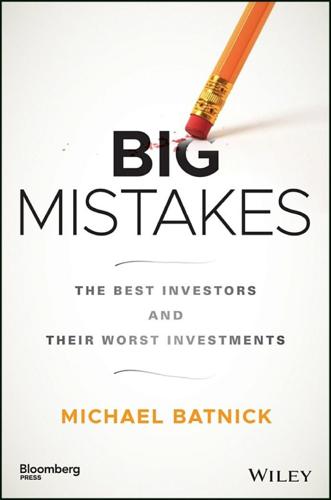
Big Mistakes: The Best Investors and Their Worst Investments
by
Michael Batnick
Published 21 May 2018
That's fine, you're still on the path to discovery. I know all about it. It took me around five years and nearly $20,000 in commissions to realize that I was not destined to be the next Paul Tudor Jones. I was too emotional to be a successful trader, which led me into the arms of Bogle's index funds. Not everybody can buy and hold an index fund – it can be grueling and difficult, rife with drawdowns and potentially decades with nothing to show for it. But warts and all, for me, this is the best way. Not everybody comes to this conclusion and that's okay. The important part is finding a methodology that you are comfortable with.
…
It's funny that despite his monstrous returns and his youth, two things that tend to favor the brash, Buffett's confidence level was kept in check. It's funnier still, that at 63, oozing with confidence, he would make the single costliest mistake of his investing career. The Oracle became the second wealthiest man in the world by buying and holding great businesses.7 In 1972, after arm wrestling with his partner Charlie Munger over the price, Berkshire Hathaway purchased See's Candy for $30 million. They could have paid multiples of the $25 million Buffett wanted to and done just fine, because See's Candy has generated $1.9 billion pretax since 1972.8 In 1983, Berkshire bought 90% of Nebraska Furniture Mart, for $55 million.
…
Things were so bad that Bill Ruane and Richard Cunniff almost shut it down in 1974.8 But they didn't, and with the help of Buffett's loyal acolytes, they persevered. The early investors that stuck with the fund have been handsomely rewarded. Sequoia has outperformed the S&P 500 by 2.6% a year for 47 years.9 $10,000 invested in July 1970 would have grown to nearly $4 million today. This is three times as much as one could have earned by buying and holding the S&P 500.10 Every investment strategy that doesn't deviate from its core tenets, whether its value or trend following or anything else, will have long periods of time where it looks and feels foolish. The dot‐com bubble was that period for all value investors, including Ruane & Cunniff.

Hedgehogging
by
Barton Biggs
Published 3 Jan 2005
When South Africa left the gold standard, he acquired shares in a South African gold mine run by an old friend. In the 1930s, when prices were deeply depressed, he also was a very successful buy-and-hold investor in art, manuscripts, and rare books. However, despite his good intentions, Keynes never really changed his ways. He was always a speculative and aggressive investor in the financial markets. He didn’t seem to realize that his use of leverage and the attacks of nerves he was prone to when prices were falling were inconsistent with his new buy-and-hold investment strategy. He also was not good at identifying irrational exuberance and market tops. He was to take another big hit in the 1937–1938 bear market.
…
His criteria require that they ccc_biggs_ch06_63-79.qxd 70 11/29/05 11:11 AM Page 70 HEDGEHOGGING also generate free cash flow so they can buy back their stock and raise the dividend. He argues that in a slow-growth, low-inflation, low-interest-rate world, stocks with these characteristics will have great scarcity value and will sell at very high P/Es, just as they did in the late 1950s and early 1960s. This has always been his investment style. Buy and hold great growth stocks. “My favorite holding period is forever,” he says with a wry smile.The only difficulty is that companies with these characteristics are hard to find and usually are very expensive. We talked about Pepsico. Fayez thinks its earnings can grow 12% per annum even though its revenue growth is more like 6% to 7% and it is in very competitive businesses.
…
Warren Buffett reveres him, although Buffett has expanded Graham’s definition of intrinsic value to include the intangible worth of a great franchise or ccc_biggs_ch17-239-246.qxd 242 11/29/05 7:05 AM Page 242 HEDGEHOGGING brand. The sheer size of the Berkshire portfolio has forced him to become a buy-and-hold value investor, although that may be an investment oxymoron. Buffett says he likes to buy good companies at great prices. He likes businesses with products he can understand that generate free cash flow. Because technology stocks meet neither criterion, he has never owned them. Ben Graham preached that you always want to buy a common stock (or a corporate bond for that matter) with a margin of safety.That margin relates to the liquidating value of the assets of the company (the price an informed businessperson would pay) being well above the price you are paying for the stock.
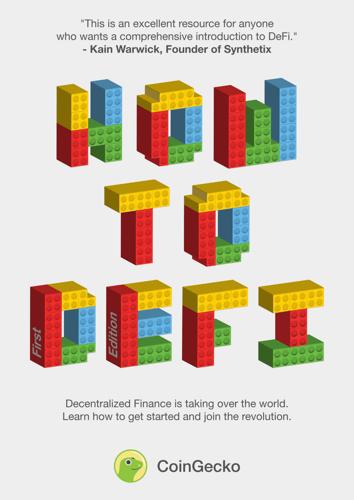
How to DeFi
by
Coingecko
,
Darren Lau
,
Sze Jin Teh
,
Kristian Kho
,
Erina Azmi
,
Tm Lee
and
Bobby Ong
Published 22 Mar 2020
~ What kinds of Sets are there? There are two kinds of Sets: (i) Robo Sets and (ii) Social Trading Sets. Robo Sets Robo Sets are algorithmic trading strategies that buys and sells tokens based on predefined rules encoded in smart contracts. There are currently 4 main types of algorithmic strategies, namely: Buy and Hold: This strategy realigns the portfolio to its target allocation to prevent overexposure to any one token and spreads the risk over other tokens. Trend Trading: This strategy uses Technical Analysis indicators to shift from target asset to stablecoins based on the implemented strategy. Range-Bound: This strategy automates buying and selling within a designated range and is only intended for bearish or neutral markets.
…
Smart contract audit refers to the practice of reviewing the smart contract code to find vulnerabilities so that they can be fixed before it is exploited by hackers. An Application Programming Interface (API) An interface that acts as a bridge that allows two applications to interact with each other. For example, you can use CoinGecko's API to fetch the current market price of cryptocurrencies on your website. B Buy and Hold This refers to a TokenSets trading strategy which realigns to its target allocation to prevent overexposure to one coin and spreads risk over multiple tokens. Bonding Curve A bonding curve is a mathematical curve that defines a dynamic relationship between price and token supply. Bonding curves act as an automated market maker where as the number of supply of a token decreases, the price of the token increases.
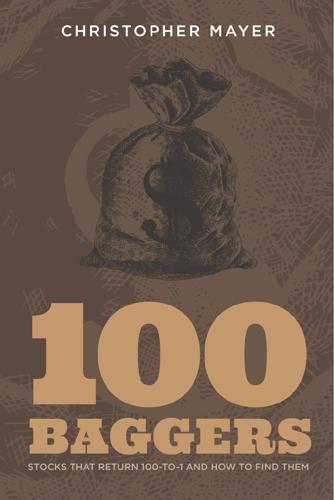
100 Baggers: Stocks That Return 100-To-1 and How to Find Them
by
Christopher W Mayer
Published 21 May 2018
. — Mark Twain, Pudd’nhead Wilson Just to give you an extreme example of this sort of thing, imagine sitting still for 80 years. There is a portfolio that makes the coffee-can portfolio look impatient: the Voya Corporate Leaders Trust Fund. It was the subject of a story written for Reuters by Ross Kerber. The headline was “Buy-and-Hold Fund Prospers with No New Bets in 80 Years.” Now, I know you have no interest in holding stocks for 80 years. I don’t, either. In fact, 10 years is pushing it. I know that. Still, that doesn’t mean we can’t learn something from the story. 18 100-BAGGERS Here’s Kerber: The Voya Corporate Leaders Trust Fund, now run by a unit of Voya Financial Inc bought equal amounts of stock in 30 major US corporations in 1935 and hasn’t picked a new stock since.
…
And as you can imagine, sponsors often manipulated prices to their advantage.) MIT was something new under the sun. It promised transparency and fairness. It promised low-cost professional management for the small investor. It had a sensible and conservative investment policy with a focus on large dividend-paying stocks. MIT would not trade these stocks, but aim to buy and hold. As the late great professor Louis Lowenstein of Columbia University wrote, The transparency and flexibility, and the security and comfort thus offered to small investors, made MIT a uniquely American contribution to finance. . . . Good ideas usually have simple beginnings: it’s the very simplicity of the concept that makes them ultimately successful.
…
Further, you might point to periods where stocks got bubbly. In 1998 or 1999, Coke was trading for 50 times earnings. It was a sell then. But then again, would Coke have qualified for a buy based on our 100-bagger principles? I don’t think so. It was a sell even by those lights. Of course, investing in the buy-and-hold manner means sometimes you will be hit with a nasty loss. But that is why you own a portfolio of stocks. To me, investing in stocks is interesting only because you can make so much on a single stock. To truncate that upside because you are afraid to lose is like spending a lot of money on a car but never taking it out of the garage.
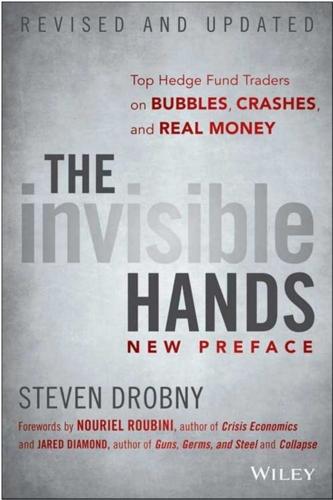
The Invisible Hands: Top Hedge Fund Traders on Bubbles, Crashes, and Real Money
by
Steven Drobny
Published 18 Mar 2010
The idea that price does not matter is clearly a myth, and this is what drives people to buy equities regardless of the price level. I do not believe this idea. If you bought equities 10 years ago, you would be flat today. So that would not have been a good idea. Buy and hold was not a sensible strategy for the last decade. The problem with buy and hold is that you may have to wait a long time for your opportunity. A long only, “see what happens” type of strategy is probably best addressed by buying an index. You can run this strategy with a lean, low-cost staff. You basically resign yourself to the fact that you do not have market timing skill and opt instead for cheap beta through an index.
…
While the debate over who or what deserves blame will likely rage for decades, the world has not ended and investors must now adapt and adjust to the new reality. The crisis of 2008 has called many investment mantras into question—notably the Endowment Model (diversifying into illiquid equity and equity-like investments) and others including stocks for the long term, buy the dip, buy and hold, and dollar cost averaging—yet no new model has taken root. The crisis of 2008 did, however, supply the financial community with an abundance of new information with regards to portfolio construction, in particular around risk, liquidity, and time horizons. After such an extreme year in the markets, reactions in the real money world have been polarized: some have learned valuable lessons and are incorporating them in their approach, whereas others are operating as if it is business as usual, completely dismissing 2008 as a one-in-a-hundred-year storm that has passed.
…
RETHINKING REAL MONEY—MACRO PRINCIPLES One of the main conclusions to come out of this book is that the accepted standard practice of real money no longer works. Real money management needs to be rethought as the old methodologies have failed. The massive growth of real money funds took place in a very benign environment where inflation was falling and virtually all assets performed well. In such conditions, static rule based strategies such as buy and hold, stocks for the long run, and the Endowment Model worked. But in a new, less benign world of higher volatility, a change in standard practice is required. Despite the widespread pain and colossal losses endured by most investors in 2008, there were a few bright spots. Global macro hedge funds, in aggregate, proved resilient by effectively managing risk and keeping a sharp focus on liquidity.
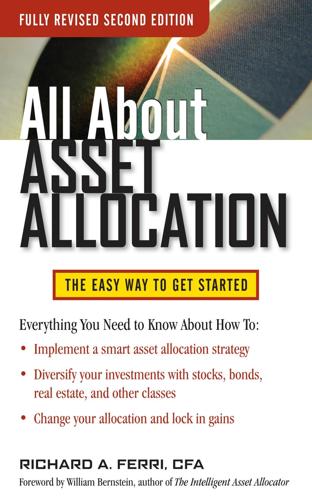
All About Asset Allocation, Second Edition
by
Richard Ferri
Published 11 Jul 2010
The events of the past decade have shaken the foundations of investment knowledge and have forced people to rethink their own investment strategies from the ground up. People are questioning the validity of modern portfolio theory (MPT) that had become well indoctrinated into portfolios. Do the markets still operate efficiently? Is a buy and hold investment strategy dead? How does a radical shift in the global economic power affect my portfolio? Is the U.S. dollar in a long-term decline? What new asset classes are available, and should I invest in them? These questions are all valid, and they all deserve answers. In your quest for information and solutions, you will find no shortage of people willing to help with answers—any answers— even bad answers, and there will be people trying to sell you products that go along with their answers.
…
I leave those to the television talking heads. 1. Strategic asset allocation (no predictions needed) 2. Tactical and dynamic asset allocation (requires accurate market predictions) 3. Market timing (requires accurate market predictions) This book is all about long-term strategic asset allocation. This strategy is commonly known as “buy and hold”; however, I believe it is best described as “buy, hold, and rebalance.” Strategic asset allocation focuses on selecting suitable asset classes and investments to be held for the long run. An asset allocation should not change based on the cyclical ups and downs of the economy or because some cynic publicly doubts the strategy and then personally benefits from investors who waver.
…
Consider the following two portfolio management strategies. Which one best describes you today? ● ● Plan A. Buy investments that I expect will perform well over the next few years. If an investment performs poorly or the prospects change, switch to another investment or go to cash and wait for a better opportunity. Plan B. Buy and hold different types of investments in a diversified portfolio regardless of their near-term prospects. If an investment performs poorly, buy more of that investment to put my portfolio back in balance. If you are like most investors, Plan A looks familiar. People tend to put their money into investments that they believe will lead to profitable results in the near term and sell those that do not perform.
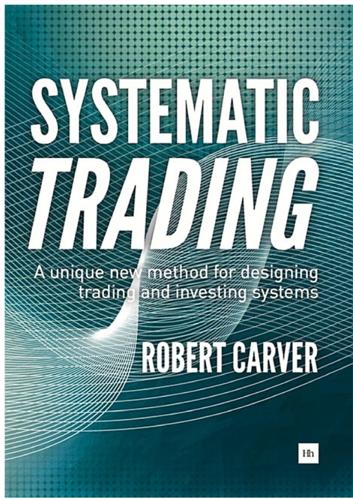
Systematic Trading: A Unique New Method for Designing Trading and Investing Systems
by
Robert Carver
Published 13 Sep 2015
In this case you will earn additional types of return from buying and selling, and the characteristics of those returns will depend on your trading style. There are various degrees of static strategies. The most vanilla flavour is a simple buy and hold portfolio. Let’s pretend that Apple and Microsoft have the same price per share. If you can’t decide between them then you’d buy equal numbers of shares in Apple and Microsoft today. Next week Apple brings out a new iGadget and doubles in price, whilst sclerotic Microsoft halves after releasing a new Windows that everyone hates. As a buy and hold investor you would do nothing. Your portfolio is now seriously unbalanced; 80% in Apple and only 20% in Microsoft. The second degree static strategy is to re-balance your portfolio so you keep the same cash value in each company.
…
Unlike the semi-automatic trader and the asset allocating investor, they embrace the use of systematic trading rules to forecast price changes, but within the same common framework for position risk management. Many systems traders think they can find trading rules that give them extra profits, or alpha. Others are unconvinced they have any special skill but believe there are additional returns available which can’t be captured just by ‘buy and hold’ investing. They can use very simple rules to capture these sources of alternative beta. Systems traders may have access to back-testing software, either in off-the-shelf packages, spreadsheets or bespoke software. It isn’t absolutely necessary to have such programs as I will be providing a flexible pre-configured trading system which doesn’t need backtesting.
…
The returns from hedge funds can be separated into beta – what you can get by tracking the market, alpha – the skill the hedge fund manager has, and alternative beta. An 3 Systematic Trading example of alternative beta is the additional return you can get from buying stocks with low price-to-earnings (PE) ratios, and selling those with high PE ratios – the equity value premium. Alternative beta doesn’t need skill, but it can’t be earned just by buying and holding shares. However it can be produced by following relatively simple rules. Some collective funds have been created to allow investors to get access to alternative beta, but they are still relatively expensive. Institutions should seriously consider using systematic rulebased trading to create in-house cheap alternative beta portfolios.

The Complete Guide to Property Investment: How to Survive & Thrive in the New World of Buy-To-Let
by
Rob Dix
Published 18 Jan 2016
In other words, most people buy high and sell low – exactly the opposite of what they should be doing. I can’t promise that knowing about the cycle will give you the degree of knowledge and mental toughness you need to buy at rock bottom and sell at the very height of the market. And nor do you need to – remember, each cycle starts at a higher level than the previous one, so “buy and hold for 20 years” is still a perfectly valid strategy. What’s more, if you sit around for years waiting for prices to fall, you’re missing out on a lot of income. There are, though, four very basic “rules” you should follow as an investor – and now you know about the cycle, it should be easier for you to do so: Don’t panic and sell a property just because prices are falling.
…
No, only if you’re using the equity you release to buy overpriced properties or fund your lifestyle. If you put the cash in the bank, you can use it later to buy properties at a discount – or just repay the money if you change your mind. So, I hope by now you’re a believer in the wonders of the property cycle. You don’t have to scrap “buy and hold” and start timing the market instead – although you can if you want to. Even if you just stick to the very basics, you’ll do very nicely indeed. As I said, the most fundamental lesson of all is to be aware that it’s an inevitability that a crash will happen at some point. That’s why I’ve dedicated the next chapter to making sure you’re able to survive it – because after all, there’s no point in going to all the trouble of building up a property portfolio just to lose it when the economy takes a turn for the worse.
…
You might be holding properties that don’t yield particularly well, or even properties that you bought just because there was an opportunity to do a refurb and recycle your funds. Maybe you even want to offload your leasehold properties in favour of freehold, so you don’t have the uncertainty of service charges and dwindling leases to worry about. This is why the advice to “buy and hold forever” makes sense in some respects, but is incomplete: if a property was bought for a particular purpose and it’s no longer doing that job, selling might make sense. As investors, we shouldn’t be emotionally attached to any property. CONCLUSION If I had to guess, I’d say that having read this book, you won’t do anything with it.

Adaptive Markets: Financial Evolution at the Speed of Thought
by
Andrew W. Lo
Published 3 Apr 2017
Popular investment gurus told us to forget about trying to beat the market and to forget about relying on our flawed intuition. The price is always right, they said; we might as well throw darts at the financial pages to pick our stocks, because we’d end up doing just about as well as the professionals, if not better. We should buy and hold a passive, well-diversified portfolio of stocks and bonds, they said, preferably through a no-load index mutual fund or an exchange-traded fund, requiring as little thought as possible. The market has already taken everything into account. The market always takes everything into account. This idealistic view of the market still sticks in the craw of professional money managers, but the basic idea is more than forty years old.
…
His little startup, the Vanguard Group, manages over $3 trillion and employs more than fourteen thousand people as of December 31, 2014.5 Vanguard’s main message, and the advice most often dispensed to millions of consumers, is “don’t try this at home.” Don’t try to beat the market. Instead, stick to passive buy-and-hold investments in broadly diversified stock index funds, and hold these investments until you retire. Still, there’s no shortage of examples of investors who did and do beat the market. A few well-known portfolio managers have routed it decisively, like Warren Buffett, Peter Lynch, and George Soros.
…
Principle 5 makes your asset allocation decision even simpler: just hold stocks for the long run. This principle is based on the hugely influential book Stocks for the Long Run, written by the Wharton financial economist Jeremy Siegel.2 First published in 1994, this book is now in its fifth edition, and has become the “buy and hold Bible” of the investment management industry. Siegel’s argument isn’t hard to summarize: since 1802, the farthest back we have data on stocks, the historical performance of the U.S. stock market has been very attractive over sufficiently long holding periods. We could all be rich if we only held onto stocks for the long run.
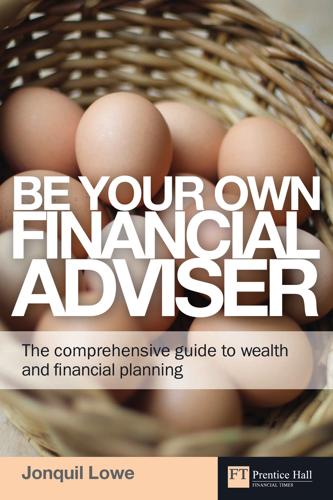
Be Your Own Financial Adviser: The Comprehensive Guide to Wealth and Financial Planning
by
Jonquil Lowe
Published 14 Jul 2010
They argue that the long bull markets of M10_LOWE7798_01_SE_C10.indd 328 05/03/2010 09:51 10 n Managing your wealth 329 the last century will not be repeated and so it will no longer be possible to make money consistently out of simple buy-and-hold strategies. Absolute return funds will provide a medium-risk core for long-term investors in the same way that with-profits funds aimed to do in the past. Others question the ability of absolute return funds to deliver the promised returns. Most funds do not claim to meet their target month by month, but over an average period of a year or more. OO 130/30 funds. These funds are using something similar to leverage in order to magnify the gains from successful buy-and-hold investments. However, rather than borrowing to invest, the fund short sells investments to the value of 30 per cent of the fund.
…
Advocates claim that it encourages sound investment behaviour. If one asset class – say, shares – does well relative to the others, it will become over-represented in your allocation. Therefore, you should sell shares and buy more of the assets that have done less well. This means you are forced to sell high and buy low, which is the basis of all buy-and-hold investment strategies. (See the case study below). Opponents of rebalancing question why you would sell investments that are doing well and buy into poor performers. One wit likened this to picking the flowers and leaving the weeds. There is also the question of how often rebalancing should take place.
…
At the end of a year, the shares have grown by 15 per cent, property by 8 per cent, the bonds have fallen by 10 per cent and the cash has remained fairly static. Overall his portfolio is now worth £105,350 and the allocation has drifted as shown in Figure 10.3 opposite. He has to decide whether to sell some equities and property and buy bonds to restore his original allocation. Time diversification As a buy-and-hold growth investor (also called investing ‘long’), your aim is to buy investments when their price is low and sell when they are high. Sounds simple enough, but in practice it is either difficult or impossible – depending on which school of thought you believe (see p. 309) – to get the timing right.

Two and Twenty: How the Masters of Private Equity Always Win
by
Sachin Khajuria
Published 13 Jun 2022
The masterstrokes of the Founder’s next steps to grow the Firm are delivered without pomp or forewarning to the financial markets. The Firm acquires a midsize asset manager of mutual funds and passive funds that cater directly to retail investors, to mom-and-pop investors, and to other 401(k) savers. The unit offers old-fashioned “buy and hold” index trackers and ETFs, the kind of vehicles that sit on the opposite end of the money management spectrum from private equity. The Firm’s share price is riding high, given a boost by inclusion into a major index, so the acquisition is paid for in stock. It looks like a smart bargain. The unit is acquired by the Firm itself, for the benefit of the Firm, not by the private equity fund or by the other private capital vehicles.
…
Passive investing (as in passive vs. active asset management): Passive investing involves a relatively low amount of buying and selling within the investment portfolio. In contrast, active investing requires a hands-on approach, typically by an asset management firm such as a private equity firm. Passive investing often involves buying index funds, mutual funds, or ETFs with a buy-and-hold mentality. Investors who adopt this passive approach look to participate in the upward trajectory of corporate profits and cash flow over time, accepting that sharp corrections can occur in the financial markets but aiming to ride them out. In contrast, active investing relies on the judgment of the people hired to make the investment decisions, such as when to buy and sell, and the quality and depth of their analysis.
…
Because of these factors, private capital investments generate higher and more consistent investment returns over time than publicly traded investments, whose valuations can be more volatile. (At least, that’s the intention.) When these investments fail or underperform, they have the disadvantages of being less liquid and making lower investment returns than, for example, just buying and holding a basket of well-performing stocks. Private capital investments are also more expensive for investors because of the fees and expenses charged by asset management firms to actively manage them. Private equity: An investment in a company or business where the aim is to grow and improve the enterprise before exiting at a profit.

The Four Pillars of Investing: Lessons for Building a Winning Portfolio
by
William J. Bernstein
Published 26 Apr 2002
As a result, most small investors using active-fund managers tend to turn over their mutual funds once every several years in the hopes of achieving better returns elsewhere. What actually happens is that they generate more unnecessary capital gains and resultant taxes. For the taxable investor, indexing means never having to pay the tax and investment consequences of a bad manager. Why Can’t I Just Buy and Hold Stocks on My Own? Some of you may ask, “If the markets are efficient, why can’t I simply buy and hold my own stocks? That way, I’ll never sell them and incur capital gains as I would when an index occasionally changes its composition, forcing capital gains in the index funds that track it. And since I’ll never trade, my expenses will be even lower than an index fund’s.”
…
Journalists tend to be a cynical lot, but it’s hard to find many as hard-bitten as intelligent, successful financial writers. They know that what they’re writing isn’t good for their readers, but there are deadlines to meet and mouths to feed. In a 1999 issue of Fortune, an anonymous writer penned a notorious piece entitled, “Confessions of a Former Mutual Funds Reporter.” Its writer admitted, “We were preaching buy-and-hold marriage while implicitly endorsing hot fund promiscuity.” Why? Because, “Unfortunately, rational, pro-index-fund stories don’t sell magazines, cause hits on Web sites, or boost Nielsen ratings.” The article went on to admit that most mutual fund columnists invest in index funds. (As do an increasing number of brokers, analysts, and hedge fund managers.)
…
Like corporates, it is necessary to protect yourself from credit/default risk by buying a fund. Wealthy investors tend to assemble their own muni portfolios because they can buy enough issues to maintain adequate diversification. This is usually unwise because muni bonds are thinly traded and have very high bid/ask spreads—around 3% to 4%. Thus, even if you buy and hold these issues to maturity, you still will be paying a 1.5% to 2% “half-spread” on purchase, which amortizes out to about 0.2% to 0.3% per year, in addition to trading costs and management fees. This is the one field where Vanguard is all alone in the quality of its product—it offers many national and single-state muni funds, all with annual expenses of 0.20% or less.
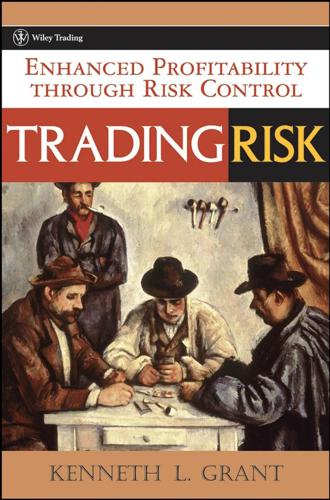
Trading Risk: Enhanced Profitability Through Risk Control
by
Kenneth L. Grant
Published 1 Sep 2004
This will increase your transactions costs, in all of their unholy forms, but I encourage you to consider these costs as part of the risk management investment. Diligently Manage Your Executions. Different trading and investment strategies have different sensitivities to the executions process. For example, the results associated with high-velocity trading strategies tend to be more dependent on the executions process than are buy-and-hold investment approaches. Similarly, the executions process will be a much more critical driver of profitability in complex, structured transactions than it might be in plain vanilla markets with ample liquidity. However, portfolio managers should seek to attack the executions process with as much effort and energy as they apply to any other element of their investment program.
…
Oftentimes, you still like the play and will be reluctant to liquidate your position because, invariably, it will seem that your liquidation is the very catalyst the position needs in order to move in the direction you originally expected. These things happen much less frequently to active traders than they do to the buy-and-hold crowd. This is because active traders operate with a mindset that reinforces the notion that both the liquidation and the reestablishment of a position is just a trade away. They might have the opportunity to put the trade on and to liquidate it (or at least to trade around it) a half dozen times before their catalyst monetizes itself.
…
While they may not capture every major move that they may have anticipated in its entirety, in most instances the good ones capture the fat part of the pricing action. By trading actively in a disciplined manner, you stand to increase the size of the 10% pool that will determine your trading destiny over any period you choose to examine. The size of individual gains in these names may be smaller than those associated with a buy-and-hold strategy, but, by definition, you’ll have a lot more of them; and I believe that on the whole you’ll be substantially better off. I think I’ll close this section by invoking the image of Teddy Ballgame one last time. I know that we should probably let him rest in peace, but that does not seem to be what the Almighty has in store for him.
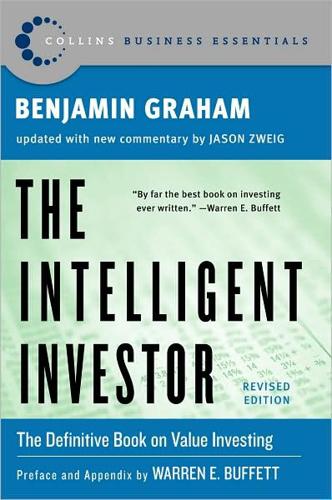
The Intelligent Investor (Collins Business Essentials)
by
Benjamin Graham
and
Jason Zweig
Published 1 Jan 1949
A creditable, if unspectacular, result can be achieved by the lay investor with a minimum of effort and capability; but to improve this easily attainable standard requires much application and more than a trace of wisdom. If you merely try to bring just a little extra knowledge and cleverness to bear upon your investment program, instead of realizing a little better than normal results, you may well find that you have done worse. Since anyone—by just buying and holding a representative list—can equal the performance of the market averages, it would seem a comparatively simple matter to “beat the averages”; but as a matter of fact the proportion of smart people who try this and fail is surprisingly large. Even the majority of the investment funds, with all their experienced personnel, have not performed so well over the years as has the general market.
…
It would not mean that the true value, or the purchasing power, of the investor’s fortune need be reduced over the years. If he spent half his interest income after taxes he would maintain this buying power intact, even against a 3% annual inflation. But the next question, naturally, is, “Can the investor be reasonably sure of doing better by buying and holding other things than high-grade bonds, even at the unprecedented rate of return offered in 1970–1971?” Would not, for example, an all-stock program be preferable to a part-bond, part-stock program? Do not common stocks have a built-in protection against inflation, and are they not almost certain to give a better return over the years than will bonds?
…
For then, if another bull market comes along, he will take the big rise not as a danger signal of an inevitable fall, not as a chance to cash in on his handsome profits, but rather as a vindication of the inflation hypothesis and as a reason to keep on buying common stocks no matter how high the market level nor how low the dividend return. That way lies sorrow. Alternatives to Common Stocks as Inflation Hedges The standard policy of people all over the world who mistrust their currency has been to buy and hold gold. This has been against the law for American citizens since 1935—luckily for them. In the past 35 years the price of gold in the open market has advanced from $35 per ounce to $48 in early 1972—a rise of only 35%. But during all this time the holder of gold has received no income return on his capital, and instead has incurred some annual expense for storage.
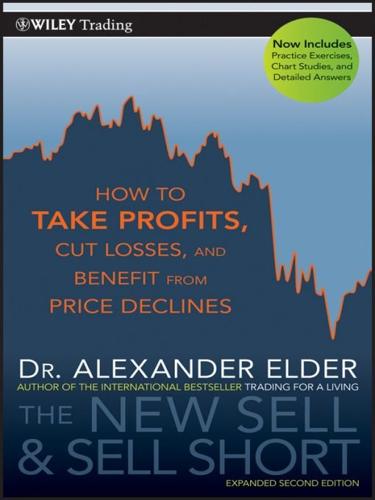
The New Sell and Sell Short: How to Take Profits, Cut Losses, and Benefit From Price Declines
by
Alexander Elder
Published 1 Jan 2008
Counter-trend traders capitalize on this choppiness by trading against the extremes. Take a look at the chart in Figure 1.1, and the arguments for and against trend or counter-trend trading will leap at you from the page. You can easily recognize an uptrend from the lower left to the upper right corner. It seems appealing to buy and hold—until you realize that a trend is clear only in retrospect. If you had a long position, you’d be wondering every day, if not every hour, whether this uptrend was at an end. Sitting tight requires a great deal of mental work! Swing trading—buying below value and selling above value—has its own pluses and minuses.
…
There are many books on this topic, and my favorites are listed in the previous section. My goal here is merely to point out the differences between shorting forex and shorting stocks. Figure 8.9 Euro weekly This chart shows a four-year upmove in the euro against the U.S. dollar. The trend, driven by economic fundamentals, appeared unstoppable. One could buy and hold or try to play the swings At the right edge of the chart there are multiple severe bearish divergences. The bulls are healthy and powerful at peak A, which was followed by a normal pullback to the value zone. The rally to peak B was accompanied by prominent bearish divergences in MACD Lines and the Force Index; the divergence of MACD-Histogram was of a particularly ominous type—a missing right shoulder.
…
The power of the market crowd is greater than that of any individual. The strength of a major trend is so vast that its extent often defies our imagination, making the ultimate target very difficult to forecast. • When we glance at a long-term chart, it may seem easy to ride a position in a major trend. Buy-and-hold (or in this case short-and-hold) seems like a pretty straight road to riches. In fact, the opposite is true. It is extremely hard to ride a major trend from start to finish. You need to have almost super-human patience and be prepared to sit through huge drawdowns while your trend corrects. A much more practical approach is to use weekly charts to define a trend and then switch to the daily charts for shorter-term trading in the direction of the weekly chart.
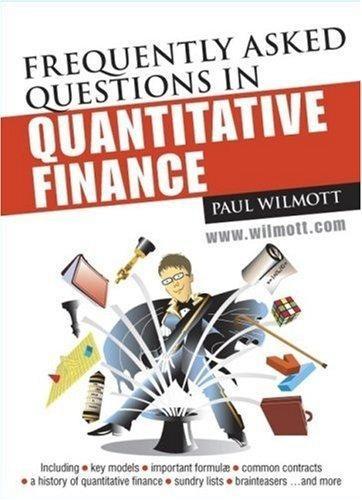
Frequently Asked Questions in Quantitative Finance
by
Paul Wilmott
Published 3 Jan 2007
A trading strategy incorporating historical data, such as price and volume information, will not systematically outperform a buy-and-hold strategy. It is often said that current prices accurately incorporate all historical information, and that current prices are the best estimate of the value of the investment. Prices will respond to news, but if this news is random then price changes will also be random. Technical analysis will not be profitable. Semi-strong form efficiency In the semi-strong form of the EMH a trading strategy incorporating current publicly available fundamental information (such as financial statements) and historical price information will not systematically outperform a buy-and-hold strategy.
…
VaR is a very useful concept in practice for the following reasons. • VaR is easily calculated for individual instruments, entire portfolios, or at any level right up to an entire bank or fund • You can adjust the time horizon depending on your trading style. If you hedge every day you may want a one-day horizon, if you buy and hold for many months, then a longer horizon would be relevant • It can be broken down into components, so you can examine different classes of risk, or you can look at the marginal risk of adding new positions to your book • It can be used to constrain positions of individual traders or entire hedge funds • It is easily understood, by management, by investors, by people who are perhaps not that technically sophisticated Table 2.1: Degree of confidence and the relationship with deviation from the mean.

Against the Gods: The Remarkable Story of Risk
by
Peter L. Bernstein
Published 23 Aug 1996
How much margin of error can a market-timer sustain and still come out ahead of a simple buy-and-hold strategy? One of the risks of market timing is being out of the market when it has a big upward move. Consider the period from May 26, 1970, to April 29, 1994. Suppose our market-timer was in cash instead of stocks for only the five best days in the market out of that 14-year period of 3,500 trading days. He might feel pretty good at having just about doubled his opening investment (before taxes), until he reckoned how he would have done if he had merely bought in at the beginning and held on without trying anything tricky. Buy-and-hold would have tripled his investment.
…
But volatility in this sector has also been high: two-thirds of the returns have fallen between -23% and +59%; negative returns over twelvemonth periods have occurred in almost one out of every three years and have averaged 20%. Thus, the outlook for any given year has been extremely uncertain, regardless of the high average rewards generated by these stocks over the long run. As an alternative, suppose a different broker recommends a fund that buys and holds the 500 stocks that comprise the Standard & Poor's Composite Index. The average annual return on these stocks over the past 69 years has been about 13%, but two-thirds of the annual returns have fallen within the narrower range of -11% and +36%; negative returns have averaged 13%. Assuming the future will look approximately like the past, but also assuming that you do not have 70 years to find out how well you did, is the higher average expected return on the small-stock fund sufficient to justify its much greater volatility of returns?
…
The business badly needs to replace its cottage industry operating methods.20 For the first time risk management became the biggest game in town. First came a major emphasis on diversification, not only in stock holdings, but across the entire portfolio, ranging from stocks to bonds to cash assets. Diversification also forced investors to look into new areas and to develop appropriate management techniques. The traditional strategy of buy-and-hold-until-maturity for long-term bonds, for example, was replaced by active, computer-based management of fixedincome assets. Pressures for diversification also led investors to look outside the United States. There they found opportunities for high returns, quite apart from the diversification benefits of international investing.

Why Stock Markets Crash: Critical Events in Complex Financial Systems
by
Didier Sornette
Published 18 Nov 2002
B2C Greenspan speaks Optimistic CNBC guest Pain Joe Ignore history Arggh! Larry Nothing matters Any gains lost in next day rally Ralph Bad breadth Wealth effect Abby Earnings slowdown Big volume Futures up Greenspan silent Rally!!! Bears bail Phew! MSFT breakup e-broker TV ads P/E’s of 2000 Weird yield curve Buy and hold forever “Bottom is in” Mergers Soros out Gold auctions Margin call W$W elves 401k inflows 16 year olds beat market vets Flight to safety Hot market Dollar goes every which way Old Economy New Economy Oil up DOW 36,000 IPO billionaires 30yr bond extinct Fig. 4.1. Cartoon illustrating the many factors influencing traders, as well as the psychological and social nature of the investment universe (source: anonymous).
…
The large amount of works on minority games [77, 78, 76, 75] suggests that changing one’s strategy often may be profitable in that situation. It also suggests that only when the information complexifies or when the number of traders decreases will the traders be able to make consistent profits. In contrast, the buy-and-hold strategies profit as long as the information remains simple, such as when a trend remains strong. The problem then boils down to exit/reverse before or at the reversal of the trend. The difficulty however, as everyone who has tried to invest in the stock market will know, is that trends and trend reversals occur at all time scales.
…
While allowing for deviations from fundamental prices, rational bubbles keep a fundamental anchor point of economic modeling, namely that bubbles must obey the condition of rational expectations and of no-arbitrage opportunities. Indeed, for fluid assets, dynamic investment strategies rarely perform better than simple buy-and-hold strategies [282]; in other words, the market is not far from being efficient and few arbitrage opportunities exist as a result of the constant search for gains by sophisticated investors. The conditions of rational expectations and of no-arbitrage are useful approximations. The rationality of both expectations and behavior does not imply that the price of an asset is equal to its fundamental value.
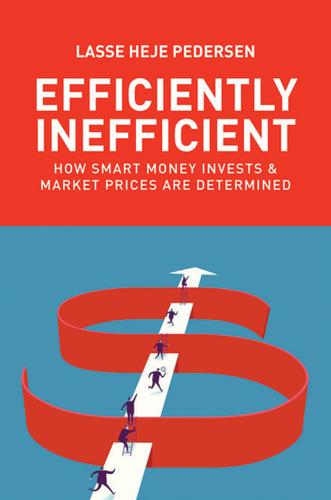
Efficiently Inefficient: How Smart Money Invests and Market Prices Are Determined
by
Lasse Heje Pedersen
Published 12 Apr 2015
ESTIMATING PERFORMANCE MEASURES To estimate expected returns, standard deviations, and regressions, we can use standard methods. Expected returns are estimated as the realized average return, using the available data over T time periods. Some people use geometric averages,2 while others use arithmetic ones, The geometric average corresponds to the experience of a buy-and-hold investor who neither adds capital nor takes capital out of a hedge fund. The arithmetic average is the optimal estimator from a statistical point of view, and it corresponds more closely to the experience of an investor who adds and redeems capital in order to keep a constant dollar exposure to the hedge fund, under certain conditions.
…
Furthermore, leverage is associated with funding liquidity risk, that is, the risk that the trader cannot continue to finance his positions and is forced to liquidate in a fire sale. These implementation costs—market and funding liquidity costs—are important for active investors because they eat into the profits of all trading strategies. Whereas passive unleveraged buy-and-hold investors incur only few implementation costs, an active investor may trade frequently, and the more frequent the trades, the more the investor needs to worry about the effects of transaction costs. Furthermore, the larger and more leveraged the positions a trader takes, the more important are implementation costs.
…
In the real world, traders face transaction costs and funding costs, which means that arbitrage trades involve costs and are almost never risk free. With transaction costs, we cannot determine an exact fundamental value using the no-arbitrage condition, but we can find an upper and lower bound for the value. The three types of arbitrage arguments above are increasingly influenced by frictions. While the arbitrages of types 1 and 2 involve buy-and-hold strategies, type 3 requires dynamic trading, which involves much higher transaction costs. Therefore, arbitrage relations based on type 3 can more easily break down in an efficiently inefficient market. The strength of an arbitrage relation also depends on whether it has a natural convergence time.
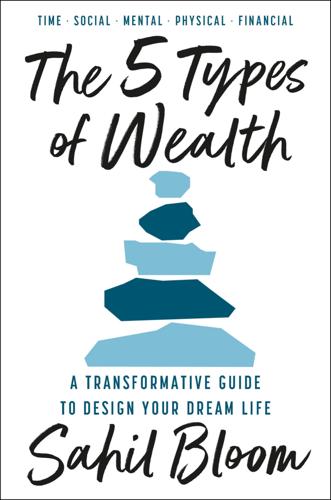
The 5 Types of Wealth: A Transformative Guide to Design Your Dream Life
by
Sahil Bloom
Published 4 Feb 2025
Unless you’re a professional investor with a specific edge and a track record of outperforming the market, it’s unlikely that you will consistently beat an index fund, so you’re almost always better off taking common returns and allowing your time in the market to be the uncommon factor that drives your outsize rewards. Nick Maggiulli, author of the bestselling book Just Keep Buying, is a vocal proponent of the long-term buy-and-hold investment strategy. When I asked him about his best advice to his younger self, he focused on the importance of saving and investing heavily in your early years. Starting early and investing often is a tried-and-true approach for building Financial Wealth. The philosophy’s effectiveness, Maggiulli noted, is driven by two factors: “Money invested earlier in time typically grows more than money invested later in time [and] compounding money is easier than saving money.”
…
For example, a multifamily real estate investment that generates a 10 percent average annual return may sound like a screaming deal, but if it requires you to spend ten hours away from your family each weekend driving to the location, fixing maintenance issues, and dealing with tenant headaches, that 10 percent annual return may not look so attractive. If you can generate a 7 percent average annual return with zero time and energy outlay by auto-buying and holding market index funds, other potential long-term investments must be weighed against that. If the incremental likely return profile exceeds the value of the incremental time and energy requirements, it is worth considering, but if not, it should be rejected. To illustrate the point, we can reference a chart of data gathered by Nick Maggiulli that maps a variety of potential long-term investment assets from the prior section based on their risk difficulty/hassle and expected annualized returns.[11] Source: American Time Use Survey, Our World in Data Starting your own business, which occupies the upper right corner of this chart, offers the tantalizing high-risk, high-hassle, high-reward trifecta.
…
The allure of control—the “bet on yourself”—is compelling, but it should not be taken on lightly, as most businesses will fail within their first decade. That said, the alternative, de-risked pathways to entrepreneurship may offer a more manageable risk-reward trade-off for those seeking an accelerated timeline to financial independence. For most people, the lower middle of this difficulty/hassle spectrum will be the sweet spot. Buying and holding a well-diversified, low-cost market index fund will provide the most attractive balance of returns and energy requirement. Investments in higher-hassle long-term investments like individual stocks and real estate properties should not be considered without a clear understanding of the associated time and capital risks as well as a rational perspective on the “edge” that one has relative to the market in that specific asset arena.
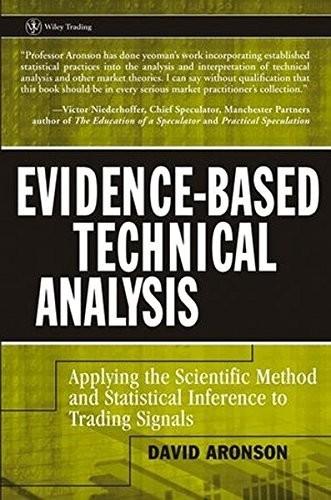
Evidence-Based Technical Analysis: Applying the Scientific Method and Statistical Inference to Trading Signals
by
David Aronson
Published 1 Nov 2006
In medicine, a new drug must convincingly outperform a placebo (sugar pill) to be considered useful. Of course, rational investors might reasonably choose a higher standard of performance but not a lesser one. Some other benchmarks that could make sense would be the riskless rate of return, the return of a buy-and-hold strategy, or the rate of return of the rule currently being used. In fact, to be considered good, it is not sufficient for a rule to simply beat the benchmark. It must beat it by a wide enough margin to exclude the possibility that its victory was merely due to chance (good luck). It is entirely possible for a rule with no predictive power to beat its benchmark in a given sample of data by sheer luck.
…
An efficient market is a market that cannot be beaten. In such a market, no fundamental or technical analysis strategy, formula, or system can earn a risk-adjusted rate of return that beats the market defined by a benchmark index. If the market is indeed efficient, the risk-adjusted return earned by buying and holding the market index is the best one can hope for. This is so because prices in an efficient market properly reflect all known and knowable information. Therefore, the current price provides the best estimate of each security’s value. According to EMH, markets achieve a state of efficient pricing because of the vigorous efforts of numerous rational investors attempting to maximize their wealth.
…
In seeking to maximize wealth, they buy undervalued assets pushing their prices higher and sell overvalued assets pushing prices lower.11 “Taken to its logical extreme, it means that a blindfolded monkey selecting stocks by throwing darts at a newspaper’s financial pages could do just as well as one carefully selected by the experts.”12 “EMH rules out the possibility of trading systems, based on available information, that have expected profits or returns in excess of equilibrium expected profit or return.”13 “In plain English, an average investor— whether an individual, pension fund, or a mutual fund—cannot hope to consistently beat the market, and the vast resources that such investors dedicate to analyzing, picking and trading securities are wasted.”14 Although, under EMH, it is still possible to generate positive returns from an investment strategy, when those returns are adjusted for risk, they will not be superior to the return of buying and holding the market index portfolio. The efficient markets hypothesis also declares that when there is no news entering the market, prices tend to oscillate in a random and unbiased fashion above and below the rational price level. See Figure 7.2. Because this level is itself subject to uncertainty, no technical or fundamental indicator can reliably indicate when prices are above or below it.
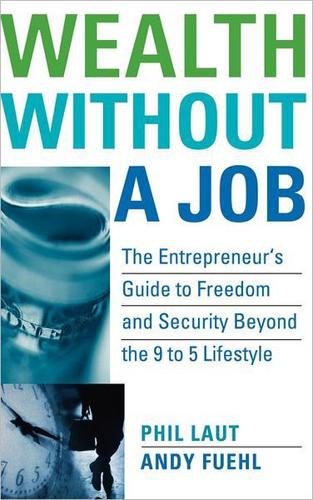
Wealth Without a Job: The Entrepreneur's Guide to Freedom and Security Beyond the 9 to 5 Lifestyle
by
Phil Laut
and
Andy Fuehl
Published 12 Sep 2004
Buoyed by a booming economy, the dot-com craze, and this new and enduring influx of cash from retirement savings, that had traditionally gone to the bond market, the stock market as characterized by the Dow Jones Industrial Average (DJIA) more than tripled. Employees put their retirement savings into mutual funds that invested primarily in the stock market and forgot about them, except to watch the growth in portfolio value each quarter. “Buy and hold” became an investment strategy that anyone could win with. Many new investors realized unprecedented gains with little or no understanding of the market, business, or accounting. Stock market success seemed deceptively easy. In 1999 the dot-com bubble broke. In 2001 the war on terror 23 ccc_laut_ch02_19-26.qxd 7/8/04 12:23 PM Page 24 24 The Old Methods No Longer Work in Today’s Economy began (more on this later), as did accounting scandals in a score of major U.S. industrial companies.
…
This lack of recognition is reflected in forecasts of broad-based improvement in stock prices in the near future. 25 ccc_laut_ch02_19-26.qxd 7/8/04 12:23 PM Page 26 26 The Old Methods No Longer Work in Today’s Economy The stock market will continue to present attractive opportunities for the investor with a sharp pencil and a strong stomach. However, the days of broad-based, double-digit annual gains experienced in the final decade of the twentieth century are over. To profit in the stock market over the next 10 years, very different skills are required from those that grew portfolios earlier. Buy and hold won’t work anymore. You must be prepared to buck the trend, to do your own research on individual stocks, to pay careful attention to timing, and to admit errors quickly. Most people are not interested in going to all this trouble and expenditure of time; for them, their own business will be a far more reliable and satisfying producer of wealth than the stock market.
…
See also Power affirmations Ah-ha moments, 62 Analytical mind, 135–137 Anger, 112, 121, 124–126 Answering machines, 229 Anxiety, sources of, 6, 56, 94, 119, 211 Associated position, in perception, 109–110, 155, 194–195 Attorney, functions of, 190–191 Auditory representational system, 201, 203, 206–207, 224, 232, 235, 240, 263–264 Authority figures: Authority Size method, 103–104 perceptions of, 101–103, 171 Authority Size method, 103–104 Awareness, importance of, 62–63, 111, 260 Bad habits, 17 Baseball Diamond method, 50–52, 95, 132, 199, 224, 259 Behavioral flexibility, 41 Belief system, 72 Belligerence, 160 Birth experience analogy, 113–114 Birth without Violence (Leboyer), 113 Blame, 31–35, 77–78 Bonds, in family dynamics, 80–82 Boundaries, in family dynamics, 81–82 Burnout, 16 Business model: business process, 180–181 hiring strategies, 181–182 network marketing, 182–183 prospective customers, 180 top-down view, 179–180 Business opportunities, recognition of, 143–144 Buy and hold strategy, 23, 26 Career, Power Affirmations method, 176 Career development, 16–17 Cause and effect, 31–33, 121 Certainty, 68 Change, benefits of, 12. See also Change dynamics Change dynamics: addictions, 59 cause and effect, 31–33, 121 control factor, 52–53 creativity, 34–35 excellence, physiology and psychology of, 42–44, 57 internal sensory representations, 54–57, 113, 154 massive action, 45–46 mastery, 38–40 motivation, 46–52 273 ccc_laut_ind_273-278.qxd 7/8/04 12:28 PM Page 274 274 Index Change dynamics (continued) optimal learning state, 36–38 perceptions, 56–59 productive strategy, 34–36 responsibility, 33–34 state of being, 53–54 success factors, 40–42 Charitable contributions, 3.

The Unusual Billionaires
by
Saurabh Mukherjea
Published 16 Aug 2016
Finally, Chapter 10 builds upon the takeaways from the great companies and turns it into a checklist for investors. For those who want to get their teeth into slightly more technical material, Appendix 2 gives detailed performance data on all CCPs since 2000 and also gives the latest CCP. Appendix 3, ‘The Case against Churning’, highlights why it makes sense to buy and hold the same portfolio for a decade. CHAPTER 2 Asian Paints: Seven Decades of Excellence ‘Persistence is what makes the impossible possible, the possible likely, and the likely definite.’ –Robert Half The year 1942 was a tumultuous one. World War II was on and British forces were battling Germany in Europe and Japan in Sri Lanka.
…
Thus, a US$100 million portfolio that would have grown to US$382 million over the ten-year period (30 June 2005–30 June 2015) in effect grows to US$347 million due to high churn. Reason 5 Back-testing results prove that rebalancing does not improve returns I back-tested (i.e. used past stock price data) to check the effect of replacing Coffee Can stocks every year (or, annual rebalancing) instead of holding one portfolio for ten years (or, buy and hold). I tested this annual rebalancing approach as against a buy-hold approach over six ten year periods (2000–10, 2001–11, 2002–12, 2003–13, 2004–14 and 2005–15) on the listed companies universe. (There are only six ten-year periods because the CCPs from 2006 are less than ten years old, while the CCP for 2000 has already played out its holding period of ten years.)
…
Similarly, an investor who started the CCP in 2004 and held the portfolio intact till 2014 saw his portfolio return 30.8 per cent, as compared to another investor who kept buying the new qualifiers and selling the old disqualified stocks (this replacement process is also called rebalancing or churning). Taken together, the average of all six ten-year period returns without rebalancing was 24.5 per cent as against 18.7 per cent for CCP with rebalancing. These results clearly highlight the advantage of the buy-and-hold approach over an annual rebalancing approach even with the weights of repeating stocks unchanged in the portfolio. Exhibit 194: CAGR returns over 10-year periods for CCP with and without rebalancing Source: Bloomberg, Ambit Capital Research. Note: All the ten-year holding periods begin on 30 June of the starting year.
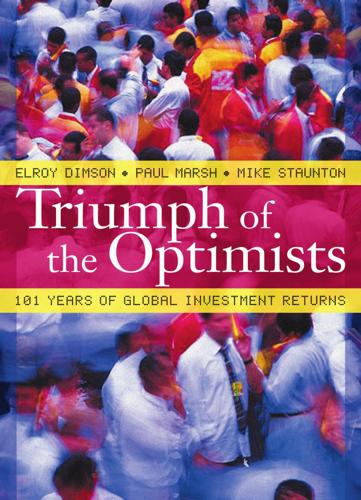
Triumph of the Optimists: 101 Years of Global Investment Returns
by
Elroy Dimson
,
Paul Marsh
and
Mike Staunton
Published 3 Feb 2002
It shows the wealth that would have accumulated at each year-end from 1900 through to 2000 from an initial investment of $1 in stocks, bonds, or bills at the end of 1899. It assumes that dividends and interest were reinvested, and that there were no taxes or transactions costs. Figure 4-1 also shows inflation, that is, the increase in consumer prices over time. For stocks, the investment strategy represented in Figure 4-1 is one of buying and holding the US equity market. Today, this would be most cheaply accomplished by investing in an index tracker fund. Back in 1900, some 70 years before tracker funds were launched, it would have meant investing in all NYSE securities in proportion to their market capitalizations. From 1900–25, we use the capitalization weighted Cowles Index of all NYSE stocks (as modified by Wilson and Jones, 2002); from 1926–61, we employ the capitalization weighted CRSP Index of all NYSE stocks; from 1962–70, we use the extended CRSP Index, which over this period also incorporates Amex stocks; and from 1971 on, the underlying investment is in the comprehensive Wilshire 5000 Index, which, despite its name, now contains over 7,000 US stocks, including, of course, Nasdaq stocks (for further details, see chapter 33).
…
At the same time, retail investors are becoming better informed about the true likelihood of mutual funds outperforming their benchmarks, even on a pre-costs and fees basis. Regulators and those concerned with investor protection are helping to educate investors here, and also to curb the more strident, performance-based advertising claims made by some money managers. We therefore expect a growing appreciation of the advantages of buy-and-hold strategies, and a move toward favoring funds that choose either a demanding outperformance objective or a low cost structure. To sum up, individual investors now need to adapt their investment strategies to take account of the evidence presented in this book. Today’s real interest rates and bond yields are, of course, much higher than the twentieth century average.
…
Dr Staunton holds a BSc from Manchester University, and a MBA and PhD in Finance from London Business School. 331 Index ABN AMRO, xi, xii, 4, 44, 78, 126, 128, 135, 136, 228, 299 ABN AMRO/LBS Indexes, 228, 299–305 Active management, 144, 205, 207–8 Adams, K., 38 Agarwal, V., 35 Ahearne, A.G., 120, 121 Akiyama, R., 269 Aleotti, A., 264 Alternative Investment Market (AIM), 23, 160 American Stock Exchange (Amex), 11, 23, 46, 158 Amsterdam, 19 Annaert, J., xii, 234 Anomalies, 7, 8, 9, 124–38, 139–48, 153, 205, 207, 208, 209 see also seasonality, size effect, value-growth effect Arbulu, P., 249 Archy, the cockroach, 224 Argentina, 20, 21, 84 Arithmetic mean, 54–5, 181–5, 214–5 Arnott, R.D., 156, 192, 204 Asset allocation, 9, 205, 207, 217 Asset class comparisons, 51–3, 59–61 Australia, 229–33, see also cross-country comparisons Austria, xi, 15, 20, 67 Austria-Hungary, 21–2 Bachmann, J.W., xii Baggaley, R., xii Ball, R., 229 Banz, R., 124, 125, 126, 127, 130, 131, 133 Barber, B., 207 Barclays Capital, 38, 174 Barsky, J., 161 Basu, S., 146 Belgium, 234–8 see also cross-country comparisons Benavides, F.G., 284 Benchmarks, 7, 31, 34–44, 55, 63, 73, 74, 105, 163, 169, 187, 206, 207, 208, 215, 217 see also indexes Berman, D., xi Bernstein, P.L., xi, 189, 192, 195, 199, 204 Beta, 180, 214, 215 Bianchi, B., 264 Bias, 34–36 see also easy data bias, look-ahead bias, success bias, survivorship bias Bill markets, 19, 68 Bills, 68–73 Biscaini Cotula, A.M., 264 Bittlingmayer, G., xii, 254 Black, F., 141, 208 Blake, C.R., 35 Bodie, Z., 84, 185, 217 Bond markets, 11, 14–9, 45–50, 53, 62, 100–4, 107–11, 172, 205, 221 see also bonds Bond ratings, 87–9 Bond returns, 51–3, 59– 61, 74–90 Bond yield, 35, 75, 76, 81, 207, 284, 289 Bond, T., 38 Bonds, 74–90 see also bond markets, bond ratings, bond returns, bond yield, corporate bonds, default risk, inflationindexed bonds, maturity premium, term premium Book-to-market ratio, 139–43, 148, 216, 218 Book value, 139–43, 148, 216, 218 Borchardt, K., 66 333 Boskin, M.J., 43 Bouman, S., 138 Bowers, J., xii, 229 Bowley, A.L., 259 BP, 28, 31 Brav, A., 188 Brazil, 12, 15, 20, 21, 84 Brealey, R.A., xi, 185, 211, 218, 239 Breeden, D., 180 Breen, W., 146 Brennan, M.J., 35 Bretton Woods, 93, 94, 99, 103, 115, 116 British economy, 48 British Empire, 21, 48, 114 Brown, M., xi Brown, P., 229 Brown, R.H., xi, 85 Brown, S., 35, 41 Bruner, R.F., 194, 216 Buckley, K.A.H., 239 Buelens, F., xii, 234 Buy-and-hold strategies, 207–8 see also indexation Buybacks, see repurchases Calendar anomalies, 8, 135–8, 208 Campbell, J.Y., 57, 84, 118 Canada, 239–43 see also cross-country comparisons Capaul, C., 145 Capital Asset Pricing Model (CAPM), 179–81, 215 Capital gains, 5, 35, 39, 85, 140, 149–51, 159, 161, 171, 234, 279, 301 Capitalization weighting, 13, 38–40, 128, 311 Carhart, M.M., 35 Carpenter, J.N., 35 Center for Research in Securities Prices (CRSP), 30, 38, 39, 45, 46, 125, 126, 133, 136, 140, 158, 187, 306 334 Chan, L., 145 Chen, P., 190, 192 Chicago, 20, 38, 45, 306 Chile, 20, 21 China, xi, 12, 13, 15, 41, 222 Christiansen, J., 244 Chung, S., 211 Ciocca, P., 264 Claus, J., 188 Closet index funds, 208 Cold War, 22, 189, 210, 223, 224 Columbia, 20 Common-currency returns, 17, 40, 100–3, 105 Conant, C.A., 122 Concentration, 5, 11, 28– 33, 223, 300 Constant growth model, 155, 162, 177–9, 189–92 see also dividend growth Cooper, I., xi, 121, 122, 184 Copenhagen, 244 Cornell, B., 181 Corporate bonds, 6, 14, 16, 87–90 Corporate financing, 10, 217, 219 Corporate investment, 211–7 Correlation, 13, 86, 87, 106, 107–8, 114–17, 128, 143, 153, 154, 156, 157, 161, 173, 180 Cost of capital, 3, 9, 18, 149, 193, 198, 211–9 Cost of debt, 212, 218 Cost of equity, 9, 163, 183, 211–9 Coverage, 11–28, 34–40, 43, 44, 128, 133, 158, 222, 264 Cowles, A., 23, 39, 46 Crash of October, 1987, 47, 58, 117 Credit Suisse First Boston (CSFB), 174 Triumph of the Optimists: 101 Years of Global Investment Returns Cross-holdings, 12, 13, 39 Cross-country comparisons, bills, 59–61, 71–2 bonds, 51–3, 59–61, 79– 80, 100–3, 105–8 bond markets, 14–7 common-currency returns, 100–3 concentration, 28–32 correlation, 114–7 dividend growth, 154–7 dividend yield, 157–8 easy data bias, 42–3 equities, 50–3, 59–61, 100–3, 105–8 equity markets, 11–4 exchange rates, 91–108 gains from international diversification, 111– 4, 117–20 home bias, 120–2 inflation, 65–8 interest rates, 71–2 maturity premia, 82–4 risk premia, 166–8, 171– 3, 183–5, 188–90, 201–4 sector weightings, 26–8 size effect, 129–35 value-growth effect, 145–8 Currency, 3, 91–104, 105– 8, 311 see also common-currency returns, currency risk, exchange rates Currency risk, 17, 98–9, 105–8 Currency volatility, see currency risk Cuyvers, L., 234 Czech Republic, 20, 21 Darlington, K., xi Das, S., 117 Datastream, 27, 234, 244, 259, 289, 294 Davis, J., 142 Day-of-the-week effect, 135 de Ceuster, J., 234 De Long, B., 161 de Ridder, A., 289 de Zoete, 36, 37, 38 Default, 87–9 Default risk, 68, 74, 87–90, 163, 169, 214, 219 Deflation, 6, 64, 68, 70, 71, 73, 78, 221 Denmark, 244–8 see also cross-country comparisons Devos, G., 234 Dimson, E., iii, v, xi, xii, 27, 35, 126, 129, 130, 138, 184, 193, 299 Disappearing dividends, 149, 153, 158–61 Distress, financial, 87, 141, 147, 218, 219 Diversification, 6, 7, 20, 45, 56–8, 61, 105, 108, 109, 111, 114–23, 168, 180, 188, 189, 194, 201 Dividends, 8, 10, 35, 38, 46, 47, 49, 51, 124, 126, 139–43, 149–62, 174, 177–9, 190–3, 211, 234, 239, 244, 274, 284, 289, 294, 300, 306 see also disappearing dividends, dividend growth, dividend policy, dividend yield Dividend growth, 8, 9, 124, 134, 149, 152–7, 161, 162, 178, 190–3, 214 Dividend growth and GDP, 155–7 Dividend payout, 157–61 Dividend policy, 158–61, 216–9 Dividend yield, 8, 38, 39, 139–48, 149–51, 155, 157–8, 162, 177, 190–4, 218, 234, 259, 279, 284, 294, 300 Dodd, D.L., 139 Dow Jones, 39, 47, 58, 176–9 Dulberger, E.R., 43 Eades, K.M., 194, 216 Index Early stock markets, 19– 23 Easy-data bias, 6, 34, 40– 4, 174, 221, 222 Eatwell, J., 48 Egypt, 20, 21 Eichholtz, P., 274 Elias, D., 176 Elton, E.J., 35 Equity premium puzzle, 180, 202 Equity returns, 4, 9, 37, 38, 39, 42, 43, 44, 45–62, 105–23, 124–38, 138–48, 163–75, 176–94, 195– 204, 206, 220–4 Equity risk premium, see risk premium Ericsson, 29 Euro, 15 Eurobonds, 16–7 Eurozone, 15, 17, 99, 213 Excess returns, 82, 112, 114, 165 Exchange rate risk, 98–9, 105–8 Exchange rate volatility, 98–9, 105–8 Exchange rates, xii, 7, 11, 36, 91–104, 219, 220, 227, 254 see also commoncurrency returns, exchange rate volatility, real exchange rates Expectations, 4, 54, 77, 79, 81, 85, 87, 89, 90, 158, 161, 166, 167, 169, 171, 176–94, 201, 202, 210, 212, 223, 224 Fama, E.F., 70, 141, 142, 143, 146, 147, 155, 158, 159, 160, 162, 192, 218 Fat tails, 56, 204 Financial distress, 87, 218, 219 Financial management, 211–9 Financial reporting, 218–9 Financial Times (FT), 23, 24, 36, 37, 223, 299 335 Financial Times-Stock Exchange (FTSE), xi, 28, 38, 115, 133, 134, 143, 299 Finland, 12, 20, 28, 29, 121 Finn, F.J., 229 Firer, C., xii, 42, 279 First World War, 37, 44, 47, 69, 75, 76, 93, 94, 116, 122, 123, 153 Fisher, I., 38, 69, 70 Fisher, L., 38 Fisher effect, 69–70 Floating exchange rates, 94, 98 Foreign bonds, 16–7 Foidl, N., 254 France, 249–53 see also cross-country comparisons Frankfurt, 19 Fraser, P., 188 Free float, 13, 39 French, K.R., xi, xii, 140, 141, 142, 143, 146, 155, 158, 159, 160, 162, 192, 218 Frennberg, P., xii, 289 FT Index, 36, 37 Fujino, S., 269 Function of bond markets, 18–9 Function of stock markets, 18–9 Fund managment, 9, 144, 205–9 Gallais-Hamonno, G., xii, 249 GDP, see gross domestic product Gemis, M., 234 General Electric Corp, 18, 23, 28, 32 Geometric mean, 38, 51, 59–61, 71, 82, 89, 92, 110, 152, 154, 163–75, 181–94, 197, 198, 202, 203, 214, 219, 223 Germany, 254–8 see also cross-country comparisons Giammarino, R., 239 Gielen, G., 254 Glassman, J.

Reminiscences of a Stock Operator
by
Edwin Lefèvre
and
William J. O'Neil
Published 14 May 1923
In a bear market, you should trade with the bears. Later in this chapter he sums it up by stating “The big money was not in the individual fluctuations but in the main movements—that is, not in reading the tape but in sizing up the entire market and its trend.” A little farther along, he adds, “In a bull market your game is to buy and hold until you believe that the bull market is near the end.” The guidance is elegant in its timeless simplicity. The customers, who were all eager to be shoved and forced into doing things so as to lay the blame for failure on others, used to go to old Partridge and tell him what some friend of a friend of an insider had advised them to do in a certain stock.
…
He survived because he learned to “capitalize” his mistakes, he says, by determining the reason for each loss and adding it to his “schedule of assets.” Disregarding the big swing and trying to jump in and out was fatal to me. Nobody can catch all the fluctuations. In a bull market your game is to buy and hold until you believe that the bull market is near its end. To do this you must study general conditions and not tips or special factors affecting individual stocks. Then get out of all your stocks; get out for keeps! Wait until you see—or if you prefer, until you think you see—the turn of the market; the beginning of a reversal of general conditions.
…
The article mounts the same defense for the Guggenheims before adding, with evident approval, that the public was defying the government’s anti-trust crusade by putting its money into stocks at a pace “as never before in history.”17 The next decade and a half would not be kind to investors who adhered to a buy-and-hold strategy. The month the article ran, the Dow Jones Industrial Average closed at 83. Despite considerable volatility along the way, it would still be trading at the same level in 1922, 14 years later. THE PUBLIC’S INTERESTS IN PROMINENT STOCKS. ENDNOTES 1 Kerry A. Odell and Marc D. Weidenmier, “Real Shock, Monetary Aftershock: The 1906 San Francisco Earthquake and the Panic of 1907,” Journal of Economic History (September 2002): 1002-1027. 2 Charles Kindleberger, Manias, Panics, and Crashes (1978), 189. 3 Alexander Dana Noyes, Forty Years of American Finance (New York: G.P.

The Road to Ruin: The Global Elites' Secret Plan for the Next Financial Crisis
by
James Rickards
Published 15 Nov 2016
Asymmetric information is addressed by warranties. Such remedies are legion. Remedial costs and benefits are hotly debated. Yet the general equilibrium goes unquestioned. The root of general equilibrium is rational behavior. Rational people save for retirement. Rational people buy more on sale. Rational people buy and hold stocks. Rational people borrow when rates are low. Rational people think ahead. This bundle of beliefs is called rational expectations theory. It is all very neat. Rational expectations theory holds that people behave predictably in response to price signals. Markets are a medium for the signals.
…
She said she would do that, but in my experience savers do not follow through. Land is accessible to most investors. Investors may own a home—a good start. Income-producing land, either rental properties or farms, provides current income along with wealth preservation. Retirement properties in locations attractive to prospective retirees are a good buy-and-hold investment. The most difficult asset to access is art. Investments should be confined to fine art, either paintings, drawings, collage, or sculpture. The art should be museum quality, meaning that the artist either already has some work in a museum or is considered a good candidate for acquisition by curators.
…
Bonds have set maturities and coupons. Investors have long-term goals like their children’s education, parental care, or retirement. With high credit quality and ancillary inflation protection—gold is good for this—a ladder of bonds can be built to deliver returns timed to meet future needs. A bond ladder is true buy-and-hold investing. Listed equities should occupy a relatively small allocation. As late as the 1960s, some state statutes prohibited fiduciaries from purchasing stocks at all. Memories of the 1929 crash were still fresh. The stock market was considered no better than the biblical den of thieves. Until the 1970s insurance and pension portfolios were about careful selection of bonds to meet future liabilities owed to beneficiaries.

High-Frequency Trading: A Practical Guide to Algorithmic Strategies and Trading Systems
by
Irene Aldridge
Published 1 Dec 2009
With volatility in LIBOR and hyperinflation around the corner, however, overnight positions can become increasingly expensive and therefore unprofitable for many money managers. High-frequency strategies avoid the overnight carry, creating considerable savings for investors in tight lending conditions and in high-interest environments. High-frequency trading has additional advantages. High-frequency strategies have little or no correlation with traditional long-term buy and hold strategies, making high-frequency strategies valuable diversification tools for long-term portfolios. High-frequency strategies also require shorter evaluation periods because of their statistical properties, which are discussed in depth further along in this book. If an average monthly strategy requires six months to two years of observation to establish the strategy’s credibility, the performance of many high-frequency strategies can be statistically ascertained within a month.
…
As illustrated in Figure 2.7, the lag of fixed income instruments can be explained by the relative tardiness of electronic trading development for them, given that many of them are traded OTC and are difficult to synchronize as a result. While research dedicated to the performance of high-frequency trading is scarce, due to the unavailability of system performance data relative to data on long-term buy-and-hold strategies, anecdotal evidence suggests that most computer-driven strategies are high-frequency strategies. Systematic and algorithmic trading naturally lends itself to trading applications demanding high speed and precision of execution, as well as high-frequency analysis of volumes of tick data.
…
Most stock exchanges provide full electronic trading functionality for all of their offerings. Table 4.6 documents sample daily electronic trading volumes in most active equity futures trading on Globex. Equity markets display diversity in investment objectives. Many equity market participants invest in long-term buy-and-hold patterns. Short-term opportunities for high-frequency traders abound. Commodity Markets Commodities products also include spot, futures, and options. Spot commodity contracts provide physical delivery of goods (e.g., a bushel of corn) and are therefore ill suited for high-frequency trading. Electronically traded and liquid commodity futures and options, on the other hand, can provide viable and profitable trading strategies.
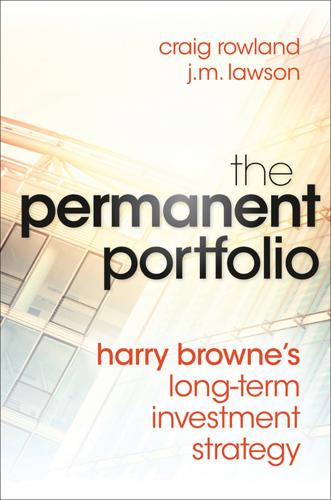
The Permanent Portfolio
by
Craig Rowland
and
J. M. Lawson
Published 27 Aug 2012
These funds maintain a constant average years to maturity and require no action on your part other than to periodically rebalance the entire portfolio. Buying Bonds There are three basic ways to buy U.S. Treasury long-term bonds: 1. At auction from the Treasury. 2. On the secondary market. 3. Through a bond fund. At Auction or on Secondary Markets Buying and holding bonds directly is the best and safest way to have exposure to Treasury bonds. This can be done at a bond auction or on the secondary market. Buying and holding bonds directly is the best and safest way to have exposure to Treasury bonds. Buying bonds at auction from the Treasury can be done in two primary ways: 1. Open an account at Treasury Direct (www.treasurydirect.gov) to make the purchase. 2.
…
Some companies (like Vanguard) won't even let you buy back into a fund you have just sold for 60 days. Some funds may also charge you an early sale redemption fee as a penalty. This sort of policy is in place to keep the market timers and performance chasers from hurting the long-term holders of the fund and keep down costs. The difference here doesn't matter much for a buy-and-hold investment strategy like the Permanent Portfolio. The hourly or even daily fluctuations in price are irrelevant. However there is one major difference between ETFs and mutual funds: trading costs. When you buy a mutual fund you send your money to your broker or fund custodian and make the purchase.

file:///C:/Documents%20and%...
by
vpavan
Instead, they make their money off the "spread," or the difference between what the firm paid to buy the bond and the price at which the firm sells the bond to you. Warren Buffett, the chairman and CEO of Berkshire Hathaway Inc. and one of the smartest investors I've ever met, knows all about broker conflicts. He likes to point out that any broker who recommended buying and holding Berkshire Hathaway stock from 1965 to now would have made his clients fabulously wealthy. A single share of Berkshire Hathaway purchased for $12 in 1965 would be worth $71,000 as of April 2002. But any broker who did so would have starved to death. While working in the early 1950s for his father's brokerage firm in Omaha, Neb., Buffett says he learned that "the broker is not your friend.
…
Louis–based Edward Jones, whose 7,500 branch offices dot just about every Main Street in America. If you are among the 5.4 million customers of this regional brokerage firm, and are satisfied with the service you are getting, then relax. The 8,000 brokers at Edward Jones work on commission, but they are trained to teach their customers to invest for the long term— that is, to buy and hold for at least ten, and up to twenty, years when possible. Managing Partner John Bachmann says the typical Edward Jones customer holds the same mutual fund for twenty years, against an industry average of four years. That tells me his brokers aren't putting their financial interests ahead of their clients'.
…
It found that the lower the turnover, the better the performance, because turnover drives up trading costs, such as brokerage commissions, and trading costs reduce results. So why do managers persist with their frenetic buying and selling? Because they are convinced that they can add value by outsmarting the market on a day-to-day basis rather than buying and holding for the long term. "Short-term speculation is what they're doing," gripes Vanguard founder Bogle. "All this thrashing around hits investors with higher transaction costs and higher taxes, but no observable improvement in fund performance." Too many fund managers also buy stocks when they think the market is about to move up and sell when they believe the market is getting ready to swoon.
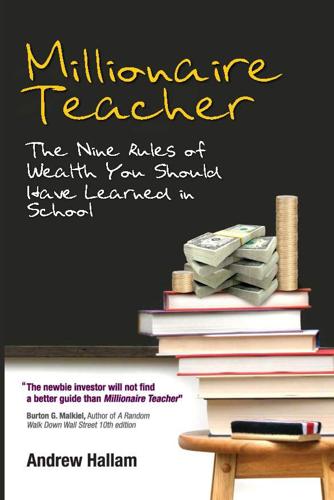
Millionaire Teacher: The Nine Rules of Wealth You Should Have Learned in School
by
Andrew Hallam
Published 1 Nov 2011
This is called a “100 percent turnover.”21 The trading practices of most mutual fund managers trigger short-term capital gains to the owners of those funds (when the funds make money). In the U.S., the short-term capital gain tax is a hefty penalty, but few actively managed fund managers seem to care. In comparison, index-fund investors pay far fewer taxes in taxable accounts because index funds follow a “buy and hold” strategy. The more trading that occurs within a mutual fund, the higher the taxes incurred by the investor. In the Bogle Financial Markets Research Center’s 15-year study on after-tax mutual fund performances (from 1994 to 2009), it found actively managed stock market mutual funds were dramatically less tax efficient than a stock market index.
…
Just remember this: no matter what kind of early results you achieve, don’t get romanced by the notion that it’s going to be easy to beat the market—and don’t allocate more than a small portion of your portfolio to individual stocks. Commit to the Stocks You Buy I don’t believe most millionaires trade stocks. If they own any shares at all, I believe they buy and hold them for long periods, much like they would if they bought a business, an apartment building, or a piece of land. Numerous international studies have shown that, on average, the more you trade, the less you make after taxes and fees.4 So forget about the high-flying, seductive rants and quacks on CNBC’s financial program Squawk Box, convincing you to react to any market hiccup.
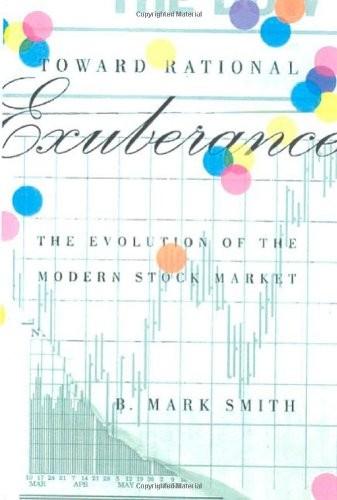
Toward Rational Exuberance: The Evolution of the Modern Stock Market
by
B. Mark Smith
Published 1 Jan 2001
Johnson described his approach as laissez faire without chaos.11 He believed in diversification, but he also sought to beat the market by aggressive stock selection. Johnson’s approach at Fidelity was unorthodox; he would trade stocks actively, instead of adopting the traditional conservative “buy and hold” strategy. “We didn’t want to feel we were married to a stock when we bought into it …,” he commented. “Possibly now and again we liked to have a ‘liaison’—or even, very occasionally, a couple of nights together.” 12 Johnson’s track record was good; his marketing strategy was even better. By the time he finally turned Fidelity Funds over to his son in 1972, the funds’ assets under management had grown from $3 million to $3 billion.
…
The 9% return greatly exceeded that received by bond investors over the same period, confirming Lawrence Smith’s work of 1924, which had first made the case for stocks over bonds but had seemingly been discredited in the 1930s. The Fischer-Lorie study implied that impressive long-term results could be achieved simply by buying and holding a portfolio representative of the entire market. This dovetailed neatly with William Sharpe’s conclusion that the most risk-efficient portfolio an investor could buy was a portfolio representing the entire market. Fama waded into the discussion with his Ph.D. dissertation in 1965, published in the Journal of Business, in which he defined the term “efficient capital market.”
…
But the study (which concluded in 1969) also found that these same funds underperformed the market when stock prices turned down in 1969.40 In effect, the performance funds exaggerated moves in the overall market, rising faster in bull market periods but falling faster in bear market environments. The Wharton study also found that, unsurprisingly, the emphasis on short-term performance induced mutual fund managers to speed up the pace at which they bought and sold stocks. The old “buy and hold” strategy had seemingly fallen by the wayside. In 1960 the turnover rate for mutual fund portfolios had been only 17.6%, up only slightly from the 13.1% figure for 1953. But then the pace of trading exploded, reaching 46.6% (for the average fund) in 1968. As has been seen, the turnover rate for the most aggressive performance funds was significantly higher still.
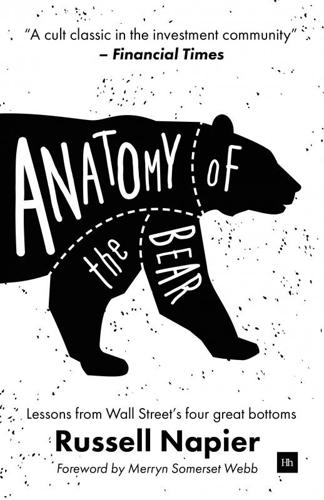
Anatomy of the Bear: Lessons From Wall Street's Four Great Bottoms
by
Russell Napier
Published 18 Jan 2016
Of course, as well as determining the biggest bear market bottoms by reference to valuation criteria, this study also selects periods for analysis by reference to subsequent returns to investors. In particular, we focus on those periods when investors could confidently pursue a buy and hold strategy and achieve above-normal returns. As Figure 90 shows, the December 1974 market bottom created a great trading opportunity, but it is less clear that it produced a great buy and hold opportunity. FIGURE 90. DOW JONES INDUSTRIAL AVERAGE – JANUARY 1965 TO DECEMBER 1984 Source: Dow Jones & Co. There is a clear contrast between the gyrations of the market after December 1974 and the broad advance in prices, which set in after 1921, 1932, 1949 and 1982.
…
If no such price adjustment is associated with a decline in the stock market then this may not be one of these great buying opportunities. This is not to say that one can’t buy into declining equity prices in the absence of a major disruption of the general price level. However it is to say that the absence of such a price disruption may mean that equities have not reached such a low level as to permit one to pursue a long-term buy and hold strategy. Low valuations, when combined with a return to normalcy in the general price level, are likely to provide the best prospect of above-normal returns for investors. The general price level refers to the prices of all goods and services in the economy. The term is used in this book to avoid confusion with the regular references to more specific price changes.

MONEY Master the Game: 7 Simple Steps to Financial Freedom
by
Tony Robbins
Published 18 Nov 2014
They’re trading. They are buying and selling stocks and bonds on a daily, monthly, or quarterly basis. This is what the industry calls “turnover.” According to Charlie Farrell of CBS MarketWatch, “So although their marketing material encourages investors to buy and hold, the managers certainly don’t practice what they preach. What they really mean is buy and hold their mutual fund, while they trade your retirement savings like crazy.” Experts say that the vast majority of mutual funds do not hold on to their investments for a full year. Why else would you buy them other than hoping they can trade their way to better performance?
…
Jack Bogle, founder of Vanguard (which, incidentally, offers many ETF funds), told me he sees nothing wrong with owning broad-spectrum index ETFs, but he warns that some are too specialized for individual investors. “You can not only bet on the market,” he told me, “but on countries, on industry sectors. And you may be right and you may be wrong.” David Swensen wonders why individual investors should bother with ETFs at all. “I’m a big believer in buying and holding for the long run,” he told me. “The main reason you’d go into an ETF is to trade. And so I’m not a big fan.” 2. High-Yield Bonds. You might also know these as junk bonds, and there’s a reason they call them junk. These are bonds with the lowest safety ratings, and you get a high-yield coupon (higher rate of return than a more secure bond) only because you’re taking a big risk.
…
One dollar invested in the S&P 500 on December 31, 1999, was worth 90 cents by the end of 2009. But according to Burt Malkiel, if you had spread out your investments through dollar-cost averaging during the same time period, you would have made money! Malkiel authored a Wall Street Journal article titled “ ‘Buy and Hold’ Is Still a Winner,” in which he explained that if you were diversified among a basket of index funds, including US stocks, foreign stocks, and emerging-market stocks, bonds, and real estate, between the beginning of 2000 and the end of 2009, a $100,000 initial investment would have grown to $191,859.
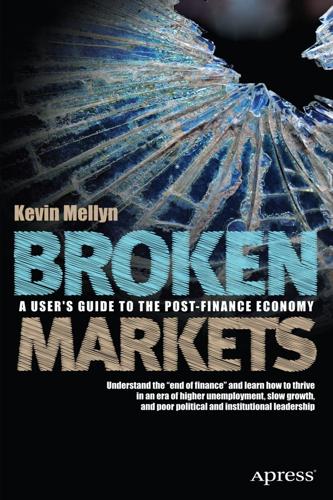
Broken Markets: A User's Guide to the Post-Finance Economy
by
Kevin Mellyn
Published 18 Jun 2012
• The third pillar of repression is structural: the direct government ownership of banks, or effective government direction of their business decisions, including measures to direct credit to government-favored uses. Restrictions on entry into the financial industry and reducing the number of competitors through consolidation are also part of the package. How does financial repression work? Basically, it sees to it that investors are herded into buying and holding government debt at negative real interest rates while inflation eats away at the real value of the debt. If the combination of low rates and inflation runs to 4 or 5 percent a year, the value of debt as a percentage of the economy can fall 40 or 50 percent in a decade, even without compounding.
…
The fabled wisdom that equities always outperform bonds over the long run is correct, but as Keynes said, in the long run we are all dead. Most of the gains in the market, and most of the losses, occur in very short inflection 137 138 Chapter 6 | The Consumer in the World After Finance points that are unpredictable. Buying and holding means you won’t miss the good surprises, but you won’t avoid the bad ones either. Download from Wow! eBook <www.wowebook.com> What is certain is that equities are a claim on future earnings, which are always subject to events and shifts in sentiment. Given that, companies that make money in transparent ways and can actually pay a dividend to shareholders are often safer bets.
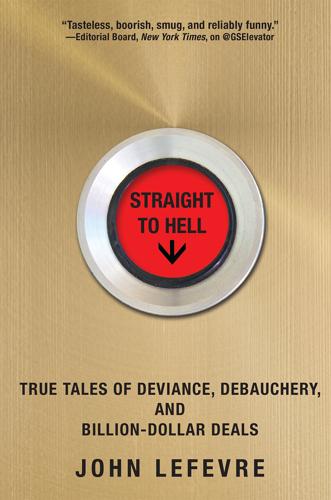
Straight to Hell: True Tales of Deviance, Debauchery, and Billion-Dollar Deals
by
John Lefevre
Published 4 Nov 2014
Once we get the issuer to sign off on the deal terms, we’re ready to allocate bonds to investors, get the deal across the finish line, and then move on to the next one. The allocation process is one of the most nuanced and contentious aspects of the execution process, and probably the most important. Our primary focus when it comes to allocating bonds is to do what’s in the best interests of the deal—place the bonds in safe hands (i.e., serious long-term buy-and-hold accounts who are participating in the deal because they know and like the credit, not because they think it’s a hot deal and they can “flip the bonds on the break,” or sell them immediately after the deal prices). However, it’s not always as straightforward as that. Part of what makes the allocation process such an art form is that we have total discretion to allocate bonds to whomever we choose and for whatever reason.
…
For some unknown reason, he must have been told that this is a really hot deal, despite the obviously weaker market backdrop. Part of the reason he might think that the deal is still in good shape is that’s what we’re telling our sales force to say: that the order book is comfortably oversubscribed with key anchor orders and high-quality, real money (buy-and-hold) investors with little price sensitivity. Smithers yells back across the three rows that separate us. “By the way, you know the Duke is Roo’s client. Can you put the order in for her? She’s not around and I can’t access any of her clients in the system.” I put the order in for Roo and then shoot her a quick email so that she knows to confirm it when we launch final deal terms.

Quantitative Value: A Practitioner's Guide to Automating Intelligent Investment and Eliminating Behavioral Errors
by
Wesley R. Gray
and
Tobias E. Carlisle
Published 29 Nov 2012
To put this in context, on December 31, 2011, the smallest stock in our investable universe had a market capitalization of $1.4 billion. We measure the stock returns from January 1964 through December 2011. We determine market capitalization by the value on June 30 of year t. We calculate stock fundamentals on December 31 of year t − 1. We sort the stocks into deciles on each measure on June 30 of year t, and then compute the buy-and-hold monthly returns from July of year t to June of year t + 1. We rebalance the portfolios annually. THE RACE CALL We analyze the compound annual growth rates of each price ratio over the 1964 to 2011 period for market capitalization–weighted decile portfolios. We find the best-performing price ratio measured on a raw compound annual growth rate is the EBIT variation of the enterprise multiple.
…
Universe Selection and Back-Test Assumptions Description Market Capitalization NYSE 40% breakpoint23 Exchanges NYSE/AMEX/Nasdaq Real estate investment trusts (REITs) Business development companies (BDCs) Tracking stocks Limited partnerships (LPs) Master limited partnerships (MLPs) Excluded Security Types Mortgage REITs Royalty trusts Exchange-traded funds or notes (ETFs, ETNs) Closed-end funds American depositary receipts (ADRs) or Americandepository shares (ADSs) Special-purpose acquisition companies (SPACs) Excluded Industries Financials Utilities Return Data CRSP: Prices adjusted for dividends, splits, and corporate actions Fundamentals Data Compustat: Annual data starting December 31, 1962 Delisting Algorithm “Delisting Returns and Their Effect on Accounting-Based Market Anomalies,” by William Beaver, Maureen McNichols, and Richard Price24 Portfolio Weights Market capitalization weighted One-year buy-and-hold returns Formation Date June 30 of year t Fundamentals Date December 31 of year t − 1. Firms with fiscal years ending before March 31 of year t use year t fundamentals, after March 31 use year t − 1 fundamentals Data Requirements Firms must have data for all core data items We don't generate our ideas through statistical analysis and curve fitting.
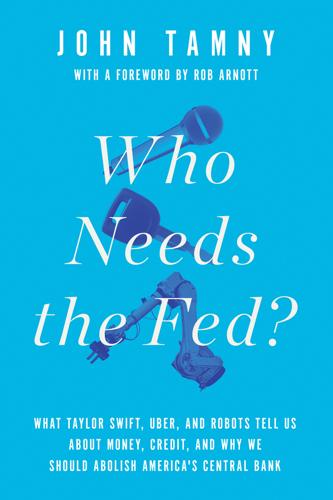
Who Needs the Fed?: What Taylor Swift, Uber, and Robots Tell Us About Money, Credit, and Why We Should Abolish America's Central Bank
by
John Tamny
Published 30 Apr 2016
Some will point to the 693,518-percent gain in Berkshire Hathaway shares since Buffett took over the holding company in 1965 (versus the S&P 500’s 9,841-percent increase)7 and claim that Buffett’s keen eye for companies wouldn’t desert him in the Senate. Maybe not, but what would be taken from him is the ability to fix the corporations he invests in. While Buffett is known to “buy and hold,” he doesn’t allow the businesses he owns to operate like charities. As he acknowledged in a 2015 op-ed for the Wall Street Journal, job loss in the modern economy is normal. It is “simply a consequence of an economic engine that constantly requires more high-order talents while reducing the need for commodity-like tasks.”8 Buffett knows well that for businesses to thrive, they must sometimes reduce head count.
…
It is “simply a consequence of an economic engine that constantly requires more high-order talents while reducing the need for commodity-like tasks.”8 Buffett knows well that for businesses to thrive, they must sometimes reduce head count. But as Senator Buffett, his ability to discipline flabby corporations would be severely limited by politicians who are eager to protect their constituents’ jobs. Buffett doesn’t always “buy and hold.” Despite the lousy investment reputation of airlines, Buffett once took a large position in what was then U.S. Air.9 While he ultimately cashed out of the airline, had he been investing taxpayer funds, doing so would not have been as simple. Just as Senator Buffett wouldn’t be able to force the kinds of restructurings that companies require, so would it be politically impossible for him to sunset bad investments.
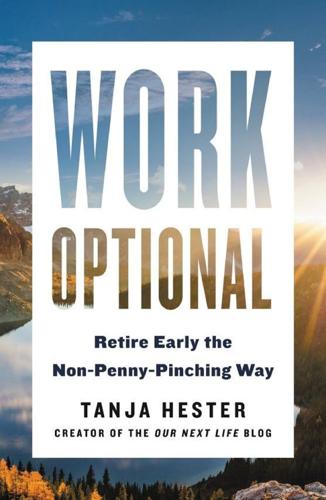
Work Optional: Retire Early the Non-Penny-Pinching Way
by
Tanja Hester
Published 12 Feb 2019
As the saying goes, “Time in the markets is more important than timing the markets.” The nature of the markets is to go up and down, so you do need to get used to the idea that sometimes your accounts will look like they’ve lost money. But you only lose money when you sell shares and lock in your losses, so if you buy and hold for the long term, those short-term fluctuations don’t matter, and you’re better off tuning them out. So long as you don’t need the money you’re investing in the markets right away, you’re virtually guaranteed that it will gain in value over time. And as a smart investor, you’re only interested in the long term.
…
That could be explained by two factors: (1) Trading fees on stock transactions can disproportionately erode gains, especially for investors who trade often, and (2) people who buy individual stocks are more likely to get caught up in market frenzies and panics, buying high and selling low, the opposite of the buy-and-hold strategy that is the cornerstone of creating magic money. Unless you have access to discounted stock-buying opportunities through an employee stock purchase plan, avoid making individual stocks a large part of your portfolio. Bonds, however, are a good hedge against stock market volatility and belong in your portfolio.

Inside the House of Money: Top Hedge Fund Traders on Profiting in a Global Market
by
Steven Drobny
Published 31 Mar 2006
Keynes’ distaste of floating currencies (ironically his original vehicle of choice for speculating) eventually led him to participate in the construction of a global fixed currency regime at Bretton Woods in 1945.The post-World War II economic landscape, coupled with the ensuing Cold War–induced peace and the relative stability fostered by Bretton Woods, led to a boom in 500 450 Keynes 400 UK Broad Country Index Initial Base Value (100) 350 300 250 200 150 100 50 19 45 19 44 19 43 19 42 19 41 19 40 19 39 19 38 19 37 19 36 19 35 19 34 19 33 19 32 19 31 19 30 19 29 19 28 0 FIGURE 2.1 King’s College Cambridge Chest Fund and the UK Broad Country Equity Index Source: Motley Fool. THE HISTORY OF GLOBAL MACRO HEDGE FUNDS 7 developed-country equity markets starting in 1945 and lasting until the early 1970s. During that time, there were few better opportunities in the global markets than buying and holding stocks. It wasn’t until the breakdown of the Bretton Woods Agreement in 1971, and the subsequent decline in the U.S. dollar, that the investment universe again offered the opportunities that spawned the next generation of global macro managers. POLITICIANS AND SPECULATORS Recent history is riddled with examples of politicians attempting to place blame on speculators for shortcomings in their own policies, and the breakdown of Bretton Woods was no exception.
…
Applying this concept to higher yielding currencies versus lower yielding currencies was my most profitable trade ever. I got to the point in this trade where I was running portfolios of about $6 billion and I remember central banks being shocked at the size of currency positions I was willing to buy and hold over the course of years. FORWARD RATE BIAS The empirical tendency of forward exchange rates is to overestimate changes in spot exchange rates. According to the theory of uncovered interest arbitrage, forward exchange rates are unbiased predictors of future spot exchange rates, implying that a forward contract’s expected return equals 0 percent.
…
See also Sterling Brown Brothers, 271 BTPs (Buoni del Tesoro Poliennali), 85–87 Bucket shops, 36 Buffett,Warren, 278, 292 Bull/bullish market, 83, 107, 123, 217, 225–226, 228, 230–231, 239, 273 Bund/BTP convergence trade, 85–87 Bundesbank, 14 Bunds, 75, 340 Business cycle, global, 328–329 Butterfly options, 46 Buy and hold strategy, 7, 47 Buy low, sell high, 228–229 Buy signals, 226 Call options, 85 Canada, 167 Canadian dollar, 67, 239, 286 Capital allocation, 24, 33, 98–99, 315, 321 Capital preservation, 144, 323–324 Carry trades, 78–79, 110–111, 113, 117–118, 125, 134 Cash market, 85 Caxton, 9–10, 33 Central bank(s)/banking, 32, 40, 83, 139–140, 148, 151–153, 161–162, 167–170, 204, 313, 331 Central banker(s), 13–14, 160, 229, 349.
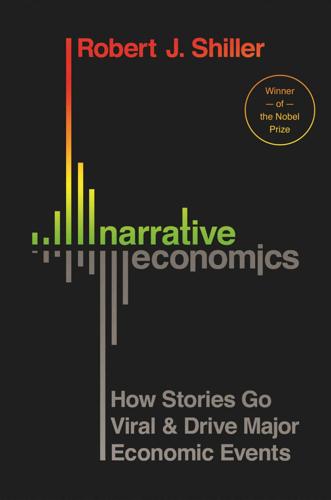
Narrative Economics: How Stories Go Viral and Drive Major Economic Events
by
Robert J. Shiller
Published 14 Oct 2019
This narrative has an element of truth to it, as professional narratives generally do, though there is now a professional literature that finds imperfections not predicted by the theory. Occasionally these professional narratives translate into popular narratives, but the public often distorts these narratives. For example, one distorted narrative states that a buy-and-hold strategy in the domestic stock market is the best investment decision. That narrative conflicts with the professional canon, despite the popular idea that the buy-and-hold strategy comes from scholarly research. Like the popular interpretation of the random walk, some distorted narratives have an economic impact for generations. As with any kind of historical reconstruction, we cannot go back in time with a sound recorder to capture the conversations that created and spread the narratives, so we have to rely on indirect sources.
…
See also neurolinguistics and narrative; neuroscience and narrative breadline, 134 Brooks, Peter, 16 Brown, Donald E., 33 Brown, Roger, 307n13 Bruner, Jerome, 65 Bryan, William Jennings, 108, 164, 167–68, 170, 171, 172, 313n29 Buffett, Warren, 4 Burns, Arthur F., 125, 309n10 Bush, George W., 83, 154–55 business confidence narrative, 114–15, 116f, 118–19; conventional economists’ view and, xvi–xvii; gold standard and, 167, 168–69; stimulated by Bitcoin narrative, 4 business cycle, 124–25, 271. See also economic fluctuations butterfly effect, 299–300 buy-and-hold strategy, xiii “Buy Now Campaign” during Great Depression, 255 Callahan, Charlene, 281 Canada, National Dream, 151; Bank of Canada, 156 Čapek, Karel, 181–82, 203 Capital in the Twenty-First Century (Piketty), 150, 210–11 capitalism: Bitcoin narrative and, 87; triumphant narrative of, 29 Capper, Arthur, 249 The Captive Mind (Milosz), 57 Carroll, Lewis, 188 Case, Karl, 216, 226, 285 Case-Shiller home price index, 216, 222 Cass, David, 74 Cassel, Gustav, 188 causality between narratives and events, 71–74; controlled experiments and, 72–73, 77–79; vs. correlation, 286; direction of, 71, 72–74; economists’ presumption about, 73, 76–77; flashbulb memory and, 80; for recessions and depressions in US, 112.

Finding Alphas: A Quantitative Approach to Building Trading Strategies
by
Igor Tulchinsky
Published 30 Sep 2019
Hence, a strategy applied to assets with high spreads yields increased returns in exchange for a fixed cost: in line with the aforementioned results, a 1% extra fixed cost as a result of increased spread is counterbalanced by the elevated return over a excess spread 1 , or roughly five months. In period of monthly excess return 0.211 other words, buy-and-hold investors with at least a five-month-long investment horizon, or investors trading daily alphas with turnover less monthly excess return 0.211 number of days in a month 21 , or roughly 1%, seek a profit than excess spreadd 1 by investing in assets with a higher spread. Liquidity can be measured in alternative ways.
…
Strictly defined, all day-trading positions are closed before the market closes. Many traders, however, include day trading as one component of an overall strategy. Traders who trade intraday with the motive of profit are considered speculators rather than hedgers or liquidity traders. The methods of quick trading contrast with the long-term methods underlying buy-and-hold and value investing strategies. It may seem quite unremarkable that a trader can buy and sell an instrument on the same day, but day trading is a relatively new concept. Although the practice can be traced back to 1867 and the creation of the first ticker tape, there were significant barriers to entry at that time, and as a result this type of trading was not popular among the general population.
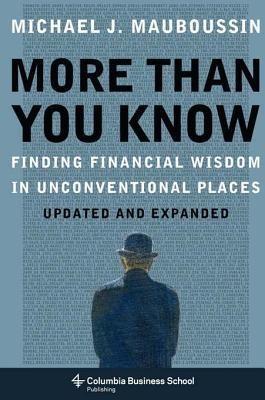
More Than You Know: Finding Financial Wisdom in Unconventional Places (Updated and Expanded)
by
Michael J. Mauboussin
Published 1 Jan 2006
We may be able to attribute this performance difference to lower costs—a reason in and of itself to reduce turnover for many portfolios—but we would note that transaction costs tend to represent only about one-third of total costs for the average mutual fund. Despite consistent evidence supporting the performance benefits of a buy-and-hold strategy, the average actively managed mutual fund has annual turnover nearly 90 percent. What gives? First off, an efficient stock market requires investor diversity—across styles and time horizons. Not everyone can, or should, be a long-term investor. This fallacy of composition is the flaw behind the “Dow 36,000” theory, which argues that if all investors adopt a long-term horizon, the equity-risk premium will dissipate and the market will enjoy a onetime rise.9 Changing the nature of the investors changes the nature of the market.
…
See also loss aversion; psychology of investing behaviors: anchoring; certainty and; herding; information overload; pattern-seeking Beinhocker, Eric belief bell curve Benartzi, Shlomo Bernoulli, Daniel Bernstein, Peter Bernstein, William BetFair Bet with the Best (Crist) Bezos, Jeff blackjack Black-Scholes options-pricing model Bogle, Jack C. bomb search boom-and-bust phenomenon Bosch-Domènech, Antoni boundary rules Brady commission brain development Buffett, Warren buy-and-hold strategy Calculated Risks (Gigerenzer) Calvin, William Camerer, Colin Campbell, Donald capital, tangible vs. intangible capital-asset pricing model (CAPM) capital gains taxes card experiment Carlile, Paul cash flow return on investment (CFROI); downturns cash-flow-to-net-income ratio categorization cause and effect; complex adaptive systems and; human explanation for; press reports cause and effect thinking cave paintings centralized control certainty/uncertainty Chamberlain, Wilt Chan, Louis K.

Inflated: How Money and Debt Built the American Dream
by
R. Christopher Whalen
Published 7 Dec 2010
Today, even among auditors and federal regulators, the use of speculative estimates and “forward looking” indicators is widely accepted as a reasonable means to conduct oversight and surveillance of the internal workings of companies and banks.28 Instead of gradually sharing in the additive growth of a company through dividends, the prevailing “investment” model became to buy a stock at one price and sell it at a higher price to another market participant—in part because the rate of change in a given company or industry was so rapid that the traditional buy and hold investment strategy could not keep up. This transient view of the value offered by a company stock or government bond is typified today by television programs such as Mad Money, the CNBC program hosted by former Goldman Sachs trader Jim Cramer. Cramer derides buy and hold or “value” investing of the type advocated by Graham and Dodd, and instead instructs his viewers to jump from one stock to the next in a speculative fashion. This view of money and investing as an essentially speculative activity says a great deal for the way in which modern day Americans view their world.
…
Brazil, foreign loan moratorium Bretton Woods currency system interment (1994) internationalist vision, Korean War conflict Bretton Woods Agreement (1944) arrangement, impact cessation criticism Keynes, impact ratification Bryan, William Jennings American Bimetallic League sponsorship Bryanism, popularity defeat political speech (Chicago convention 1896) Burns, Arthur economic expansion limitation gold perspective interest rate increase valedictory speech (1979) Bush, George W. Business attack cycles, Keynes theory (formulation) FDR revanchist campaign government oversight, Republican laissez faire approach Business expansion (financing), private debt (usage) Buy and hold investing, derision Byrd, Robert Calder, Lendol Financing the American Dream Calhoun, John C. California economic activity, gold production stimulation Callan, Charles (Back Door to War) Call loans, liquidations Calomiris, Charles Camp David international settlements secret meeting Canova, Anthony Capital free flow funds, private deman (low level) importer Captive financing vehicles Cardenas, Lazaro Carnegie, Andrew investments, pooling Morgan buyout Carter, Jimmy cabinet reshuffle conservatism Miller selection nomination policy, inconsistency spending caution Catterall, Ralph C.H.
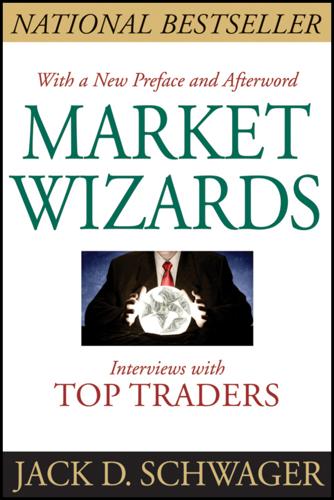
Market Wizards: Interviews With Top Traders
by
Jack D. Schwager
Published 7 Feb 2012
Your transition from being a losing trader to being very successful coincided with the big bull phase in the commodity markets during the early to mid-1970s. How much of your early success was due to your skills as a trader and how much was just the markets? Honestly, I think the markets were so good, that by buying and holding you just couldn’t lose. There were a lot of other success stories. Fortunes were being made. But a lot of those people didn’t keep their fortunes. That’s true. But, I was very fortunate. By the time the markets got difficult again, I was a good trader. By then, I had really learned my craft.
…
One of the advantages of trading the way I do—being a long-term investor, short-term trader, individual stock selector, market timer, sector analyst—is that I have made so many decisions and mistakes that it has made me wise beyond my years as an investor. The typical mutual fund adheres to a buy-and-hold approach. Do you think that concept is basically a flawed strategy? Yes, although flawed isn’t quite the word I would use. I would say it is too limiting a strategy. The objective of participating in the long-term growth of American equities, willing to suffer through those periods when equities decline, is fine, but it leaves so much on the table in terms of potential professional management.
…
It is an incomplete strategy. Yet, the vast majority of all funds fall into that category. I guess so, but less than before. More and more people are paying attention to market timing, not that they are necessarily qualified to do it terribly well, but because they have come to recognize what a buy-and-hold approach means. When I was a kid, it was common advice to buy a stock, put it in a vault, and forget about it. You don’t hear that sort of concept anymore. We have lost confidence in the long term. Do you think the mutual fund industry is going to change? The mutual fund industry is certainly sensitive enough to the whims of the investing public to find products that will meet contemporary needs.
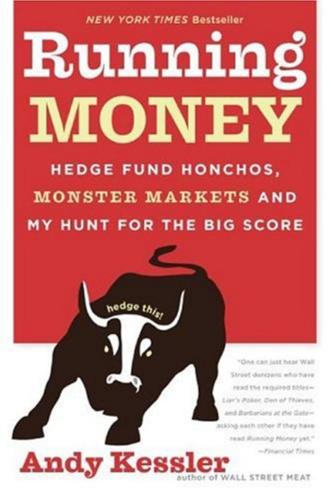
Running Money
by
Andy Kessler
Published 4 Jun 2007
I made Fred come along. We were running our fund out of a dumpy office above an arts store in Palo Alto (low overhead). Anyone who visited probably thought we were running some investment-scam bucket shop instead of a hedge fund. I dunno, some days I wondered if we weren’t. Our fund was different from most. We were buy and hold—stocks only. I’d rather eat pork bellies than trade them. We invested mostly in small public companies and a few interesting private companies. I wasn’t so sure about this one. I’d had no plans to go anywhere that day, so I was wearing jeans and, I’m pretty sure, a clean shirt. Fred and I hit Sunnyvale and parked close to a nondescript steel- Ssangyong Sweat 3 and-glass box like those that house every company in the Valley.
…
I think what I learned is that wealth comes not just from taking risk but from constantly taking risks. The four-door office isn’t a metaphor, it’s reality. You can be a long-term investor, but you constantly have to adjust your sights to the next big thing. We may be in the midst of a long cycle like the British 100-year industrial boom, but that doesn’t mean you can buy and hold and be on the golf course by noon. What startles me is that those who generate wealth in Silicon Valley run at 100 miles per hour. They don’t own anything of value like a textile mill or an auto factory. They own a process, the 234 Running Money ability to constantly update their products and take advantage of that waterfall, some massive price declines and then move on to the next product or process.

Broken Markets: How High Frequency Trading and Predatory Practices on Wall Street Are Destroying Investor Confidence and Your Portfolio
by
Sal Arnuk
and
Joseph Saluzzi
Published 21 May 2012
Although we wish our markets operated in a manner simple enough that the majority of us could understand it, unfortunately, today’s markets do not operate in simple and intuitive ways. Hopefully, we can illuminate the murkiness to help you understand the highway upon which your investments are traveling. If you are a buy-and-hold investor or a retail trader, we want you to come away understanding new dangers in our market structure that never existed before. We want you to understand that your costs are not just a commission or a bid-ask spread. Your every investment move, order, and trade is recorded and sold/provided to hyper-efficient, short-term HFT firms by the exchanges, similar to how your Internet-browsing is recorded by your search engine provider.
…
October 5, 2009 “What the _____ is going on?” our client asked. “This is screwing our investors!” It was the mid-1990s, and it was our first experience with High Frequency Trading (HFT), which has since grown to become one of the hottest controversies in securities trading today. Our client was a classic, buy and hold institutional investor, managing money for 401ks and pensions. At the time, we were agency institutional traders working at Instinet. Our client had begun to notice how the Instinet top-of-book, which was not part of any national quote, was generating automated orders from a handful of firms that shadowed our institutional clients.

The Investopedia Guide to Wall Speak: The Terms You Need to Know to Talk Like Cramer, Think Like Soros, and Buy Like Buffett
by
Jack (edited By) Guinan
Published 27 Jul 2009
An investment strategy that does not include active buying and selling of securities. Passive investors purchase investments with the intention of long-term appreciation and thus have limited portfolio turnover. Index fund investing, in which shares in the fund simply mirror an index, is a form of passive investing. Investopedia explains Passive Investing Also known as a buy-and-hold or couch potato strategy, passive investing requires good initial research, patience, and a well-diversified portfolio. Unlike active investors, passive investors buy a security and typically do not actively attempt to profit from short-term price fluctuations. Passive investors instead rely on their belief that in the long term the investment will be profitable.
…
See Stock split 329 330 Index Book value, 27, 173, 229. See also Net tangible assets BPS. See Basis point (BPS) Breakpoint, 27-28 Broker-dealer, 28, 127, 174-175 Buffett, Warren, 92, 113 Bull market, 29, 134, 149 Business cycle, 29-30. See also specific trends Buy. See Bid Buy side, 30 Buy to cover, 30-31. See also Short covering Buy-and-hold. See Passive investing Buyback, 31. See also Short covering Buying on margin. See Margin Buy/sell orders. See under Stop Buy-write. See Covered call CAGR. See Compound annual growth rate (CAGR) Call, 26, 33, 51-52, 56-57, 240, 282 Call option, 34, 117, 134, 214-215, 285-286 Call period, 33 Callable bond, 34 Candlestick, 34-35 Capital, 35.

Nothing but Net: 10 Timeless Stock-Picking Lessons From One of Wall Street’s Top Tech Analysts
by
Mark Mahaney
Published 9 Nov 2021
I bought two pairs for my then teenage sons, who never even opened the boxes. And they were rabid Snap users. Red flag number two. About three weeks after SNAP’s IPO, I initiated research coverage with an Outperform rating and a $31 price target, with the stock at $22.74. And I proceeded to get the stock wrong for the next two years as I vacillated between Buy and Hold recommendations while the stock sank 81%, to $4.99 in December 2018. Perhaps that sinking should have been clear just from the company’s first public earnings report, when its shares collapsed 21% in one day due to a miss versus Street revenue and EBITDA estimates. The Long thesis in my initial SNAP Outperform recommendation revolved around the company’s industry-leading growth rate, its unique and strong appeal to millennials (survey work showed Snap to be very popular with younger users), its relatively good product innovation track record (the fact that Facebook sought to aggressively copy Snap’s feature innovations spoke volumes about how good product development was at Snap), and its potentially large market opportunity (a close to $1 trillion global advertising market).
…
Amazon, for example, outperformed the market 89% of the time when it was trading at a PEG less than 1, whereas it outperformed the market 74% of the time when it was trading at a PEG greater than 1. (See Table 10.5.) TABLE 10.4 The Returns from Buying the Dislocations on High-Quality Tech Stocks The biggest takeaway from the analysis is simply to buy and hold the highest-quality stocks—they simply consistently outperform if you hold them for a reasonable period of time (one year). But there is some help in here in terms of looking for buying/adding points. The old maxim is: “Buy low and sell high.” My experience analyzing tech stocks alters that as follows: “Buy high-quality stocks, especially when they are dislocated.
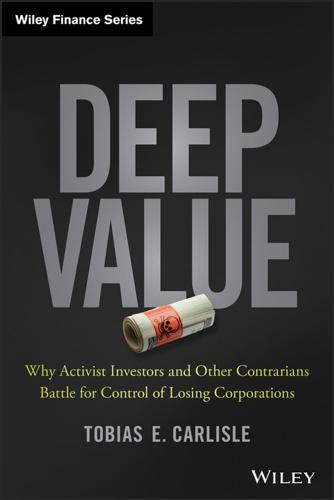
Deep Value
by
Tobias E. Carlisle
Published 19 Aug 2014
Activism focused on the capital structure increased pay-out ratios by more than 10 percent and 160% 3% 120% 2% 80% 1% 40% 0% 0% Fi –40% 13 D t-1 t-1 t-1 t-1 t-1 t-2 –1% t-2 lli ng t+ 2 t+ 4 t+ 6 t+ 8 t+ 10 t+ 12 t+ 14 t+ 16 t+ 18 t+ 20 4% t-4 200% t-6 5% 0 t-8 240% 2 6% 4 280% 6 7% 8 320% 0 Abnormal Buy-and-Hold Return 8% Share Turnover Relative to (t-100, t-40) 179 How Hannibal Profits From His Victories Abnormal Share Turnover (Right) Abnormal Buy&Hold Return (Left) FIGURE 9.1â•… Excess Buy-and-Hold Returns Around Schedule 13D Filing Source: Alon P. Brav, Wei Jiang, Randall S. Thomas, and Frank Partnoy. “Hedge Fund Activism, Corporate Governance, and Firm Performance (May 2008).” Journal of Finance, Vol. 63, pp. 1729, 2008.
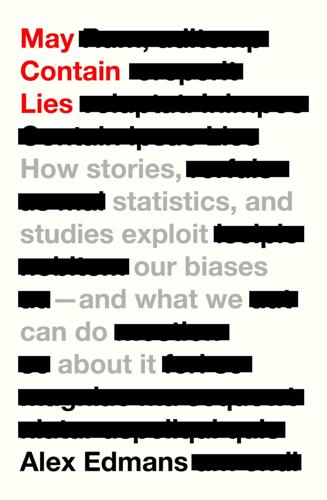
May Contain Lies: How Stories, Statistics, and Studies Exploit Our Biases—And What We Can Do About It
by
Alex Edmans
Published 13 May 2024
What if you simply invested in the overall stock market, rather than trying to pick a few winners – and then left your portfolio alone instead of chopping and changing it each time news broke out? The alternative – what would have happened otherwise – is known as the counterfactual. Brad and Terry found that a buy-and-hold investor, who bought the market and didn’t make a single trade, would have earned 17.9% per year. The 11.4% return to frequent trading should be compared not with zero but with 17.9%. This implies a very different, and sobering, conclusion from Reyes and Dietrich. All that time and effort amateur investors put into trading actually worsens their long-term financial security.
…
The extensive compilation of excitable shareholders is known as the test sample – you’re testing whether it performs better.|| Step three is equally critical – to find a control sample that doesn’t have the input. The high returns to fidgety investors might be nothing to do with the input (frequent trading) but just because the market went up. So you need to find out how much was earned by buy-and-hold investors who didn’t trade at all. Step four is to calculate the average output across the two samples, which gives you the 11.4% and 17.9%. You’re tempted to conclude that frequent trading lowers returns, but there’s one final step. Even if frequent trading has no effect on profits, it could still underperform due to luck.

New Market Wizards: Conversations With America's Top Traders
by
Jack D. Schwager
Published 28 Jan 1994
They think of all sorts of reasons for not taking losses. They select a mental stop point and then fail to execute it. They abandon their game plan. What do you think are the greatest misconceptions people have about the market? In my opinion, the greatest misconception is the idea that if you buy and hold stocks for long periods of time, you’ll always make money 268 / The New Market Wizard Let me give you some specific examples. Anyone who bought the stock market at any time between the 1896 low and the 1932 low would have lost money. In other words, there’s a thirty-six-year period in which a buyand-hold strategy would have lost money—and that doesn’t even include the opportunity loss on the funds.
…
From 1929 to 1932, the market dropped an average of 94 percent. In fact, it has even happened in more modern times—during 1973-74, the “nifty fifty” stocks lost over 75 percent of their value. Is your point that we could get a bear market that would be far worse than most people could imagine? Exactly, and people who have the notion that buying and holding for the long term is the way to go can easily go bankrupt. Wouldn’t your own duration and magnitude rules lead you astray if we get a market that goes down 80 or 90 percent? Not at all. Remember that I use these statistical studies as only one among many tools. How do you handle losing streaks?
…
A far more important trait to winning as a trader, he says, is the ability to admit mistakes. He points out that people who tie their self-esteem to being right in the markets will find it very difficult to take losses when the market action indicates that they are wrong. One sacred cow that Sperandeo believes is really a bum steer is the standard advice to use a buy-and-hold strategy in the stock market. Sperandeo provides some examples of very extended periods in which such a strategy would have been disastrous. PART V Multiple-Market Players Tom Basso MR. SERENITY T o be frank, Torn Basso was not on my list of interview subjects for this book. Although his track record is solid, it is by no means striking.

Currency Wars: The Making of the Next Gobal Crisis
by
James Rickards
Published 10 Nov 2011
The decision is not automatic—she might choose to wear only a sweater—but in this case a decision to wear a warm coat is partly dependent on others’ decisions. The last element is adaptation. In complex systems, adaptation means more than change; rather it refers specifically to learning. Investors who repeatedly lose money on Wall Street themes such as “buy and hold” may learn over time that they need to consider alternative strategies. This learning can be collective in the sense that lessons are shared quickly with others without each agent having to experience them directly. Agents that are diverse, connected, interdependent and adaptive are the foundation of a complex system.
…
bancors bank bailouts, 2008 Bank for International Settlements bank holidays bank lending Bank of England Bank of the United States Banque de France Barro, Robert base money Bear Stearns beggar-thy-neighbor competitive devaluations behavioral economics Belgium Bernanke, Ben on gold and the Great Depression money policies of speech of 2002 Bernstein, Jared bilateral trade relations Black, Fischer black markets black swans (catastrophic events) Blair, Dennis C. Blessing, Karl blue fuel (natural gas) Brazil Bretton Woods era, 1944–1973, Buffett, Warren Burns, Arthur Bush, George W. buy and hold strategy Canada capital controls implementation capital flight capital markets capitalism, state Carter, Jimmy catastrophic collapse catastrophic events central banks gold and aftermath of Panic of 2008 IMF as a global central bank and reserve currencies role in Great Depression See also Federal Reserve, U.S.

Economists and the Powerful
by
Norbert Haring
,
Norbert H. Ring
and
Niall Douglas
Published 30 Sep 2012
Since the introduction of money thousands of years ago, financial intermediaries with more information have been taking advantage of lenders and borrowers with less. —Frank Partnoy, 2009 An army of the financial industry’s bank analysts, brokers and sales people are busy enticing retail investors to give them their money or, at least, to trade on the securities market. The investors, thus persuaded to ignore the time-tested advice of buy and hold, make much less money in the stock exchange than they could, while the financial institutions who are exploiting the power of their expert status increase their fees and their profits from trading against naïve investors. Retail investors tend to buy when prices are high and sell when prices are low.
…
They are therefore at a disadvantage if they trade with institutional investors. Thus the standard recommendation of economically disinterested advisors is to refrain from frequent trading, especially as it is well known that 80 percent of individual investors lose on average, which interestingly is the same ratio for gambling (Barber et al. 2004). Investors should buy and hold diversified portfolios, 56 ECONOMISTS AND THE POWERFUL such as low-cost mutual or index tracking funds. Instead, they trade actively, trying to pick the winners or trying to time the market by disinvesting when they think prospects are bad and investing again when they think prospects are good.

The New Science of Asset Allocation: Risk Management in a Multi-Asset World
by
Thomas Schneeweis
,
Garry B. Crowder
and
Hossein Kazemi
Published 8 Mar 2010
Academic and industry research papers have consistently found that the buywrite strategy on major equity indices such as the Russell 2000 and the S&P 500 Risk Budgeting and Asset Allocation 211 typically outperform the underlying indices on a risk-adjusted basis. For example, see Kapadia, Nikunj, and Szado (2007), and Hill, Balasubramanian, Gregory, and Tierens (2006, 29−46). 3. The favorable and unfavorable periods refer to the performance of the buy-write strategy in comparisons to a buy and hold Russell 2000 investment. The annualized return for the Russell in the unfavorable period (February 20, 2003, to November 16, 2006) and favorable periods (January 1996 to February 2003) was 24.82% and 3.84%, respectively. The volatility in the unfavorable period was 15.34% compared with 22.69% for the favorable period. 4.
…
But some hedge funds also provide a break on the decline in equity values during periods of equity decline by buying stock when individuals are “herd selling” and, in many instances, selling stock because they believe the stock market is “herd buying.” Managers like Julian Robertson were not buyers of growth Myths of Asset Allocation 223 internet stocks during the tech bubble, but concentrated on buy and hold/ value based equities, that is, buying out-of-favor undervalued stocks that investors wished to sell. ALTERNATIVE INVESTMENT STRATEGIES ARE SO UNIQUE THAT THEY CANNOT BE REPLICATED The growth in alternative investment has encouraged a number of firms to offer a series of products called replication indices/benchmark products.
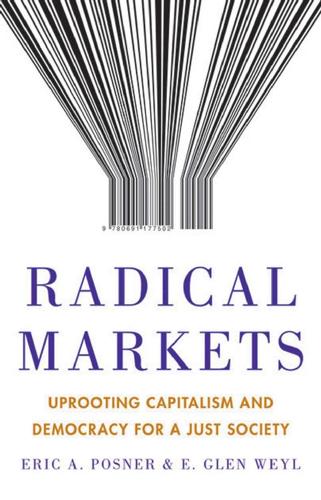
Radical Markets: Uprooting Capitalism and Democracy for a Just Society
by
Eric Posner
and
E. Weyl
Published 14 May 2018
Starting in the 1950s, economists developed financial ideas that came to be known as “portfolio theory” based on these principles.13 The major insight was that for the average investor, it makes more sense to buy shares in a diverse group of corporations mimicking the whole economy than to pick stocks based on conjectures about which companies are best managed. When an investor buys and holds just one stock, she bears the risk that the stock price will fall for reasons specific to that stock, such as its management being incompetent or deceitful. Investors can avoid these stock-specific risks by diversifying widely across the economy. Further theoretical development reinforced these conclusions.
…
The overall effect was that institutional investors, which controlled these funds, became the largest owners, and thus the largest controllers (at least in principle), of the major corporations. Who are the institutional investors, anyway? They include companies that manage mutual funds and index funds, asset managers, and other firms that buy and hold equities on behalf of their customers. The largest names are those we mentioned above: Vanguard, BlackRock, State Street, and Fidelity. Index fund operations are relatively mechanical, so their costs are low; today they comprise probably less than a quarter of the offerings of institutional investors.16 Figure 4.2 displays the growth of the fraction of the US public stock market controlled by institutional investors.
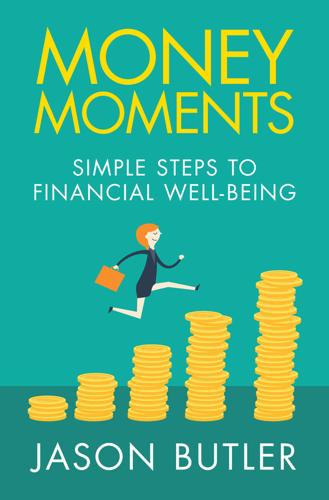
Money Moments: Simple Steps to Financial Well-Being
by
Jason Butler
Published 22 Nov 2017
This is what he has to say about investing: ‘The index fund is a most unlikely hero for the typical investor. It is no more (nor less) than a broadly diversified portfolio, typically run at rock-bottom costs, without the putative benefit of a brilliant, resourceful, and highly skilled portfolio manager. The index fund simply buys and holds the securities in a particular index, in proportion to their weight in the index. The concept is simplicity writ large.’48 So there really is no need to pay high annual charges to have your money managed by a manager who makes decisions on what companies to buy, when and how much. An index or tracker fund approach should be your default.

Saudi America: The Truth About Fracking and How It's Changing the World
by
Bethany McLean
Published 10 Sep 2018
For a long time, the value the public market was willing to accord a fracker was based not on a multiple of profits, which is a standard way of valuing a company, but rather as a multiple of the acreage a company owns. It was a bit like the old dotcom days, when internet companies were valued on the number of eyeballs. The attitude is invest-and-flip, not buy-and-hold. “I view it as a greater fool business model,” one private equity executive tells me. “But it’s one that has worked for a long time.” In the summer of 2017, finger-pointing began regarding who was to blame for the red ink in the shale business. True, investors who expect profits are disappointed in shale companies.
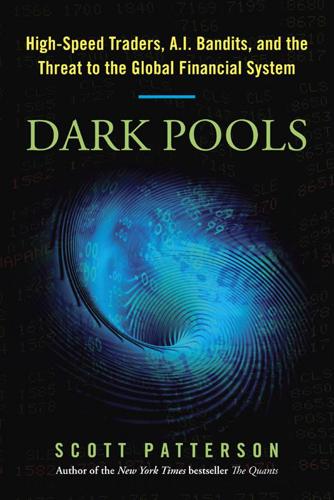
Dark Pools: The Rise of the Machine Traders and the Rigging of the U.S. Stock Market
by
Scott Patterson
Published 11 Jun 2012
“I can’t manage that risk,” he told Selway. Cummings pushed Selway to make fixes, constantly comparing Archipelago to Island—usually unfavorably. He became so demanding that Selway began to worry that Archipelago would become the plaything of big-volume traders such as Tradebot while overlooking the needs of regular buy-and-hold investors. It marked the beginning of the dynamic that years later would lead to the very problems that Haim Bodek faced at Trading Machines, a market in which exchanges catered to the every whim of high-speed traders, eager to win their business. Selway could sense the market forces shifting.
…
Star picked stocks by scanning a dizzying array of statistics, from the price of commodities such as oil and corn to the performance of international currencies to the latest ticks of thousands of stocks around the world. More important, Star had learned its stock-picking strategies on its own. And as time went on, Star kept learning. Star was akin to a digital Warren Buffett, a buy-and-hold computer program able to comb through nearly all tradable stocks in the world and determine which were the best and which the worst. It represented the next evolution in computer trading, pushing the process yet another step toward full automation. While Haim Bodek was experimenting with a man-machine “advanced chess” trading model, Rebellion was leaving the entire process up to the machine itself.

Cryptoassets: The Innovative Investor's Guide to Bitcoin and Beyond: The Innovative Investor's Guide to Bitcoin and Beyond
by
Chris Burniske
and
Jack Tatar
Published 19 Oct 2017
At the start of April 2017, there were just over 16 million bitcoin outstanding. Between international merchants needing 10 million bitcoin, and 5.5 million bitcoin held by the top 1,000 investors, there are only roughly 500,000 bitcoin free for people to use. A market naturally develops for these bitcoin because maybe another investor wants to buy-and-hold 5 bitcoin, or a merchant wants to send US$100,000 of bitcoin to Mexico. Since these people must buy that bitcoin from someone else, that someone else needs to be convinced to let that bitcoin go, and so a negotiation begins. On a broader scale, all these negotiations occur on exchanges around the world, and a market to value bitcoin is made.
…
Yet while innovative investors may take advice from experienced professionals, the final decisions are their own. They adapt their investing approach, strategies, and even selections based on what is occurring around them. This is especially vital in the age of exponential change that we’re living in. Buy and hold works, until it doesn’t. Investing for the long term works until there’s a need for income in retirement. Times change. The markets go up and the markets go down, sometimes in drastic ways. Situations change. A sick relative or job loss can create havoc with any financial plan. Innovative investors are all about choosing their own investing philosophy, their own investing approach, and having their own viewpoint on what is a suitable investment for their own situation.

The Bond King: How One Man Made a Market, Built an Empire, and Lost It All
by
Mary Childs
Published 15 Mar 2022
In September 2010, a full third of Total Return’s holdings were U.S. government–related securities. By December, 22 percent; January, 12 percent. By March, zero. Instead, Total Return bulked up on mortgages, company bonds, emerging market debt, and 23 percent cash or in cash equivalents. “Everything you buy and hold must have value,” El-Erian said, explaining the rationale. “In our estimation, there was better value elsewhere.” Zero Treasuries was bold. Investors benchmark Total Return’s performance against an index, which always has a substantial slug of Treasuries. Any marginal deviation from the index weightings was a call, which clients tracked carefully.
…
Stinker MEXICO EASES CRISIS: Anthony DePalma, “Mexico Eases Crisis, Selling All Bonds Offered,” The New York Times, January 18, 1995. “The right hand is buying from the left”: Jennifer Rubin, “Exclusive Interview: Bill Gross of Pimco,” The Washington Post, April 7, 2011. “We’ve been supporting Treasuries”: Megan McArdle, “The Vigilante,” The Atlantic, June 2011. “preserve capital, preserve capital”: Ibid. “Everything you buy and hold”: Catherine Tymkiw, “Why Pimco Cut Its Bond Holdings,” CNNMoney, March 31, 2011. “Gross got out of Treasurys”: Rubin, “Exclusive Interview: Bill Gross of Pimco.” “showed that he’s more than capable”: Felix Salmon, “Pimco Datapoints of the Day,” Reuters, February 14, 2011. “He has been talking about”: Cullen Roche, “Bill Gross Sells Government Bonds.
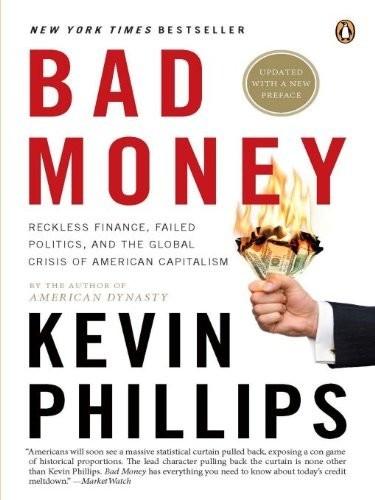
Bad Money: Reckless Finance, Failed Politics, and the Global Crisis of American Capitalism
by
Kevin Phillips
Published 31 Mar 2008
Large parts of American financial markets have become a hall of mirrors. 12 Ordinary investors are starting to pay a price for what is fast becoming a tattered pretense. Information is deficient, not efficient; the theory behind the EMH has spurred a dubious shift toward passive index funds and the “buy and hold” approach and away from market timing and active management. The EMH assumption that the stock market provides the best guide to the value of corporate assets is undercut by the lack of attention to private debt in U.S. and British data collection. In addition, the investment theory taught in U.S. business schools may be useless with respect to East Asia, where complex social networks differ from those of the West.
…
As we have seen, one with the Saudis and OPEC provided that oil would be priced in dollars and that the Persian Gulf producers would recycle their profits by investing in U.S. government bonds and other assets. A second, even more informal, had foreign nations aided or protected militarily by the United States—Japan, Korea, and Taiwan—indirectly share those costs by buying and holding huge quantities of U.S. treasury and agency debt in their reserves and otherwise supporting the dollar. In still another, even less formal arrangement nicknamed “Bretton Woods II” in 2003, China and other high-saving nations that exported vast quantities of goods to the United States, unofficially collaborated by holding large central bank balances in U.S. treasury debt to support the dollar.
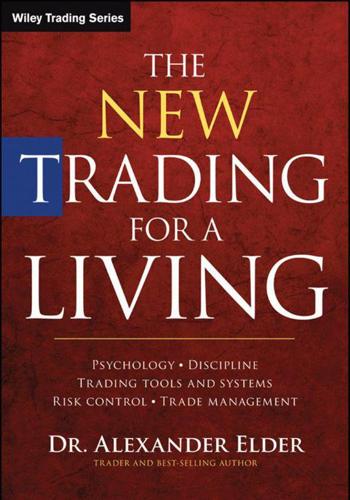
The New Trading for a Living: Psychology, Discipline, Trading Tools and Systems, Risk Control, Trade Management
by
Alexander Elder
Published 28 Sep 2014
Chart patterns reflect swings of mass psychology in the financial markets. Each trading session is a battle between bulls, who make money when prices rise, and bears, who profit when they fall. The goal of a serious technical analyst is to discover the balance of power between bulls and bears and bet on the winning group. If bulls are much stronger, you should buy and hold. If bears are much stronger, you should sell and sell short. If both camps are about equal in strength, a wise trader stands aside. He lets bulls and bears fight with each other, and enters a trade only when he is reasonably sure which side is likely to win. Prices and volume, along with the indicators that track them, reflect crowd behavior.
…
A technical pattern has emerged, with rallies driven by amateurs piling in and sharp declines as they panic and bail out. The 13-day Force Index does a good job of catching those waves. When the 13-day Force Index crosses above its zero line (marked by vertical green arrows), it shows that buying volume is coming in. That's where a longer-term trader buys and holds. When the 13-day Force declines below its zero line and stays there, it shows that bears predominate. Near the right edge of the screen, we see a record low of Force Index, but then bears begin to weaken, as Force Index starts inching towards zero. Keep your powder dry as you wait for an accumulation pattern to emerge and be confirmed by Force Index crossing above zero.

Digital Gold: Bitcoin and the Inside Story of the Misfits and Millionaires Trying to Reinvent Money
by
Nathaniel Popper
Published 18 May 2015
But the company that was attracting the most attention was Coinbase, founded by the veterans of Airbnb and Goldman Sachs. The twentysomething cofounders had clean-cut looks and soft-spoken ways that naturally engendered confidence. Investors liked that the pair avoided the ideological talk of overthrowing the Fed and instead sold their company as a safe and easy place for consumers to buy and hold coins that wouldn’t be subject to endless delays and scrutiny from the authorities. They also had real professional experience at well-known companies, something that had been in short supply in the Bitcoin world up to this point. After consultations with Wences, Micky decided to team up with the New York venture capitalist Fred Wilson to put $5 million into Coinbase.
…
They were there to board privately chartered flights to Truckee, California, the closest town to Dan Morehead’s vacation house on the shore of Lake Tahoe. Morehead had been helping Pete Briger examine the Bitcoin opportunities available to Fortress. He had set up a sort of mini hedge fund that would buy and hold Bitcoins and sell shares to rich investors, while also looking to make investments in Bitcoin startups. In October, he invited leading virtual-currency advocates to his home in Tahoe for the first-ever Bitcoin Pacifica, a weekend of socializing and conversation about his favorite digital money.
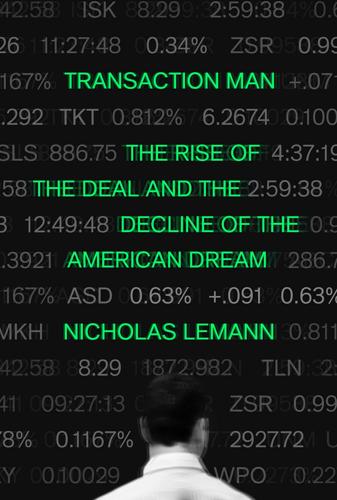
Transaction Man: The Rise of the Deal and the Decline of the American Dream
by
Nicholas Lemann
Published 9 Sep 2019
His operation at Morgan Stanley required a sales force, which Morgan Stanley hadn’t had, and more trading capacity and additional capital. “Fixed income” is a Wall Street term that covers instruments that pay investors at a set rate—for example, a ten-year government bond that can be redeemed at the end of that time for the amount it cost, plus interest. The name connotes cautious, buy-and-hold investors, but as time went on, what it came to mean was almost completely different. Stocks are bought and sold on public exchanges, so their price at every moment is a matter of record. But if you own a bond and decide to sell it before its maturity date, you have to find someone to buy it. The price isn’t public; it’s set through a rapid private negotiation—as in, Do you want it at fifty-three dollars, or not?
…
That Milken—a guy in his thirties from a middle-class background, working out of Beverly Hills, California, for a formerly third-bracket investment firm—could be so important was a sign of how much and how quickly the financial world had changed. Milken saw that the bond markets were no longer the province of buy-and-hold trust officers and insurance companies; he created a market for high-risk, high-yield “junk bonds” that in the old days nobody would have wanted. Selling junk bonds to the new breed of fixed-income traders on Wall Street generated much of the capital that fueled the mergers and acquisitions business in the 1980s, and of course the nature of the financing meant that successful acquirers of companies were heavily in debt.

How I Invest My Money: Finance Experts Reveal How They Save, Spend, and Invest
by
Brian Portnoy
and
Joshua Brown
Published 17 Nov 2020
I’m a good contrarian buyer, a mediocre short-term trader, a reluctant seller, and a serene owner through choppy markets. I also love investing in outstanding people pursuing value-added strategies. Put that together and I found my comfort zone with investments in funds and stocks that I intend to buy and hold, hopefully for as long as my father has owned IBM. I mostly own global equities in a mix of active and passive funds. I hold index or factor ETFs in absence of something better to do, but I much prefer active management. This bias comes from my positive experience with select active managers throughout my career.

Your Money: The Missing Manual
by
J.D. Roth
Published 18 Mar 2010
So while index funds are usually in the middle of the pack in any given one-year period, they shine over the long term. During the recent stock market tumble, some folks shouted, "Look! Buy-and-hold investing is dead!" They took the stock market's decline as evidence that passive investing with index funds doesn't work. Well, it doesn't work if you sell after a fall, but if you hold onto your investments, you're fine—you haven't lost anything but time. In fact, many savvy investors viewed the market crash as a chance to buy—and hold onto—even more shares of their index funds. Investing is a game of years and decades, not months. What your investments did this year is far less important than what they'll do over the next decade (or two, or three).
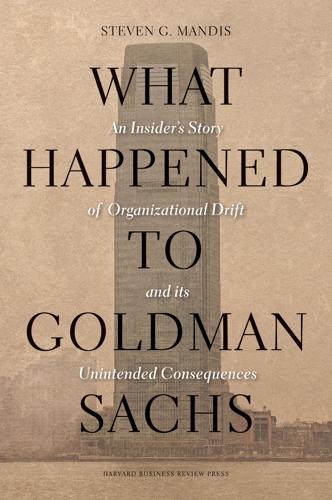
What Happened to Goldman Sachs: An Insider's Story of Organizational Drift and Its Unintended Consequences
by
Steven G. Mandis
Published 9 Sep 2013
We must have contacted fewer than a dozen private equity firms, because there were not many of them around. Nor were there many large hedge funds. Later in the 1990s, however, private equity firms and hedge funds began to boom. Generally, these firms were much more transactional and generated large fees in the short term compared with Goldman’s traditional corporate clients or “buy and hold” mutual funds. People at hedge funds tended to be more transaction oriented than relationship oriented. Similarly, private equity firms tend to be transactional; buying and selling companies and taking them public are shorter-term transactions than traditional corporate client business. Goldman executives decided to focus on this growing industry and even started a group in the mid- to late 1990s to cater to this client base.
…
Many of the private equity firms felt they already had people (many of them former bankers) who were smarter and more skilled than those in the banks in the kinds of deals the firms were doing. In an interview, one private equity client described most investment bankers who maintained a relationship with his firm as “order takers.” Hedge funds also changed the landscape. Unlike many traditional mutual funds, which had a “buy and hold” mentality, many hedge funds went in and out of securities with high frequency. They typically borrowed money from investment banks to buy securities, and they shorted securities. All of these activities generate significant fees, and so Goldman organized groups to focus on these growing clients and their special needs.

The Missing Billionaires: A Guide to Better Financial Decisions
by
Victor Haghani
and
James White
Published 27 Aug 2023
A landmark study of individual brokerage accounts by University of California Professors Brad Barber and Terrance Odean, aptly titled, “Trading Can Be Hazardous to Your Wealth,” found that individuals who actively traded their portfolios underperformed market returns by 6% per annum. Other researchers have found that the aggregate returns that investors in mutual funds experience are typically several percentage points per year below the returns that a buy and hold investor in those same funds would have earned.1 In an attempt to better understand how people deal with the sizing of attractive investment opportunities, Victor and his co‐researcher Richard Dewey conducted an experiment in 2013 that was later published in the Journal of Portfolio Management.
…
Market expected returns naturally change over time as the supply and demand for capital changes, even in highly efficient markets, nor is it necessarily inefficient for long‐term returns to be somewhat predictable. Connecting the Dots We agree with investor advocates such as Vanguard founder Jack Bogle and Burton Malkiel that it's better to be a buy‐and‐hold investor maintaining a fixed exposure to the market than to follow a misguided approach to dynamic asset allocation. Many financial advisers—human and robo—follow this line, recommending that investors choose a level of equity exposure they are comfortable with and stick to it for the long term.

Unknown Market Wizards: The Best Traders You've Never Heard Of
by
Jack D. Schwager
Published 2 Nov 2020
How did you find a job in that type of environment? I was able to get a three-month contracting job doing spreadsheet work. The three months ended up being extended to four years—at which point, I quit to devote full time to trading. What strategy did you use when you started trading managed accounts? Initially, I started by combining buy-and-hold investing with macro trading. I never had much success with the macro trading part. I didn’t like it because you are trading huge markets, and there is always going to be someone out there who knows more than you do. My first significant success was shorting pump-and-dump stocks on the OTC. These were stocks that would go from 50 cents to $5 or $10 on virtually nothing and then collapse in a day.
…
Also, the frauds were so brazen that the SEC eventually became more active in halting trading in these stocks. Given that you only had a handful of these trades per year for two years or less, it sounds like the pump-and-dump shorting strategy was only a minor part of your portfolio. What was the basis of the bulk of your trades? My real niche outside of my core buy-and-hold investing has been trading biotech stocks, which probably accounted for about 60% of my profits over time. What was the strategy that you were using? Biotech stocks are excellent trading vehicles. They have critical catalysts, such as clinical results for phase 2 and phase 3 trials, which are make-or-break events for small biotechs.

Makers and Takers: The Rise of Finance and the Fall of American Business
by
Rana Foroohar
Published 16 May 2016
“The fact that these funds have done so well over the last few years is creating a chicken-and-egg cycle—more institutional money flows in, activists take more actions, and returns go up,” says Donna Dabney, former executive director of the Conference Board Governance Center. Yet the gains of activists, born of short-term tricks like buybacks and mergers, can be illusory. Very often such stock-boosting strategies aren’t so much growing the firms at the grassroots level as they make them seem more attractive to the market. Moreover, plenty of buy-and-hold investors, like Warren Buffett, would say that several years of good returns is nothing, and that companies should be managed not for short-term profits but for shareholders who truly stick around for the long haul (indeed, Buffett has told Tim Cook to ignore activist demands for a bigger buyback).
…
If the people who run these firms can be convinced to focus on long-term growth over short-term gain, we could see a huge benevolent ripple effect throughout our entire economy: finance itself as an industry would shrink, but more of the wealth of corporate America would flow back to investors, and our economy would grow more strongly. “Money management, by definition, extracts value from the returns earned by our business enterprises,” says Bogle.47 Indeed, most mutual fund managers are essentially takers, not makers. But if more of them use their power to buy and hold shares of firms that practice good corporate governance and follow business strategies that support the real economy, then finance could potentially become not an impediment to growth but in fact a true supporter of it. It’s a bold goal, but one that authentic wealth makers like Bogle believe is attainable.

Commodity Trading Advisors: Risk, Performance Analysis, and Selection
by
Greg N. Gregoriou
,
Vassilios Karavas
,
François-Serge Lhabitant
and
Fabrice Douglas Rouah
Published 23 Sep 2004
However, more recently, Merrill and Thorley (1996) reignited the debate by noting that “the differences between practitioners and theo- 1Samuelson (1971, 1972, 1979) addressed a similar fallacy involving the virtues of investing to maximize the geometric mean return as the “dominating” strategy for investors with long horizons. 390 PROGRAM EVALUATION, SELECTION, AND RETURNS rists . . . are often rooted in semantic issues about risk” (p. 15). In addition, the two camps do not really focus on the same problem. Time diversification advocates are concerned with the impact of increasing the time horizon for a buy and hold strategy, while their opponents are looking at a dynamic investment problem in which a given time horizon is chopped up into several periods. Hence, their divergent opinions are not really surprising. In our view, CTAs provide a more interesting testing field for the theory of time diversification than equities.
…
Journal of Finance, Vol. 54, No. 3, pp. 833–874. Adler, N., L. Friedman, and Z. S. Stern. (2002) “Review of Ranking Methods in the Data Envelopment Analysis Context.” European Journal of Operational Research, Vol. 140, No. 2, pp. 249–265. Agarwal, V., and N. Y. Naik. (March 2002). “Characterizing Systematic Risk of Hedge Funds with Buy-and-Hold and Option-Based Strategies.” Working Paper, London Business School, U.K. Agarwal, V., and N. Y. Naik. (2004) “Risks and Portoflio Decisions Involving Hedge Funds.” Review of Financial Studies, Vol. 17, No. 1, pp. 63–98. Ali, A. I., and L. M. Seiford. (1990) “Tnslation Invariance in Data Envelopment Analysis,” Operations Research Letters, Vol. 9, No. 6, pp. 403–405.

The Divide: American Injustice in the Age of the Wealth Gap
by
Matt Taibbi
Published 8 Apr 2014
His South Asian education had left him with a chemical engineering degree, but in Ontario in the early 1970s, he made ends meet by selling air conditioners and furnaces, even selling greeting cards door to door. Then, when he graduated from business school in 1974, a professor helped Watsa get a job with Confederation Life, an insurance company in Toronto. Over the course of the next ten years, managing funds in the insurance business, Watsa learned about investing and became obsessed with the buy-and-hold long-term investment strategies that would eventually come to be associated with the likes of John Templeton and Warren Buffett. But it was exposure to popular economics writer Ben Graham’s book Security Analysis that Watsa calls his “road to Damascus” moment—he was so enthralled with Graham’s ideas that he eventually named his first son Ben.
…
The CEO was actually rattled momentarily when I confessed I’d never read Ben Graham, and as if concerned for my welfare, he urged me to read his books as soon as possible. Graham’s ideas stress the simple practice of finding the right price for a company, waiting for that price to fall a little to the point of being undervalued, and then buying and holding that stock with the attitude that you are now part owner of a business, one in whose success you should be invested for the long haul. By 1985, Watsa was a proponent of these stock-picking methods and was sure he could do something with them on a grand scale. But he still had almost no money of his own.
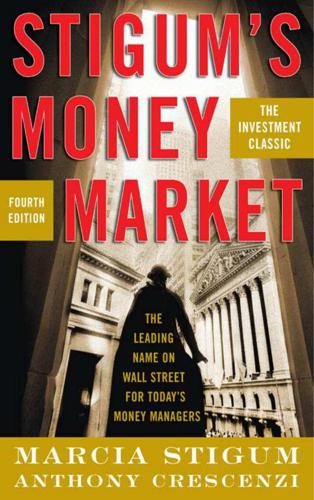
Stigum's Money Market, 4E
by
Marcia Stigum
and
Anthony Crescenzi
Published 9 Feb 2007
REPOS AND REVERSES A variety of bank and nonbank dealers act as market makers in governments, mortgage securities, agencies, CDs, and bankers’ acceptances (BAs). Because dealers, by definition, buy and sell for their own accounts, active dealers inevitably end up holding some securities. They will, moreover, buy and hold substantial positions if they believe that interest rates are likely to fall and that the value of these securities is therefore likely to rise. Speculation and risk taking are an inherent and important part of being a dealer. While dealers have large amounts of capital, the positions they take are often a large multiple of that amount.
…
Relative value, in addition to depending on all the factors we enumerate, may also depend partly on the temperament of the portfolio manager—whether he has the psychology of a trader, as some do, or whether he is more inclined to make a reasoned bet and let it stand for some time. As one investor noted, it makes a difference, “The 3-month bill will, except in very tight markets, trade at yield levels close to the corresponding long issue, which is the 6-month bill. So if you are looking for the most return for your dollar on a buy-and-hold strategy, you buy the 3-month bill and ride it for three months. If, however, you want to trade the portfolio—to buy something with the idea that its price will rise—you are better off staying in the active issue, which would be the 6-month bill.” Credit Risk Most companies, when they have money and are trying to increase yield, will start reaching out on the credit spectrum—buying A-2 or P-2 paper.2 A few do so in an intelligent and reasoned way, devoting considerable resources to searching out companies that are candidates for an upgrading of their credit rating to A-1 or P-1 and whose paper thus offers more relative value than that of A-1 and P-1 issuers.
…
It shows that the foreign investors are the biggest holders of Treasuries, followed by the Federal Reserve. The next largest holders are state and local governments, followed by the household sector. What is interesting about the breakdown is that the largest holders collectively have a tendency to buy and hold their Treasury securities. This is one of the reasons why Treasury yields have been low in recent years—with so many natural buyers, there haven’t been too many willing sellers. BOOK-ENTRY SECURITIES In 1976, the Treasury announced that it would move over time to a system under which virtually the entire marketable federal debt would be represented by book-entry securities instead of engraved pieces of paper.

Beat the Market
by
Edward Thorp
Published 15 Oct 1967
The study shows that the larger the potential dilution, the lower the warrant price, other things being equal. Also, the higher the dividend rate on the common stock, the lower the warrant price tends to be. Dividends make the common more attractive compared to the warrant. Some who hope for a rise in the common, and who would normally buy warrants, may instead buy and hold the common because they receive dividends while they wait. A stock which pays high dividends is believed to have less chance for future price appreciation, or growth, than a stock paying lower dividends. This makes the warrant less valuable, and is a second possible explanation of why higher dividends increase tends to lower the normal price curve, increasing the profit in a hedged position.
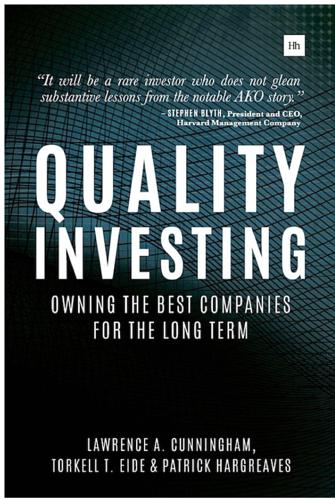
Quality Investing: Owning the Best Companies for the Long Term
by
Torkell T. Eide
,
Lawrence A. Cunningham
and
Patrick Hargreaves
Published 5 Jan 2016
We discuss each challenge in turn. Long-term compounding versus short-term pressures One of the greatest challenges of the quality investing philosophy is the need to adopt and sustain a long-term outlook – one measured in years, not quarters or days. In our experience, the best investment results tend to follow from buying and holding quality businesses for the long term. Yet it is difficult to embrace such an outlook in a business and investment culture that is riveted on short-term outcomes. When participants measure results by the quarter or year, it is unsurprising that managers and investors concentrate on short-term outcomes.
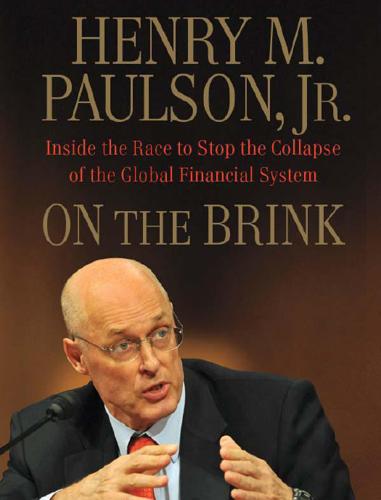
On the Brink: Inside the Race to Stop the Collapse of the Global Financial System
by
Henry M. Paulson
Published 15 Sep 2010
These ties led investors all over the world to believe that securities issued by Fannie and Freddie were backed by the full faith and credit of the U.S. That was not true, and the Clinton and Bush administrations had both said as much, but many investors chose to believe otherwise. In this murkiness, Fannie and Freddie had prospered. They made money two ways: by charging fees for the guarantees they wrote, and by buying and holding large portfolios of mortgage securities and pocketing the difference—or, in bankers’ talk, the “spread”—between the interest they collected on those securities and their cost of funds. The implicit government backing they enjoyed meant that they paid incredibly low rates on their debt—just above the Treasury’s own.
…
I knew that CIC had lost heavily on its existing Morgan Stanley holding, and that had been a source of great controversy inside China. I told him that the U.S. government viewed Morgan Stanley as systemically important. But his unenthusiastic tone convinced me to drop the matter—China was already providing tremendous support to the U.S. by buying and holding Treasuries and GSE securities. If a deal for Morgan Stanley had been possible, Wang would have signaled it. Later I called Steve Hadley at the White House and let him know that I didn’t believe China was going to invest in Morgan Stanley, and that the president’s call to Hu would be unnecessary.

The Gone Fishin' Portfolio: Get Wise, Get Wealthy...and Get on With Your Life
by
Alexander Green
Published 15 Sep 2008
Lipper, a global leader in fund information and analytical tools, recently published a study, Taxes in the Mutual Fund Industry—2007: Assessing the Impact of Taxes on Shareholder Returns. It found that taxable mutual fund investors surrendered at least $23.8 billion to Uncle Sam in 2006, just for buying and holding their funds! Taxes gobbled up 15% of the gross return of the average U.S. diversified equity fund. And the tax hit was even worse for the average U.S. taxable bond fund. Here, 38% of the gross return was lost to taxes, nearly double the cost of operating expenses and loads combined. If anything, this study may have actually understated the tax costs.
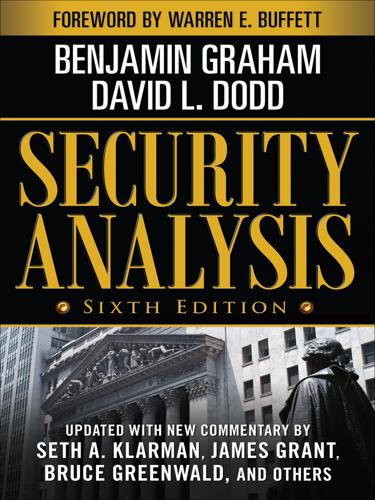
Security Analysis
by
Benjamin Graham
and
David Dodd
Published 1 Jan 1962
The most intrepid investors in relative value manage hedge funds where they purchase the relatively less expensive securities and sell short the relatively more expensive ones. This enables them potentially to profit on both sides of the ledger, long and short. Of course, it also exposes them to double-barreled losses if they are wrong.13 It is harder to think about absolute value than relative value. When is a stock cheap enough to buy and hold without a short sale as a hedge? One standard is to buy when a security trades at an appreciable—say, 30%, 40%, or greater—discount from its underlying value, calculated either as its liquidation value, going-concern value, or private-market value (the value a knowledgeable third party would reasonably pay for the business).
…
(p. 178) On interest coverage: “The present-day investor is accustomed to regard the ratio of earnings to interest charges as the most important specific test of safety.” (p. 128 on accompanying CD) On capital structure: “The biggest company may be the weakest if its bonded debt is disproportionately large.” (p. 179) 5. “Buy-and-hold” investing is inconsistent with the responsibilities of the professional investor, and the creditworthiness of every issuer represented in the portfolio must be revisited no less than quarterly. Even before the market collapse of 1929, the danger ensuing from neglect of investments previously made, and the need for periodic scrutiny or supervision of all holdings, had been recognized as a new canon in Wall Street.
…
A., Jr., 199n, 576, 577 Bethlehem Steel Company, 305–306, 461, 462, 481n, 579, 682–683, 691–692 Better Business Bureau of New York City, 259n Beuhler, Alfred G., 392n Bloomberg, 718 Bloomberg, Lawrence N., 558n Bloomingdale’s, 43 “Blue-sky flotation,” 259n Boeing Airplane Company, 678 Bolivia, 175 Bon Ami, 93n Bond(s), 123–140 amortization of discount on, 433–434 avoidance of loss and, 143 buying on depression basis, 154–164, 266 collapses of, causes of, 157–161 collateral-trust, 182–183 common sense and, 135–137 conflicting views on financing by, 161–162 convertible (see Convertible issues) durability of Security Analysis and, 137–140 early maturing, danger of, 596–597 equipment obligations, 180–182 evolution of investment standards and, 125–126 exclusion by New York statute, 171–172 Federal Land Bank, 213–214 as fixed-value investment, 141–143 of foreign corporations, 176 foreign-government, 173–175 high-grade (see High-grade bonds) income, 202–208 investing vs. speculating and, 102 investment absolutes and, 126 investment standards for, 169–179, 180–189 investment vs. speculation and, 126–128 investment-trust, protective provisions for, 247–252 legal rights of bondholders and, 230–231 low-priced, limitation of profit on, 323–324 mortgage, 215–218 Oaktree Capital Management investment methodology for, 130–135 pragmatic approach for, 128–130 protective covenants and (see Protective covenants) railroads, unsound financial policies followed by, 162 real estate, 183–189 as safe investment, rejection of rule by Graham and Dodd, 43 sound, unavailability of, 161 speculative, 28, 324–325 subordination to bank debt in reorganization, 243 of subsidiary companies, 226–227 “underlying,” 152–153 undervalued, market exaggerations due to, 683–685 working-capital requirements and, 245–246 zero-coupon, 284 Bond and Mortgage Guarantee Company, 216 Bond prices, interest rates and, 25–27 Book value, 548–558 of common stocks, treatment of preferred stocks and, 550–551 computation of, 548–550 current-asset value and cash-asset value and, 553–554 exaggeration by pyramiding, 649–650 practical significance of, 555–558 of preferred stocks, 551–553 Borg Warner, 456 Borman, Frank, 265 Bosland, Chelcie C., 4, 17, 362n Botany Worsted Mills, 430 Bowker Building, 185n Bradlees, 276–278 Braunthal, Alfred, 467n Brazil, 175 “A Break in the Action” (Castro), 271n Breeden, Richard, 279–280 British Companies Act of 1929, 386n–387n Brooklyn Heights Railroad Company, 209 Brooklyn Rapid Transit Company, 209, 492 Brooklyn Union Elevated Railroad, 78–79, 146–147, 209, 685, 693 Brooklyn Union Gas Company, 321, 322 Brooklyn-Manhattan Transit Corporation, 79, 595, 693 Brown Brothers Harriman & Co., 7 Budd Manufacturing Company, 246n Buffalo Sabres, 274 Buffett, Warren, 40, 53, 54, 58, 137–138, 273, 287, 345, 396, 622, 629, 713–714, 715, 720 Bulgaria, 175 Bunte Brothers, 674 Burchill Act, 233n Burlington, 212 Burtchett, E. F., 193n Bush, George H. W., 286 Bush Terminal Building Company, 421 “Business man’s investment,” 167 Butler Bros., 675 Butte and Superior Copper Company, 677, 679 Butte and Superior Mining Company, 491 “Buy-and-hold” investing, 133 Buyer as element in security analysis, 76 C Cable Television Hall of Fame, 274 Calumet and Hecla Consolidated Copper Company, 487–488 Campeau, Robert, 43 Canada, 174, 175, 233n Canadian Pacific Railway, 158n, 210n, 211, 226 Capellas, Michael, 279 Capital Administration Company, 550 Capital Consumption and Adjustment (Fabricant), 454n Capital Income Debentures, 115n Capital structure, 406–407, 507–519 arbitrary variations in, alteration of value of enterprise by, 508 limitation on comparison in same field, 658, 659 optimum, principle of, 508–510 shortage of sound industrial bonds and, 510 speculative (see Speculative capital structure) top-heavy, earnings appraisal and, 511–512 total market value of securities and, 334–335 Capitalization, allowance for changes in, 503–505 Cash flows, 56 Cash-asset value, 553–554 Cassel, Gustave, 3 Castro, Janice, 271n Caterpillar Tractor, 90n Cates, Staley, 267n Celanese Corporation of America, 92n, 94, 309 Celluloid Corporation, 309 Central Branch Union Pacific Railway, 153 Central Leather, 606 Central Railroad of New Jersey, 451 Central States Electric Corporation, 306, 307, 313–314, 318, 647, 693n Century Communications, 274–275 Century Ribbon Mills, Inc., 327, 328 Cerberus Capital Management, 280 Cerro de Paso Copper Corp., 465 Chamberlain, Lawrence, 102n Chance, value of analysis and, 72–73 Chandler (Federal Bankruptcy) Act of 1938, 208n, 230n, 231–232, 234 Chandler Railroad Readjustment Act of 1939, 238n Chapter 11 of the Bankruptcy Code, 271 Chesapeake and Ohio Railway Company, 158n, 293, 448, 461, 645, 646, 693n Chesapeake Corporation, 313, 509n, 645, 646, 693n Chevron, 271 Chicago, Burlington and Quincy Railroad Company, 158n, 445, 447 Chicago, Milwaukee, St.

Dead Aid: Why Aid Is Not Working and How There Is a Better Way for Africa
by
Dambisa Moyo
Published 17 Mar 2009
This has broadened a previously narrow base to encompass an almost insatiable demand from mutual funds, pension schemes, hedge funds, insurance companies and private asset managers around the world. Moreover, as economies have stabilized, and operate under better management, investors themselves have evolved from more short-term speculators (jumping in and out to garner short-term gains) into longer-term players happy to buy and hold developing-country assets for longer periods, and even up to maturity. While it is true that the Asian crisis of 1997, the Russian debacle in 1998 and the Argentinian default of 2001 all led to a sudden outflow of capital from the emerging markets, these proved to be hiccups in what has been a strong and growing trend of emerging-market interest.

Soulful Simplicity: How Living With Less Can Lead to So Much More
by
Courtney Carver
Published 26 Dec 2017
The process of letting go will be much easier when you take the time to understand why you own what you own and how it got there in the first place. When I finally slowed down and noticed what was happening instead of racing for some imaginary, organized finished line, real change took hold of my heart. We buy and hold on to things for many reasons, but usually it’s because we want to be someone we are not, feel something we don’t, or prove we are something we don’t think we are to someone else. I’m not opposed to owning things, but looking back, I see that everything I owned, owned me right back. See if you recognize why you own things in any of the following myths.

Meet the Frugalwoods: Achieving Financial Independence Through Simple Living
by
Elizabeth Willard Thames
Published 6 Mar 2018
And yes, the market does go up and down because that’s the very nature of the stock market. But the thing to remember is that history demonstrates that the market always eventually goes up. Even after the Great Recession, the market rebuilt itself. Not immediately, but over time. Successful investing entails the following: buying and holding diversified, low-fee stocks for decades, avoiding the temptation to time the market, not pulling money in and out of the market, and not following the market on a daily basis. Invest and hold (for years upon years) and, more likely than not, your money will make more money. This is an oversimplification of investing, and there are other variables such a rebalancing and asset allocation, as well as decreasing your exposure to risk as you near traditional retirement age, but this is the basic gist.

Retire Before Mom and Dad
by
Rob Berger
Published 10 Aug 2019
Thus, investors are better off when companies repurchase their own shares at rock bottom prices, as in 2008 and 2009. In other words, low stock prices benefit long-term investors. Now, I don’t pretend that the above will make the next market crash a walk in the park. It won’t. But you should take comfort that for long-term buy and hold investors, market crashes make us richer if, and only if, we stick to our investment plan. The Right Asset Allocation As you know, Asset Allocation refers to the mix of stock and bond funds in our portfolio. The most important decision you’ll make when it comes to Asset Allocation is how much money to invest in bond funds and how much in stock funds.
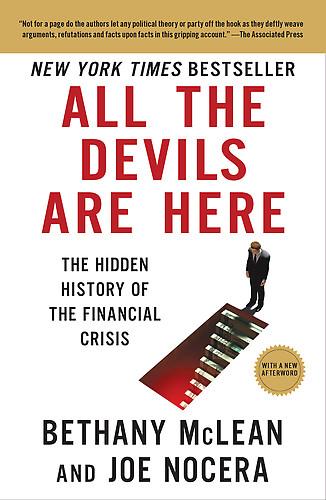
All the Devils Are Here
by
Bethany McLean
Published 19 Oct 2010
So said a big time Kidder Peabody trader named Mike Vranos back in 1994, according to colleagues who talked about him to the Wall Street Journal on May 20, 1994 “This list [of potential buyers] may be a little skewed toward sophisticated hedge funds with which we should not expect to make too much money since (a) most of the time they will be on the same side of the trade as we will, and (b) they know exactly how things work... vs. buy-and-hold ratings buyers who we should be focused on a lot more to make incremental $$$ next year....” So wrote a young Goldman Sachs salesman named Fabrice Tourre in an internal e-mail on December 28, 2006 On one level, the creation of synthetic CDOs was the apotheosis of the previous twenty-five years of modern finance.
…
On another level, synthetic CDOs were a classic example of how things never really changed on Wall Street. The sellers of synthetic CDOs had a huge informational advantage over the buyers, just as bond sellers have historically had an advantage over bond buyers. Buying a synthetic CDO was like playing poker with an opponent who knew every card in your hand. Conflicts abounded. Those “buy-and-hold ratings-based investors,” as Tourre described them—or the “dumb guys,” to use Mike Vranos’s less polite words—weren’t necessarily less intelligent; they were simply less plugged in, and either unwilling or unable to do the analysis necessary to compensate for that. Stretching to get the extra yield that synthetic CDOs seemed to offer, lacking a clear understanding of what they were buying, they were the perfect willing dupes.
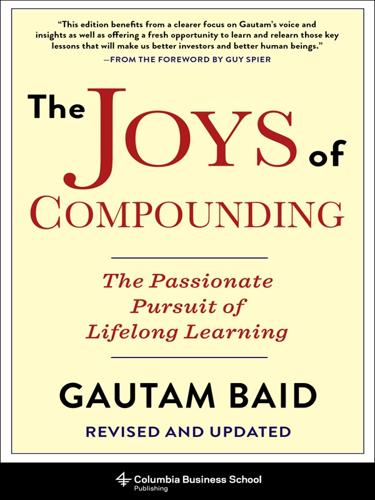
The Joys of Compounding: The Passionate Pursuit of Lifelong Learning, Revised and Updated
by
Gautam Baid
Published 1 Jun 2020
Max Gunther, The Zurich Axioms: The Rules of Risk and Reward Used by Generations of Swiss Bankers (London: Harriman House, 2005). 6. Warren Buffett, Berkshire Hathaway 2000 Annual Letter to Shareholders, February 28, 2001, http://www.berkshirehathaway.com/2000ar/20001etter.html. 7. WBI Investments, “Investors Are Told to Buy and Hold, but Do They?” WBI Insights, June 4, 2019, https://wbiinsights.com/2019/06/04/investors-are-told-to-buy-and-hold-but-do-they/. 8. Goodreads.com, accessed December 10, 2019, https://www.goodreads.com/quotes/29255-be-fearful-when-others-are-greedy-and-greedy-when-others. 9. Robert Rubin, “Harvard Commencement Address,” 2001. 31. The Education of a Value Investor 1.

Inequality and the 1%
by
Danny Dorling
Published 6 Oct 2014
A further 950,000 occupied homes in Scotland contain only one adult.61 At the other extreme, in Kensington and Chelsea, the residential population fell between 2001 and 2011 as an increasing share of the most expensive property was held empty. There is a huge problem with housing in the UK because people buy and hold on to housing as an investment. In doing this, they are copying (in very small measure) the property portfolios of the 1 per cent. Most people try as hard as they can to get a mortgage and to buy, because they think that doing so will make them safer in the long term. Renting, including even long-term-tenancy social housing, is now universally regarded as insecure.
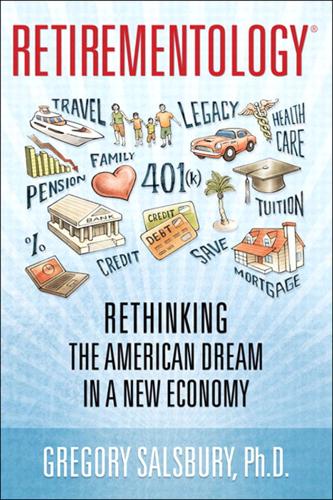
Retirementology: Rethinking the American Dream in a New Economy
by
Gregory Brandon Salsbury
Published 15 Mar 2010
Although there is much skill, reason, and understanding involved in making a good investment, these findings reflect how number numbness keeps investors from understanding the odds and role of chance in their investing. There’s nothing any single investor can do about the facts presented here, and it’s not dumb luck that has produced these kinds of returns over time. But the numbers can be intimidating, and a short-term loss can scare an investor away. Such findings as these make a pretty good case for the buy-and-hold strategy of investing, but the stock market is only one part of a retirement planning strategy you could consider. There are any number of other ways you can accumulate a nest egg—all those ways simply have to fall within your risk tolerance and comfort zone. Such a stance can keep you from succumbing to a mind trick called hindsight bias.
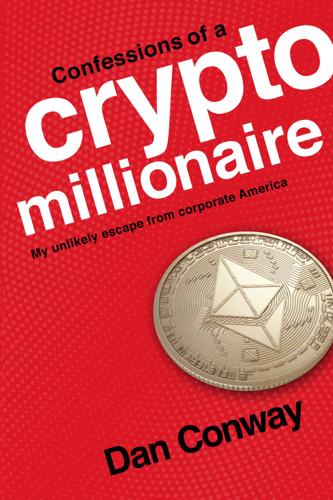
Confessions of a Crypto Millionaire: My Unlikely Escape From Corporate America
by
Dan Conway
Published 8 Sep 2019
. *** As we prepared to reenter the real world with its ubiquitous Internet connections, I thought of our exit points and asked myself if I should have sold earlier. The timing of when to buy and sell crypto is an excruciating decision. My trouble illustrates the obvious difficulties of selling at the right time, but the buy and hold decision is just as daunting. Sometimes a person’s enthusiasm for a decentralized world isn’t wed to a conviction to invest (or gamble, depending on your perspective). Thanks to my experience with technologies that went viral, determination to get out of the rat race, addictive personality, ability to handle risk, plus the availability of funds at just the right time and a wife who let me spend them, I was destined to go big once I got the crypto bug.
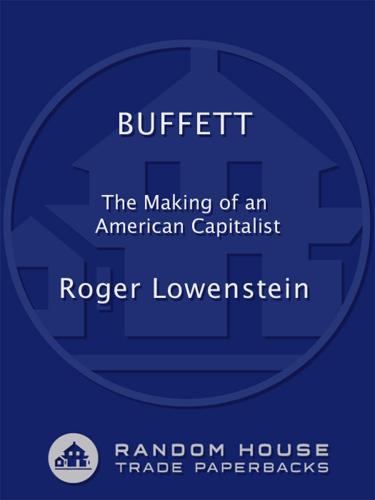
Buffett
by
Roger Lowenstein
Published 24 Jul 2013
And then he said, ‘I can no longer find good businesses at even acceptable prices, and I will take advantage of my size and teach the world a lesson about long-term investing.’ We think he screwed up. It’s stupid.” Buffett and Munger doubted that they could have done better trying to dance in and out.32 For one thing, a buy-and-hold investor put off the tax man—over time, a very big saving.‖ For another, their long-term approach created opportunities: a Mrs. B or Ralph Schey was more inclined to sell to an owner such as Buffett. And, knowing that divorce was not an option, Buffett was a bit—quite a bit—more circumspect in choosing a partner.
…
As he expressed it to Business Week, selling a familiar stock was “like dumping your wife when she gets old.”33 This was a strong comment from a guy who, in fact, had refused to dump his wife after she had moved out on him. Buffett revisited this metaphor in one of his letters: here, selling a good stock was like marrying for money—a mistake in most cases, “insanity if one is already rich.”34 Buy-and-hold did have a financial logic, but at Buffett’s extreme it can only be seen, as he put it, as a “quirk” of character, appealing for “a mixture of personal and financial considerations.”35 He liked to keep things—stocks, “pals,” anything that lent a sense of permanence. To turn around and sell because someone offered “2× or 3×” was “kind of crazy.”36 Any other investor, such as his young critic, would have deemed that Buffett was the crazy one.

Slouching Towards Utopia: An Economic History of the Twentieth Century
by
J. Bradford Delong
Published 6 Apr 2020
When there is a gap between the goods and services citizens want the government to pay for, on the one hand, and, on the other, the taxes that the largely rich are willing to pay, governments have to fill that gap—and printing interest-paying bonds and selling them for cash is the obvious way. Whether and how this works depends on the expectations of the individuals—mostly financiers—who buy and hold the bonds. How patient would they be? What kind of reward would they demand for holding and not selling the bonds? How trusting of the government would they be? And how long would their trust last? In the aftermath of World War I, financiers had limited patience and demanded healthy returns. When that is the psychology of financiers—as it was after World War I—the most likely outcome of resorting to large-scale debt finance is provided by the one-equation model that economists call the fiscal theory of the price level: Price Level = (Nominal Debt) × (Interest Rate) / (Real Debt Service Limit) Take France in 1919 as an example.
…
A host of anomalies in stock market values indicate that those who were paying for stocks in the summer and early fall of 1929 had not the slightest rational clue of what they were doing. Consider the closed-end investment fund. A closed-end investment fund is a pure holding company. Investors were supposed to pool their resources and limit their risk by buying stock in this holding company, this closed-end investment fund, which would then buy and hold for them the stock of one hundred or more individual operating companies. The theory was that the management of the fund would be better able to pick stocks and manage risk than individual investors. In practice, this meant that the only assets of a closed-end investment fund were its financial assets: the stocks and bonds that it held.
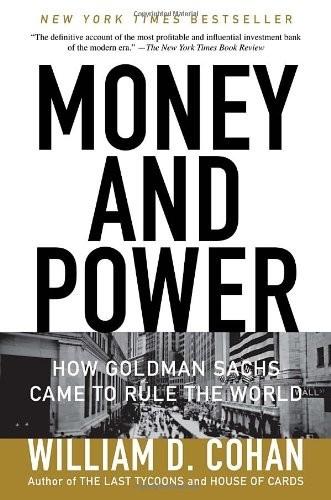
Money and Power: How Goldman Sachs Came to Rule the World
by
William D. Cohan
Published 11 Apr 2011
Levy and Goldman’s involvement with the Murchison brothers had its origins in the March 1933 bankruptcy filing of the Missouri Pacific Railroad. The Missouri Pacific bankruptcy went on for twenty-three years, making it one of the longest running on record. During that time, investors could buy and sell its debt or buy and hold it, with an eye toward getting control of the company when Missouri Pacific emerged from bankruptcy in the hands of its former creditors. Sometime after the war, the Murchison brothers became the principal owners of the general mortgage bonds of Missouri Pacific. They were recommended to Levy and Goldman Sachs since they “were seeking the assistance of a Wall Street arbitrageur …,” the Times reported, “and Mr.
…
It was just the fact that “[t]his list [of potential buyers] might be a little skewed towards sophisticated hedge funds with which we should not expect to make too much money since (a) most of the time they will be on the same side of the trade as we will, and (b) they know exactly how things work and will not let us work for too much $$$, vs. buy-and-hold rating-based buyers who we should be focused on a lot more to make incremental $$$ next year.” Another way for Goldman to protect itself was to buy credit-default swaps—insurance policies that paid off when the debt of other companies lost value—on the debt of individual companies as well as on individual mortgage-backed securities, such as GSAMP Trust 2006-S2.
…
“It would help to manage these guys if u would not answer these guys and keep bouncing them back to Tom [Montag] and I,” Mullen wrote to Winkelried and Cohn. Cohn responded, “Got that and am not answering” but then had to admit the trade had merit. “I do like the idea but you call,” he replied to Mullen. Montag then weighed in. “Just to be clear,” he wrote, “[t]his is buy and hold not buy and sell strategy,” suggesting that the firm’s capital would be committed for some time. Cohn got that. In the end, Sparks and Birnbaum got the green light to “opportunistically … buy assets” at the same time that the mortgage trading group was “significant[ly] covering [its] short positions,” according to a presentation given to the Goldman board of directors in September 2007.
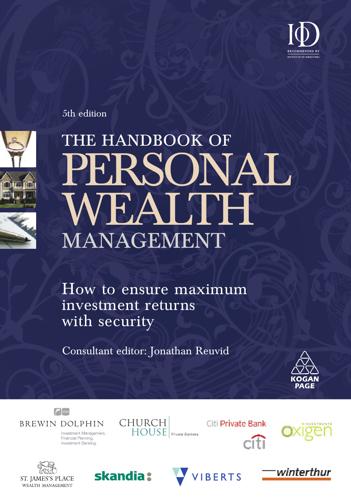
The Handbook of Personal Wealth Management
by
Reuvid, Jonathan.
Published 30 Oct 2011
Perhaps this may create significant opportunities for some multi-strategy operations going forward. 2008 hedge fund review Hedge funds are often thought to be absolute return vehicles; however, the underlying assets in which they trade are often the same equities, bonds and commodities found in many long-only manager portfolios. Of course, the structure of the trades are often far removed from the more traditional fundamental buy-and-hold techniques found in their long-only peers’ portfolios. Given this characteristic, perhaps hedge funds should be viewed as ‘better risk adjusted returns’ rather than absolute returns; of course their stated mandate implicitly remains the production of positive returns in all market conditions. The year 2008 will go down in history as being one of the most important in the evolution of the hedge fund industry.
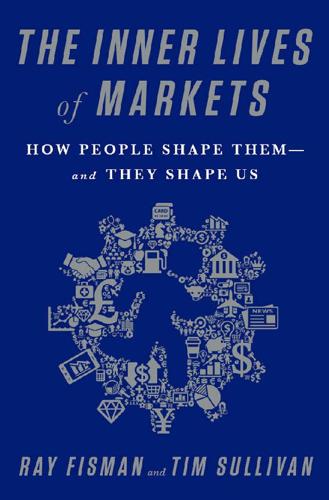
The Inner Lives of Markets: How People Shape Them—And They Shape Us
by
Tim Sullivan
Published 6 Jun 2016
Some inmates in Stalag VII-A, especially those who could trade with the German guards, valued coffee, which commanded a high price in the currency of cigarettes because it was much in demand. You give a grocery store money for peanut butter. Traders exchange promissory notes for pork bellies in a pit at a Chicago commodities market. You buy and hold stocks for your retirement fund and check their value (occasionally or obsessively) on the finance page. The prices that emerge in these marketplaces as a result of all this trading does a remarkable job of capturing the availability of all of these goods and services, relative to our wants and desires.
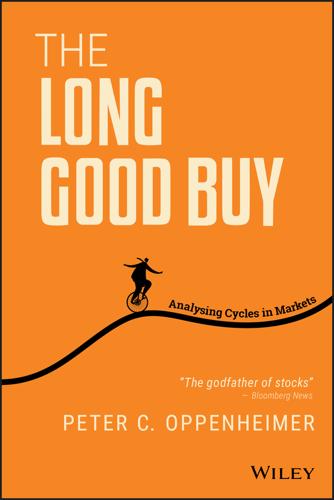
The Long Good Buy: Analysing Cycles in Markets
by
Peter Oppenheimer
Published 3 May 2020
Many of the companies that were favoured did enjoy very high returns (rather different from the tech bubble of the late 1990s, when the market was dominated by new companies with no returns) and a belief that these returns could be maintained into the long-term future. For that reason, they were often referred to as ‘one-decision’ stocks. Investors commonly were happy to buy and hold them irrespective of the price. There was a popular shift away from value investing towards growth investing. As a result, valuations increased hugely. By 1972, when the S&P 500 had a P/E of 19 times, the average across the Nifty Fifty was over twice this level. Polaroid traded at a P/E of over 90 times, and Walt Disney and McDonald's at over 80 times forward expected earnings.
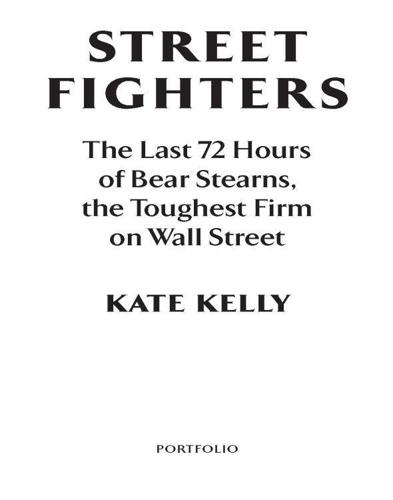
Street Fighters: The Last 72 Hours of Bear Stearns, the Toughest Firm on Wall Street
by
Kate Kelly
Published 14 Apr 2009
Lewis focused on distressed quasi-public investments like railroads and utilities, making a fortune when business began picking up. Then, in the 1950s, he pioneered the practice of making “block” trades, or buying and selling multiple shares of stock in a single transaction. He was a strong believer in the “buy and hold” strategy, refusing to sell even losing positions. As the years wore on, this created friction with a young protégé, Alan “Ace” Greenberg. The son of a clothier from Oklahoma City, Greenberg had been hired as a clerk at Bear in 1949 and had grown into his job as a successful stock trader. He embraced a simple ethos, handed down to him by his dad: never hang on to losing inventory, because as little as it’s worth today, it’ll be worth less tomorrow.

Trading in the Zone: Master the Market With Confidence, Discipline and a Winning Attitude
by
Mark J. Douglas
Published 1 Apr 2000
This experience leads to the oft-started statistic that 95 percent of futures traders lose all of their money within the first year of trading. Stock traders generally experience the same results, which is why pundits always point to the fact that most stock traders fail to outperform a simple buy and hold investment scenario. So, why do people, the majority of whom are extremely successful in other occupations, fail so miserably as traders? Are successful traders born and not made? Mark Douglas says no. What’s necessary, he says, is that the individual acquire the trader’s mindset. It sounds easy, but the fact is, this mindset is very foreign when compared with the way our life experiences teach us to think about the world.
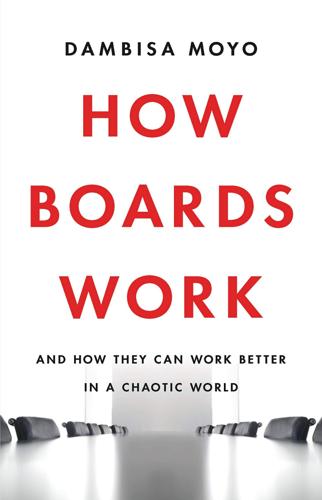
How Boards Work: And How They Can Work Better in a Chaotic World
by
Dambisa Moyo
Published 3 May 2021
Passive funds tend to track a stock market index such as the S&P 500 or FTSE 100. These indexes ascribe weights to different companies based on their market capitalization; as such, passive funds echo the risk and reward profiles of the index they track by holding a certain number of different companies’ shares. Passive funds are viewed as permanent capital, in that they buy and hold long-term stock investments in corporations. The amount of money invested in passive funds has been rising in recent years. According to Moody’s, the value of passive funds is on course to surpass active investments in US equities, and it will make up 25 percent of European equity investments by 2025.
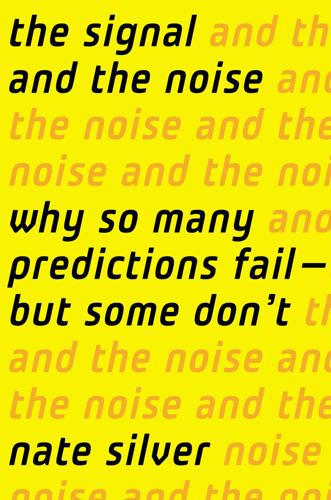
The Signal and the Noise: Why So Many Predictions Fail-But Some Don't
by
Nate Silver
Published 31 Aug 2012
How much money would this investor have at the end of the ten-year period? If you ignore dividends, inflation, and transaction costs, his $10,000 investment in 1976 would have been worth about $25,000 ten years later using the Manic Momentum strategy. By contrast, an investor who had adopted a simple buy-and-hold strategy during the same decade—buy $10,000 in stocks on January 2, 1976, and hold them for ten years, making no changes in the interim—would have only about $18,000 at the end of the period. Manic Momentum seems to have worked! Our investor, using a very basic strategy that exploited a simple statistical relationship in past market prices, substantially beat the market average, seeming to disprove the efficient-market hypothesis in the process.
…
Economists like Fama think this is a problem when applying standard statistical tests to analyze patterns in stock prices. 39. Index funds would not have been widely available in 1976; the analysis assumes that the investor’s returns would track that of the Dow Jones Industrial Average. 40. This is much worse than the market-average return. Although the 2000s were a poor decade for stocks, a buy-and-hold investor would have had about $9,000 rather than $4,000 left over by the end of the period. 41. Carlota Perez, “The Double Bubble at the Turn of the Century: Technological Roots and Structural Implications,” Cambridge Journal of Economics, 33 (2009), pp. 779–805. http://www.relooney.info/Cambridge-GFC_14.pdf. 42.
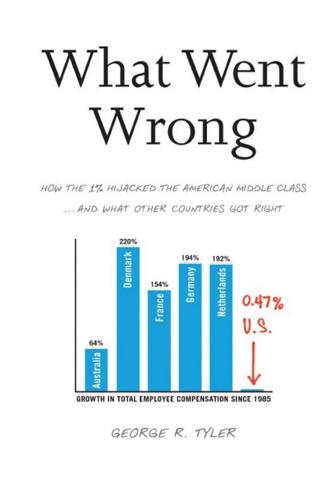
What Went Wrong: How the 1% Hijacked the American Middle Class . . . And What Other Countries Got Right
by
George R. Tyler
Published 15 Jul 2013
It works this way: managers are rewarded for spiking share values in the current reporting quarter, affording them the opportunity to cash out options. And nothing spikes earnings per share better than a merger that dramatically enhances revenues. But what happens to shareholders, particularly those who have adopted the Wall Street mantra of “buy and hold?” Economists Ulrike Malmendier, Enrico Moretti, and Florian Peters of the University of California, Berkeley, examined all contested US mergers between 1985 and 2009 where at least two suitors vied. Published in April 2012 by the National Bureau of Economic Research, their analysis examined market evaluations of the successful suitors (acquirors) and losing bidders before and after mergers.
…
The average holding period has declined from seven years in the 1950s to six months today.22 And Jesse Eisinger of the investigative journal ProPublica has written that in 2012, shares were being held an average of only four months.23 A major accelerant of investor short-termism is the shift in composition of exchange participants toward money managers anxious to show quarterly gains; impatient money managers now hold 70 percent of all shares of American corporations, compared to just 8 percent in the 1950s, outweighing traditional buy and hold investors. Thus, the vast majority of share traders have become a Greek chorus for quarterly capitalism and the short-termism of CEOs, with little interest and even less incentive to follow more detailed elements of corporate decision making. It’s as though America is competing in the Super Bowl (against Japanese and northern Europe competitors), with our guy Tom Brady limited to three-yard dump-off passes.
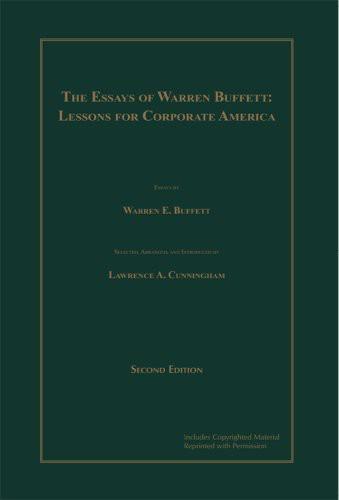
The Essays of Warren Buffett: Lessons for Corporate America
by
Warren E. Buffett
and
Lawrence A. Cunningham
Published 2 Jan 1997
Berkshire and its shareholders, in combination, would pay a much smaller tax if Berkshire operated a partnership or "s" corporation, two structures often used for business activities. For a variety of reasons, that's not feasible for Berkshire to do. However, the penalty our corporate form imposes is mitigated-though far from eliminated-by our strategy of investing for the long term. Charlie and I would follow a buy-and-hold policy even if we ran a tax-exempt institution. We think it the soundest way to invest, and it also goes down the grain of our personalities. A third reason to favor this policy, however, is the fact that taxes are due only when gains are realized. Through my favorite comic strip, Li'l Abner, I got a chance during my youth to see the benefits of delayed taxes, though I missed the lesson at the time.

The Dollar Meltdown: Surviving the Coming Currency Crisis With Gold, Oil, and Other Unconventional Investments
by
Charles Goyette
Published 29 Oct 2009
A period of new political enlightenment will demand a redeemable currency, oil will still make the world go around, a growing population will still need food and water, and interest rates cannot stay near zero in an environment in which money is not created out of thin air. In other words these are investments that you can buy and hold through the dollar meltdown. They will do well if we are dragged kicking and screaming to our senses by a breakdown, just as they will perform well if a light should dawn before it gets any darker. CHAPTER ELEVEN Investing in Gold Glittering Opportunity To be long gold is, in a grand thematic way, to be short the socialization of risk.
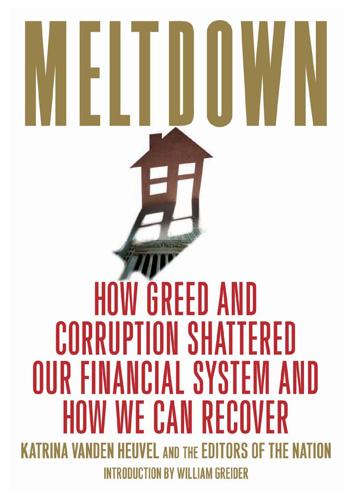
Meltdown: How Greed and Corruption Shattered Our Financial System and How We Can Recover
by
Katrina Vanden Heuvel
and
William Greider
Published 9 Jan 2009
The “tiger economies” of Asia had collapsed, market populists told us, because they had relied on the expertise of elites rather than the infinite wisdom of the people. Similarly, the economies of Western Europe were stagnant because the arrogant aristocrats every red-blooded American knows run those lands were clinging to old welfare-state theories. Meanwhile, the NASDAQ was soaring because the buy-and-hold common man had finally been allowed to participate. And when the House of Morgan was swallowed up by Chase Manhattan, we were told this was because it was a snooty outfit that had foolishly tried to resist the democracy of markets. More important, market populism proved astonishingly ver-satile as a defense of any industry in distress.
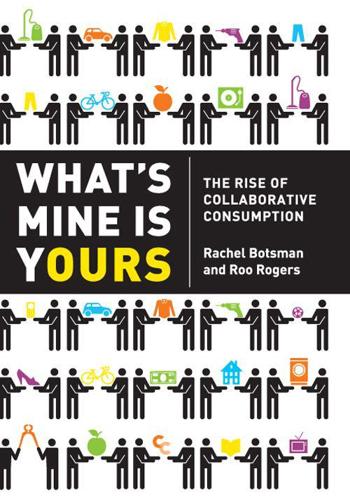
What's Mine Is Yours: How Collaborative Consumption Is Changing the Way We Live
by
Rachel Botsman
and
Roo Rogers
Published 2 Jan 2010
Advertising has us chasing cars and clothes, working jobs we hate so we can buy shit we don’t need.” The main theme of Fight Club runs counter to much of what consumer advertising preys on; we won’t find happiness or the meaning of our lives in the shopping mall or in the click of a mouse. Research has proved that people who can afford to buy and hold on to more material goods are not necessarily more satisfied with their lives. Indeed, the reverse is often true. Economist Richard Layard has researched the relationship between growth, hyper-consumerism, and happiness. His findings are illustrated by a graph on which one line represents per capita income and personal consumption since 1950 and shows a soaring increase (it has more than doubled) while the other line, marking Americans and Britons who describe themselves as “very happy” in an annual Gallup survey, remains flat.41 In fact, the number of people describing themselves as “very happy” peaked in 1957 just as the conspicuous cycle of “work and spend,” and a revolution of rising materialistic expectations, began.

The Greed Merchants: How the Investment Banks Exploited the System
by
Philip Augar
Published 20 Apr 2005
These people were just bought; they couldn’t resist temptation. Anyone who said no was simply replaced; in 2000 one analyst at the firm made $12 million, several were at $10 million and several more were at $8 million.’ Long Term Performance Investors would have been better off buying an index tracker fund than adopting a buy and hold strategy for IPOs. Between 1980 and 2001, based on the first day closing price, the total return of US IPOs was 23 per cent less than the value-weighted market index and 5 per cent less than a sample of similar sized and styled stocks. In other words, apart from the first day opening premium of 19 per cent, the IPOs underperformed.
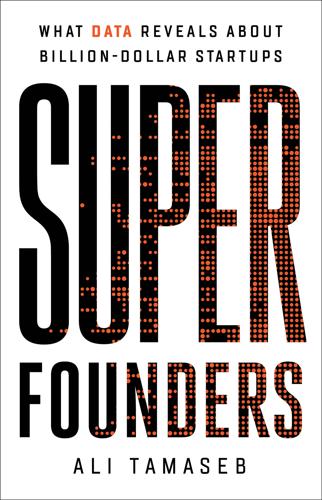
Super Founders: What Data Reveals About Billion-Dollar Startups
by
Ali Tamaseb
Published 14 Sep 2021
It’s in the best interest of both the investors and the founders to achieve the highest outcome with the least amount of investment, hence avoiding dilution. But while it’s easy to spot a startup with low capital expenditure, a startup that’s capital efficient isn’t always obvious from day one. A business like Stitch Fix—which involves buying and holding inventory, storage, shipping, and a lot of physical labor, from stylists to warehouse workers—would be considered capital intensive and inefficient at first sight. Lake managed to become more efficient by renegotiating contracts with vendors and hiring data scientists to augment stylists to scale the business.

Built on a Lie: The Rise and Fall of Neil Woodford and the Fate of Middle England’s Money
by
Owen Walker
Published 4 Mar 2021
Though the practice was not illegal, Spitzer argued Invesco had not treated all its customers equally, which forced fund managers to hold higher levels of cash to meet sudden redemption requests and sell at inconvenient times. The result was that retail investors had suffered millions of dollars of losses. ‘Top managers knew market timing was harming buy-and-hold investors, but they condoned and facilitated it because it was a lucrative source of management fee revenues,’ Spitzer claimed when announcing the charges. Amvescap’s share price tumbled on the news. Initially Amvescap’s executives hit back against the charges, claiming they were unmerited and saying market timing was not illegal.

Jared Bibler
by
Iceland's Secret The Untold Story of the World's Biggest Con-Harriman House (2021)
Their buying seems to have coincided with the beginning of the CLN deal between Kaupþing and Deutsche. Did these employees of the Kaupþing Luxembourg private bank know the inside information that the bank was about to start manipulating its CDS spread in London and decide to profit personally by buying and holding Kaupþing bonds, pending completion of the deal with Deutsche? Perhaps they assumed that once the CDS spread manipulation went through, their bonds would jump in value and they would make big money. If that was their plan, what these KauLux staffers didn’t count on was that the traders at Deutsche would take the Icelanders for a ride, and issue very little CDS on the public market.
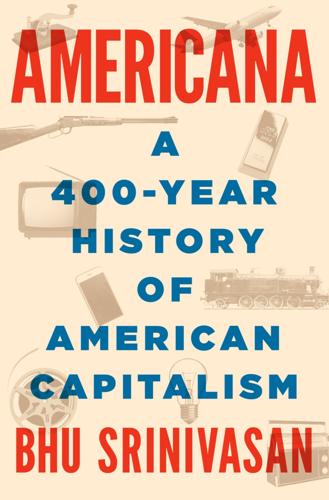
Americana: A 400-Year History of American Capitalism
by
Bhu Srinivasan
Published 25 Sep 2017
The rise of the perception that a large corporation was merely in the business of making money, rather than in any particular line of work, prepared the ground for the emergence of a hyperactive era of leveraged buyouts and corporate raiding. What did Warren Buffett know about chocolate or newspapers? If an acquisitive CEO of a large corporation could buy and hold a business that he knew nothing about, why couldn’t a smart entrepreneur like Icahn, with access to financing, also buy and hold a business he knew nothing about? It seemed that business principles were fairly universal and applicable across the board. This hypothesis would be tested. In the spring of 1985, the nation’s fifth-largest airline, TWA, found itself the target of such evolutionary changes in behavior.

Americana
by
Bhu Srinivasan
The rise of the perception that a large corporation was merely in the business of making money, rather than in any particular line of work, prepared the ground for the emergence of a hyperactive era of leveraged buyouts and corporate raiding. What did Warren Buffett know about chocolate or newspapers? If an acquisitive CEO of a large corporation could buy and hold a business that he knew nothing about, why couldn’t a smart entrepreneur like Icahn, with access to financing, also buy and hold a business he knew nothing about? It seemed that business principles were fairly universal and applicable across the board. This hypothesis would be tested. In the spring of 1985, the nation’s fifth-largest airline, TWA, found itself the target of such evolutionary changes in behavior.
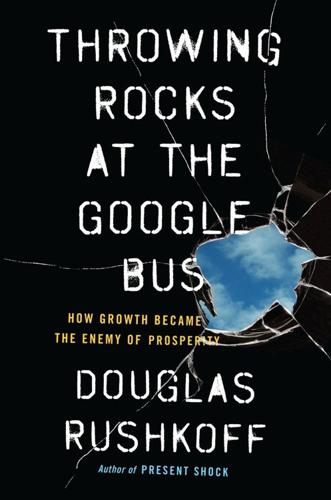
Throwing Rocks at the Google Bus: How Growth Became the Enemy of Prosperity
by
Douglas Rushkoff
Published 1 Mar 2016
Warren Buffett, one of the most conservative and successful investors of all time, invests primarily in dividend-paying stocks and holds them for a very long time. The top five companies in his Berkshire Hathaway fund—Wells Fargo, Coca-Cola, American Express, IBM, and Walmart—may not be the enterprises we want to support, but they all pay high dividends and increase their payouts regularly. These are stocks that literally pay you to buy and hold them. By refusing to sell a stock, you also avoid the taxes, commissions, and other frictional costs of a portfolio in constant turnover. Instead of profiting from the change in the price of the stock, you profit from the constant flow of revenue from the business itself. As Buffett puts it, “Our approach is very much profiting from lack of change rather than change.”73 You still have to be careful; some companies produce dividends in pretty abstract or destructive ways.
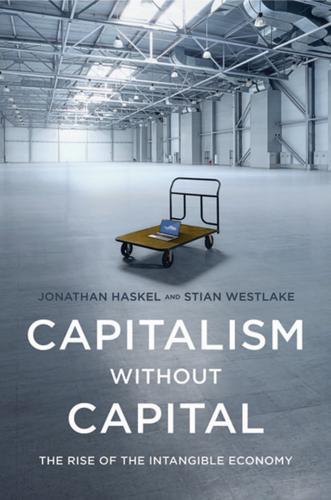
Capitalism Without Capital: The Rise of the Intangible Economy
by
Jonathan Haskel
and
Stian Westlake
Published 7 Nov 2017
Some of these tools may in time give rise to changes in financial accounting standards, so that public companies’ balance sheets better reflect their (by now mainly intangible) investments (Lev 2001; Lev and Gu 2016). Given that at least some intangible investments currently seem to be undervalued, there would for a time be the opportunity for funds to make excess returns by buying and holding stock in intangible-rich companies and supporting management plans for further intangible investment. We might also expect to see an increase in the number of large privately held companies, as certain companies with large blockholders decide the benefits of being public are exceeded by the disclosure cost—which, in an age of spillover-rich intangibles, may be higher.
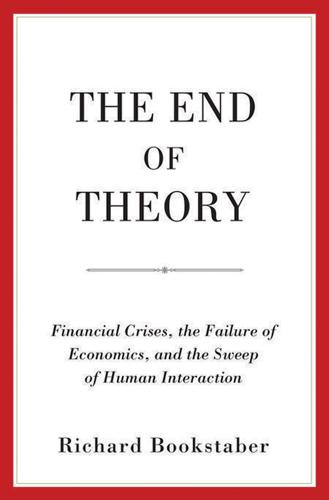
The End of Theory: Financial Crises, the Failure of Economics, and the Sweep of Human Interaction
by
Richard Bookstaber
Published 1 May 2017
First, the reforms that came out of the Basel Committee on Banking Supervision restrict the amount of leverage banks can carry. This reduces their capacity to act as market makers. Second, the Volcker Rule, which is part of the Dodd-Frank Act, reduces the incentives for the banks to provide market making. In times of crisis, you need the market makers to buy and hold positions until the liquidity suppliers come in. That is a pretty dicey proposition, because the risk of holding that inventory is very high. But before Volcker and Basel, the banks would do it, because they could make money by trading on their own account against the client flows. If they stepped away, they would find their clients less willing to trade with them when the dust settled, and so they would lose trading revenue down the road.
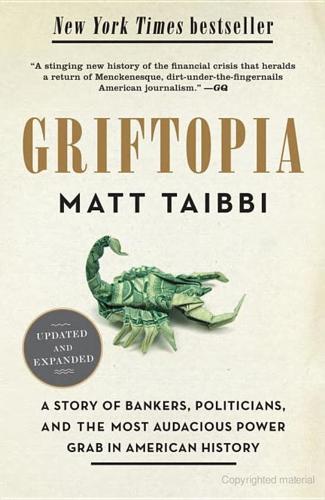
Griftopia: Bubble Machines, Vampire Squids, and the Long Con That Is Breaking America
by
Matt Taibbi
Published 15 Feb 2010
Since you don’t really need oil, and you’re just investing to make money, you have to continually sell your futures contracts and buy new ones in what amounts to a ridiculously overcomplex way of betting on the prices of oil and gas and cocoa and coffee. This process of selling this month’s futures and buying the next month’s futures is called rolling. Unlike shares of stock, which you can simply buy and hold, investing in commodities involves gazillions of these little transactions made over time. So you can’t really do it by yourself: you usually have to outsource all of this activity, typically to an investment bank, which makes fees handling this process every month. This is usually achieved through yet another kind of diabolical derivative transaction called a rate swap.

Market Sense and Nonsense
by
Jack D. Schwager
Published 5 Oct 2012
The annualized underperformance was substantial, ranging from 3 percent to 10 percent. The worst performance was for the shortest holding period (50 days), suggesting a strong bias for stocks to surrender their “Cramer bump” in the ensuing period. The bottom line seems to be that investors would be better off buying and holding an index than buying the Mad Money recommendations—although, admittedly, there is much less entertainment value in buying an index. I don’t mean to pick on Cramer. There is no intention to paint Cramer as a showman with no investment skill. On the contrary, according to an October 2005 BusinessWeek article, Cramer achieved a 24 percent net compounded return during his 14-year tenure as a hedge fund manager—a very impressive performance record.

Digital Bank: Strategies for Launching or Becoming a Digital Bank
by
Chris Skinner
Published 27 Aug 2013
If you don’t think that Google Analytics are the key to predictive, proactive marketing, just checkout the results of research of three academics who find that Google predicts stock market movements pretty accurately: “Debt” was the most reliable term for predicting market ups and downs, the researchers found. By going long when “debt” searches dropped and shorting the market when “debt” searches rose, the researchers were able to increase their hypothetical portfolio by 326 percent. (In comparison, a constant buy-and-hold strategy yielded just a 16 percent return.)[24] In the same way, banks can use transaction data combined with search trends and other data to predict and then proactively offer service in real time. That service might be offering car loans as a customer drives past the showroom of the BMW dealership they were Googling last night or mortgages as they drive towards the real estate office of the broker found via search this morning.

925 Ideas to Help You Save Money, Get Out of Debt and Retire a Millionaire So You Can Leave Your Mark on the World
by
Devin D. Thorpe
Published 25 Nov 2012
Owning individual stocks directly rather than through mutual funds can be fun—if you like that sort of thing. Generally speaking, individual investors will do less well picking their own stocks than professional fund managers or the stock market in general. If you want to own some stocks directly, limit those investments to a small portion of your total portfolio. Don’t trade too often. Buy and hold the investments for a long time. To achieve optimal diversification in your stock portfolio, try to own at least twelve different stocks from different sectors or industries. Skip bonds and buy funds that buy bonds. Owning bonds directly imposes a management burden and logistical problems that most individual investors are better off avoiding.
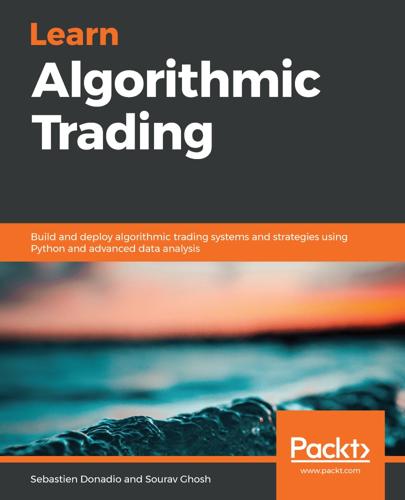
Learn Algorithmic Trading
by
Sebastien Donadio
Published 7 Nov 2019
Evolution of algorithmic trading – from rule-based to AI Let's take a simple example of a trend-following strategy and see how that has evolved from a manual approach all the way to a fully automated algorithmic trading strategy. Historically, human traders are used to having simple charting applications that can be used to detect when trends are starting or continuing. These can be simple rules, such as if a share rises 5% every day for a week, then it is something we should buy and hold (put on a long position), or if a share price has dropped 10% in 2 hours, then that is something we should sell short and wait for it to drop further. This would be a classic manual trading strategy in the past. As we discussed previously, computers are very good at following repetitive rule-based algorithms.

The Great Depression: A Diary
by
Benjamin Roth
,
James Ledbetter
and
Daniel B. Roth
Published 21 Jul 2009
All around him buildings were being torn down because the owners would rather lose their investment than be forced into bankruptcy by their inability to pay property tax. In the mid-thirties Roth begins to lay out an approach to investing based on controlling risk, maintaining liquidity, and protecting principle. Today, even casual investors are familiar with ways to describe the types of investment strategies toward which Roth gravitated: “value investing,” “buy and hold,” even “dollar-cost averaging.” But for Roth, these were not strategies to be bought off the rack; he had to build them himself—studiously, patiently, and, at least during the period covered by this book, entirely theoretically. He later regretted not having had the available cash to buy stocks when they hit historic lows and then recovered.
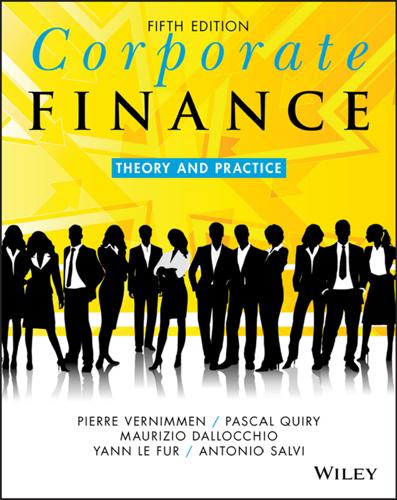
Corporate Finance: Theory and Practice
by
Pierre Vernimmen
,
Pascal Quiry
,
Maurizio Dallocchio
,
Yann le Fur
and
Antonio Salvi
Published 16 Oct 2017
The transaction usually consists in the issue of a bond (sometimes a loan) in dollars or euros with a fixed rate. These financings generally have a long maturity (seven to 15 years, with the bulk of the issue with a six- to seven-year maturity). Most investors keep their investment until maturity (buy and hold). As there is no liquidity constraint, the issues (or each tranche within an issue) can be of reduced size (compared to a standard bond issue). They are appealing for groups that are willing to diversify their financing sources and have access to long-term financing without the need for a rating.
…
A share’s liquidity is measured mainly in terms of free float, trade volumes and analyst coverage (number of analysts following the stock, quality and frequency of brokers’ notes). (a) Free float The free float is the proportion of shares available to purely financial investors, to buy when the price looks low and sell when it looks high. Free float does not include shares that are kept for other reasons, i.e. control, sentimental attachment or “buy and hold” strategies. Loyalty is (unfortunately) not a financial concept and a skyrocketing share price could make sellers out of loyal shareholders, thus widening the free float. Free float can be measured either in millions of euros or in percentage of total shares. (b) Volumes Liquidity is also measured in terms of volumes traded daily.
…
It should be considered as illustrative and does not reflect the reality or the exact state of the company. 2Assuming 100% payout and interest rates on debt at 6%. 3 Assuming tax consolidation treatment. 4 Pension funds, insurance companies, banks, sovereign wealth funds. 5 Just before the LBO market ground to a sudden halt. 6 For more, see Chapter 21. 7 Earnings before interest, taxes, depreciation and amortisation. For more, see Chapter 3. 8 See page 349. 9 Debt securities issued by a special purpose vehicle, which buys and holds bonds issued by corporations or banks (collateralised bond obligations) or bank loans (collateralised loan obligations). CDOs and CLOs provided liquidity for securities that weren't automatically liquid. It was used by banks to refinance themselves with investors wanting to take a risk on a debt portfolio. 10 Of small or medium size; Fives is an example. 11 See interview with Philippe Santini, “Managing a company under LBO”, The Vernimmen.com Newsletter, June 2007.
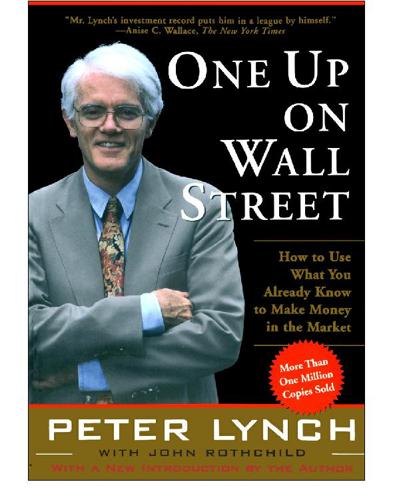
One Up on Wall Street
by
Peter Lynch
Published 11 May 2012
The period of conglomeration in the mid to late 1960s resulted in many major companies diworseifying, falling apart, and then not recovering for another fifteen years. Many have never come back, and others, such as Gulf and Western, ITT, and Ogden, have reemerged as turnarounds. There was a great love affair with high-quality blue chips in the 1970s. These were known as the “nifty fifty” or “the one decision” stocks that you could buy and hold forever. This brief serendipity of overrated and overpriced issues was followed by the devastating market decline of 1973–74 (the Dow hit 1050 in 1973 and had regressed all the way back to 578 in December, 1974) with blue chips falling 50 to 90 percent. The popular romance with small technology companies in mid-1982 to mid-1983 led to another collapse (60–98 percent) of the similarly beloved issues that could do no wrong.
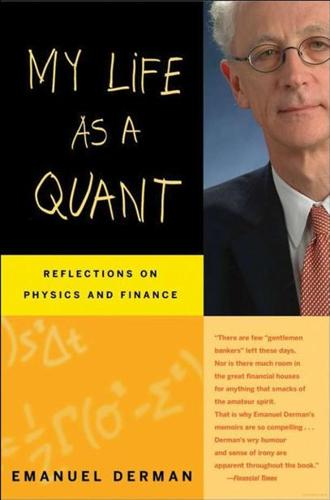
My Life as a Quant: Reflections on Physics and Finance
by
Emanuel Derman
Published 1 Jan 2004
In equity derivatives, the era of exotic options had begun. Exotics seemed the preferred way for investors in one country to gain just the exposure they wanted to the markets in another. Suppose you were an American investor who wanted to gain if the French stock market rose. In the old days you had to buy and hold a diverse collection of French stocks and face the detailed bother of tracking their prices in francs, collecting their dividends, converting them to dollars, paying income and capital gains tax; after all that, however, you were still exposed to the risk that the French franc might deteriorate against the dollar.

Superforecasting: The Art and Science of Prediction
by
Philip Tetlock
and
Dan Gardner
Published 14 Sep 2015
The reasons for that are complex and the subject of much research and debate, but it seems clear that at least some of it is due to traders overreacting to new information.11 Even John Maynard Keynes—he may not have said those famous words but he really did urge people to change their minds in light of changing facts—felt that “day-to-day fluctuations in the profits of existing investments, which are obviously of an ephemeral and nonsignificant character, tend to have an altogether excessive, and even an absurd, influence on the market.”12 “Many investors move from stock to stock or from mutual fund to mutual fund as if they were selecting and discarding cards in a game of gin rummy,” observed the Princeton economist Burton Malkiel.13 And they pay a price. Many studies have found that those who trade more frequently get worse returns than those who lean toward old-fashioned buy-and-hold strategies. Malkiel cited one study of sixty-six thousand American households over a five-year period in the 1990s when the market had a 17.9% annual return: households that traded the most had an annual return of only 11.4%.14 Massive time and effort went into those trades and yet the people who made them would have been better off if they had gone golfing.

Animal Spirits: How Human Psychology Drives the Economy, and Why It Matters for Global Capitalism
by
George A. Akerlof
and
Robert J. Shiller
Published 1 Jan 2009
They consider the probabilities of each of these options. And then they make a decision. But can we really do that? Do we really have a way to define what those probabilities and outcomes are? Or, on the contrary, are not business decisions—and even many of our own personal decisions about which assets to buy and hold—made much more on the basis of whether or not we have confidence? Do they not involve decision making processes that are closer to what we do when we flip a pancake or hit a golf ball? Many of the decisions we make—including some of the most important ones in our lives—are made because they “feel right.”
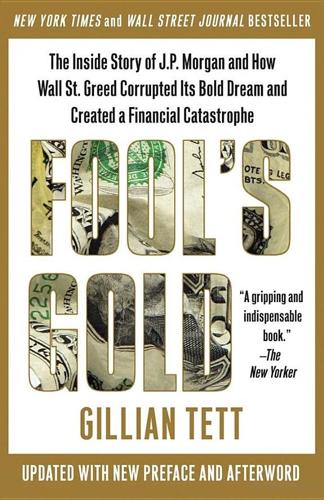
Fool's Gold: How the Bold Dream of a Small Tribe at J.P. Morgan Was Corrupted by Wall Street Greed and Unleashed a Catastrophe
by
Gillian Tett
Published 11 May 2009
In reality, it was easy, because working out the “true” value of the assets held by the funds was fiendishly difficult. Some of the securities the funds held were traded in the open market, so their prices could be tracked, but most CDO products still weren’t being traded. If the funds were pursuing a “buy and hold” strategy, buying assets and retaining them until they expired (usually five years), the lack of price information might not have mattered. But these were hedge funds, and a widespread convention in the hedge fund world dictated that funds give their investors regular reports on the so-called mark-to-market value of their assets.

The Truth Machine: The Blockchain and the Future of Everything
by
Paul Vigna
and
Michael J. Casey
Published 27 Feb 2018
Yet ICOs or token sales—call them what you want—can and will play a powerful role in reforming our capital markets. So, it’s encouraging to see that the investment community is starting to grow up around this provocative concept, developing higher standards. More and more professional investors are entering into the market and purportedly applying longer-term buy-and-hold strategies. They will hopefully foster fiduciary standards that hold issuers to account for objective assessments and for making disclosures and putting trusteeship control over the money they receive. If all this happens, the industry should start to look less like the Wild West. It may have to take some painful losses first, but that, too, could be cathartic.
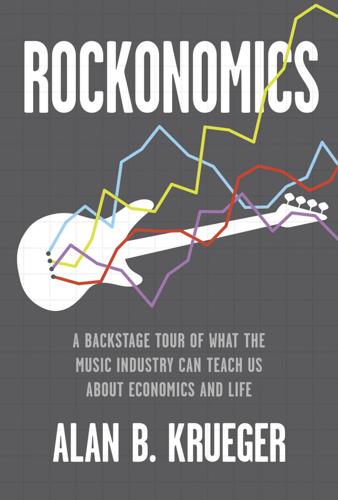
Rockonomics: A Backstage Tour of What the Music Industry Can Teach Us About Economics and Life
by
Alan B. Krueger
Published 3 Jun 2019
As investors, we tend to be overconfident, which means that we may know less than we think we know. Studies find that retail investors (especially men) tend to sell stocks that go on to outperform the market and tend to buy stocks that subsequently underperform the market.32 We also tend to trade too often. Buying and holding a diversified portfolio is a better strategy for most investors. Evidently we know less than we think we do when we’re buying and selling stocks. In any event, there is some common ground between a diversified portfolio and buying what we know. We can invest in what we know to diversify our portfolio and find a good balance between risk and reward.

Why Aren't They Shouting?: A Banker’s Tale of Change, Computers and Perpetual Crisis
by
Kevin Rodgers
Published 13 Jul 2016
The clients who deal FX use it to hedge cash flows coming from corporate activity or to offset the risk of holding assets in a foreign currency (like a UK investor holding US stocks) or, of course, to speculate. Although we did some business like this in Emerging Markets (I had been put into the team to be the FX specialist), the bulk of our client flow was from investors actually looking to go long – that is buy and hold on to – stocks or bonds. In this, they were simply following on from what they had been doing in Asia for a few years; the long-established Bankers Trust Asian Emerging Markets team were now our colleagues and the model for our new unit. Why did clients invest in these markets? The answer was to get much higher returns than in developed markets for – it was thought – very little extra risk.

Fixed: Why Personal Finance is Broken and How to Make it Work for Everyone
by
John Y. Campbell
and
Tarun Ramadorai
Published 25 Jul 2025
And when prices fall, they tend to lose faith and sell out at the worst possible moment—a depressing example of intermittent and emotional decision-making.22 These very human tendencies are open to exploitation by commissions-motivated stockbrokers and firms who are eager to sell high-priced stocks to overenthusiastic investors, thus fueling the cycle of boom and bust.23 The Iron Law of Active Investing Investing can seem like a competitive sport, but unlike most competitive sports, it offers every player the opportunity to obtain the average result simply by buying and holding a value-weighted index of all the assets that exist. Following this strategy is known as “passive investing,” and deviating from it is called “active investing.” Now, the average dollar invested by all players together earns exactly the return on the value-weighted index. This in turn means that every dollar some investor earns through active investing, some other active investor must lose a dollar—even before accounting for the transactions costs active investors must pay to trade, which amplify losses and reduce gains.

Irrational Exuberance: With a New Preface by the Author
by
Robert J. Shiller
Published 15 Feb 2000
My 1999 mail questionnaire survey of random samples of wealthy individuals in the United States showed that most people believe that stocks are the best investment for the long run.1 One of the questions on the survey, and the 1999 results from 147 respondents, were as follows: Do you agree with the following statement? “The stock market is the best investment for long-term holders, who can just buy and hold through the ups and downs of the market.” 1. Strongly agree 76% 2. Agree somewhat 20% 3. Neutral 2% 4. Disagree somewhat 1% 5. Strongly disagree 1% Agreement with this question is obviously very strong. Fully 96% of the respondents agreed at least somewhat in 1999. The percentage who agreed strongly in 1999 is also remarkably high, at 76%.

13 Bankers: The Wall Street Takeover and the Next Financial Meltdown
by
Simon Johnson
and
James Kwak
Published 29 Mar 2010
The result was a financial services industry dominated by one set of very large financial holding companies centered on a large commercial bank and another set of very large financial institutions not subject to prudential regulation.90 These megabanks, whether based downtown, in midtown, or in North Carolina, were the new Wall Street. * To create asset-backed securities, a new legal entity buys and holds some assets (such as mortgages) and then issues new bonds that are backed by those assets. So the assets behind asset-backed securities are in addition to the assets on the balance sheets of commercial and investment banks. * Depositing money in a savings account is the same as lending money to your bank; buying short-term commercial paper is lending money to a company; buying a Treasury bill is lending money to the U.S. government.

The Physics of Wall Street: A Brief History of Predicting the Unpredictable
by
James Owen Weatherall
Published 2 Jan 2013
When markets crash, however, these far-out-of-the-money put options can become very valuable indeed, with almost no initial cost. And if you know when the market is going to crash, you can walk away with enormous profits accrued over a very short time — just a few days, say — with relatively little risk. It sure beats buy-and-hold. The problem, of course, is predicting the unpredictable. Imagine inflating a balloon. You start with a limp piece of rubber. In this uninflated state, the balloon is stretchy and very difficult to tear. You could poke it and prod it any way you like, even with a very sharp knife, and unless you stretch the balloon out first, the knife is unlikely to puncture it.
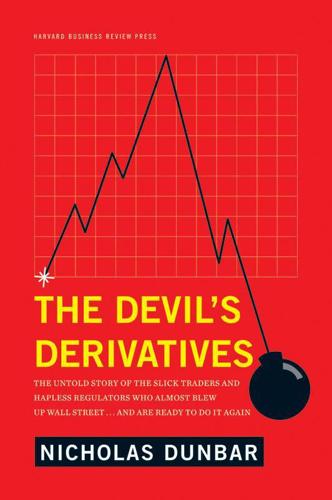
The Devil's Derivatives: The Untold Story of the Slick Traders and Hapless Regulators Who Almost Blew Up Wall Street . . . And Are Ready to Do It Again
by
Nicholas Dunbar
Published 11 Jul 2011
I saw another side of this at the end of 2001, when I interviewed a UBS credit portfolio risk manager. Her job was to hedge loans that UBS made to clients in order to win investment banking business, and she did so by buying default swap protection from J.P. Morgan. The old actuarial versus market approach dilemma came up in our conversation. With the prevailing buy-and-hold, portfolio-based approach to lending, safety in numbers kept the interest payments earned on loans low. In other words, the money that UBS had coming in was typically lower than the market-based premium that the bank would have to pay out for J.P. Morgan default swap protection. This is what bankers call a negative basis trade.
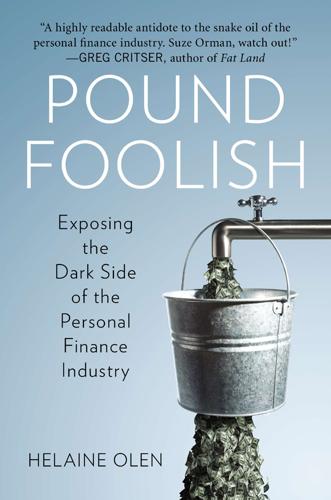
Pound Foolish: Exposing the Dark Side of the Personal Finance Industry
by
Helaine Olen
Published 27 Dec 2012
We believed it when experts told us we too could become the millionaire next door if we saved and invested just right, whether that was the right mix of asset classes and stock picks or the perfect undervalued house that, with a fresh coat of paint and a couple of other inexpensive fixes, could be quickly flipped at a profit. But it all came down to the same thing. Buy stocks! Buy houses! Buy and hold, my friends! Time the markets! Seize the financial day! But the ability of the vast majority of people to seize the financial day was increasingly constrained by a third trend: our salaries were not, for the most part, keeping up with the rest of the economy. Buffeted at first by inflation, and then by the slowly widening chasm between the top tier of earners and the rest of us, we were stagnating.
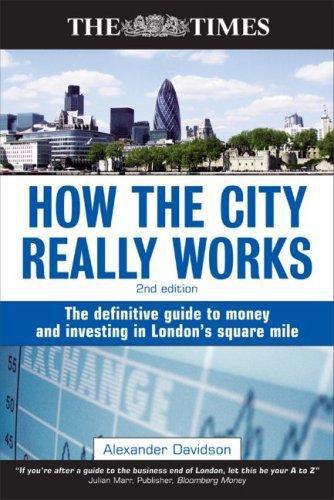
How the City Really Works: The Definitive Guide to Money and Investing in London's Square Mile
by
Alexander Davidson
Published 1 Apr 2008
If the free float is small, meaning that the shares are tightly held by company directors and few are available to the public, demand may quickly exceed supply and the share price may soar. Institutional investors who bought shares during the IPO process may snatch a profit by selling the shares early in the first days or weeks of secondarymarket trading. Such ‘flipping’ is often the best way to make money quickly from new issues, contrary to the buy-and-hold strategy often recommended to retail investors. The book runner may welcome some flipping from favoured institutional investors because it needs liquidity to establish value in the shares and to meet the demands of buyers. After a few weeks the shares are likely to lose their initial momentum and, at least for a period, to slip below the offer price.
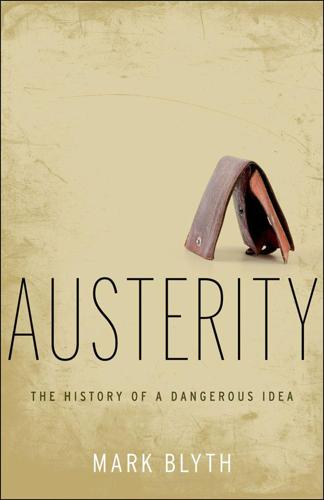
Austerity: The History of a Dangerous Idea
by
Mark Blyth
Published 24 Apr 2013
Rather than simply rely on passive correlations that are out there in the world to ensure your safety, such as the inverse relationship that typically prevails between the USD and the euro, banks can adopt particular strategies, or trade derivative instruments with specific characteristics, so that the gains from one set of exposures covers (hedges) any losses in another.23 In principle then, a combination of portfolio diversification and hedging—if appropriately executed in a given market environment—will at the very least keep your investments safe. Think the market will go down? Short sell one asset (profit from a stock price falling by borrowing the stock for a fee, selling it, and then buying it back when its cheaper), and take a long position (buy and hold) in an uncorrelated asset as cover. Want to benefit from the market going up? Use options (the right to buy or sell an asset at a predetermined price) to increase leverage (amplify the bet) while taking a short position as cover. But if this is all it takes to be safe, and to perhaps even make money, why did the banks not see the crisis coming?
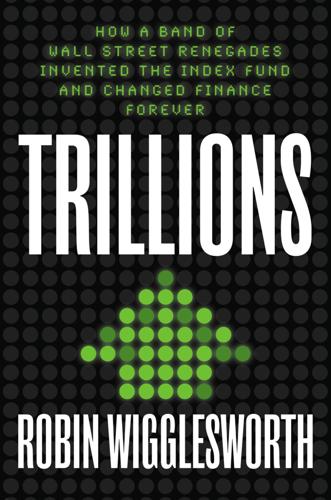
Trillions: How a Band of Wall Street Renegades Invented the Index Fund and Changed Finance Forever
by
Robin Wigglesworth
Published 11 Oct 2021
Working with the assembled academic rock stars was humbling even to McQuown, whom no one would describe as particularly shy. “It was an education and a half, holy mackerel,” he reminisces. Scholes and Black proved pivotal. Scholes had already started consulting for Wells Fargo, and in the summer of 1968 he recommended that the bank set up some kind of passive investment vehicle that would buy and hold a slice of the entire stock market. McQuown was interested, but wanted more in-depth research into the potential tradeoffs and pitfalls. Although Scholes was just twenty-seven at the time, he was already an assistant professor at MIT, and could devote only a few days a week to the project. So he asked Black—whom he had recently met for the first time after being introduced by fellow Chicago grad Michael Jensen—if he could help.6 It proved the beginning of an exceptionally fertile collaboration.

Unfinished Business
by
Tamim Bayoumi
As securitization led to an increasingly national mortgage market during the 1990s, however, changes in regional house prices became more coherent, a switch that later created the national housing bubble of the 2000s. To ensure that the market for mortgage-backed securities stayed liquid, Fannie and Freddie had always kept some of their own securities on the books. Over time, however, they increasingly used their ability to borrow money at favorable rates to buy and hold mortgage-backed securities issued by banks.3 Since their understanding of the mortgage market allowed them to hedge the resulting interest rate and duration risks, they were able to make money for their private investors. Over the financial crisis, however, it was the losses from defaults on their holdings of higher paying but riskier “private label” securitizations that forced the thinly capitalized Fannie and Freddie into receivership.
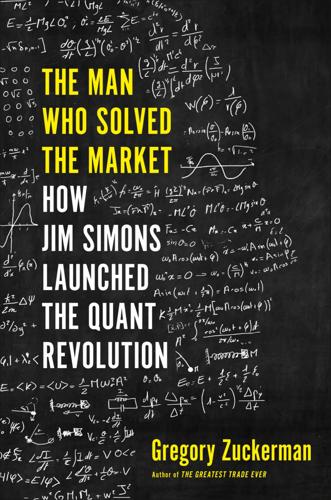
The Man Who Solved the Market: How Jim Simons Launched the Quant Revolution
by
Gregory Zuckerman
Published 5 Nov 2019
The Renaissance team was curious by nature, as were many of its investors. They couldn’t help wonder what the heck was going on. If Medallion was emerging as a big winner in most of its trades, who was on the other side suffering steady losses? Over time, Simons came to the conclusion that the losers probably weren’t those who trade infrequently, such as buy-and-hold individual investors, or even the “treasurer of a multinational corporation,” who adjusts her portfolio of foreign currencies every once in a while to suit her company’s needs, as Simons told his investors. Instead, it seemed Renaissance was exploiting the foibles and faults of fellow speculators, both big and small.
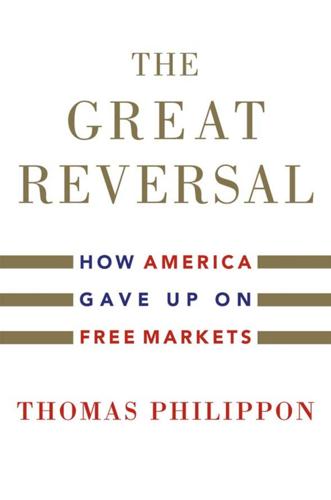
The Great Reversal: How America Gave Up on Free Markets
by
Thomas Philippon
Published 29 Oct 2019
Technological development of the past forty years should have disproportionately increased efficiency in the finance industry. How is it possible for today’s finance industry not to be significantly more efficient than the finance industry of John Pierpont Morgan? Information technologies (IT) must have lowered the transaction costs of buying and holding financial assets. An apt analogy is with retail and wholesale trade. After all, retail banking and retail trade both provide intermediation services. As we discussed in Chapter 2, the retail and wholesale industries invested in IT. They became more productive, and their prices went down. The contrast is striking with finance.
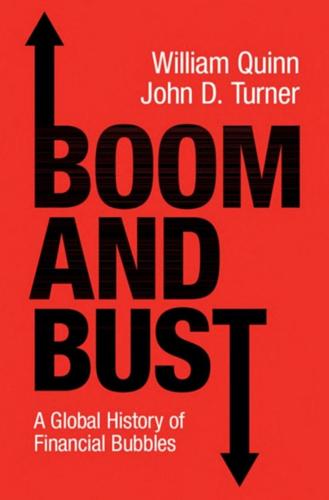
Boom and Bust: A Global History of Financial Bubbles
by
William Quinn
and
John D. Turner
Published 5 Aug 2020
A 1983 change in tax law allowed companies to separate long-term stock holdings from short-term investments, with the latter placed into a separate investment fund called a tokkin. After 1983, the returns on the tokkin fund were taxed at a lower rate, creating the unusual situation in which speculation could be a less expensive investment strategy than buy-and-hold. As a result, the number of stocks in tokkin funds exploded from under ¥2 trillion in 1983 to ¥30 trillion in 1987. At the same time, 140 JAPAN IN THE 1980S 3,500 3,000 2,500 2,000 1,500 1,000 500 93 19 n Ja n 19 92 91 19 Ja 90 n 19 Ja 89 n 19 Ja 88 19 n Ja 87 19 n Ja 86 n Ja 85 Ja n 19 84 Ja n 19 19 83 Ja n 19 82 Ja n 19 81 Ja n 19 n Ja Ja n 19 80 0 Figure 8.2 TOPIX daily index of Japanese stocks, 1980–9323 the Bank of International Settlements announced that it would allow Japanese banks to count 45 per cent of their unrealised capital gains on stocks towards fulfilling capital requirements.24 This was spectacularly misguided, encouraging banks not only to replace safe assets with risky equities, but to use their considerable market power and lending capacity to stimulate a stock market boom.

You've Been Played: How Corporations, Governments, and Schools Use Games to Control Us All
by
Adrian Hon
Published 14 Sep 2022
Retail investors have had access to the slot machine of the stock market for decades, but until recently, that slot machine was stuck at home on their desktop computer, it had a longer approval process, it was harder to play, you needed a larger stake, and most people didn’t talk about it. No doubt some Robinhood users have discovered the attractions of comparatively safe long-term investing via index funds thanks to the app’s simplified interface. But Robinhood’s vision of the stock market they want to democratise isn’t a world of buy-and-hold but a world of nonstop trading where leverage is easy to obtain and fortunes are to be made and lost in hours and minutes. Users trading Dogecoin cryptocurrency alone contributed a whopping 6 percent of the company’s entire revenue during the first quarter of 2021. To Robinhood, the stock market is a game, and they want everyone to play.57 Since Robinhood offers commission-free trading, it uses another way to make money called “payment for order flow” (PFOF).58 This mechanism is not especially unusual, but because PFOF means Robinhood gets paid whenever a user makes a trade, the company is strongly incentivised to encourage its users to make as many trades as possible.59 Perhaps this is why the secretary of the Commonwealth of Massachusetts charged Robinhood for the “use of strategies such as gamification to encourage and entice continuous and repetitive use of its trading application” in late 2020.60 Robinhood and gamification have been linked many times, and one of the most influential was in a memo for members of the House Financial Services Committee preceding their February 2021 hearing.61 The reason for the hearing?
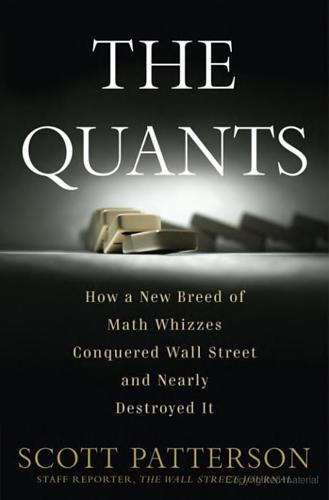
The Quants
by
Scott Patterson
Published 2 Feb 2010
Most of the trades were “bespoke,” custom-designed between two trading parties like a tailored London suit. “Credit derivatives basically give our customers exactly what they need,” Tanemura added. “And we supply it.” Weinstein soaked it up like a sponge with his photographic memory—and soon realized that the CDS market wasn’t about buy and hold until the bond matured, it was about the perception of default. Traders didn’t need to wait around for a company to blow up. A trader who purchased a swap on GM for $1 million could potentially sell the swap to another trader later on for, say, $2 million, simply on the perception that GM’s fate had worsened.
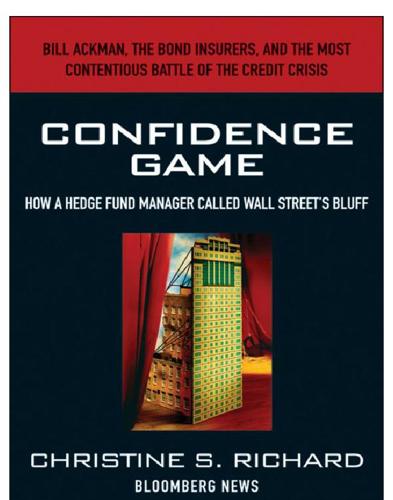
Confidence Game: How a Hedge Fund Manager Called Wall Street's Bluff
by
Christine S. Richard
Published 26 Apr 2010
If the banks get nervous about Farmer Mac’s financial position, Ackman said, they might exercise their put options en masse rather than risk losing the protection if Farmer Mac fails. That would leave Farmer Mac with the obligation to fund the purchase of a huge portfolio of loans in a short period of time. Without the resources to buy and hold the loans, Farmer Mac might be forced to sell the loans in a short period of time, leading to likely losses. “It wouldn’t take much of a discount to wipe out Farmer Mac’s equity,” Ackman said. “That’s how risk turns into catastrophe.” Also disturbing and worth noting, Ackman said, was that the program transferred risk from the Farm Credit Banks to Farmer Mac, even though the banks carry 10 times more capital than Farmer Mac.
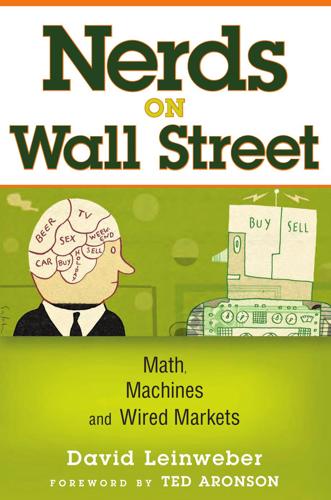
Nerds on Wall Street: Math, Machines and Wired Markets
by
David J. Leinweber
Published 31 Dec 2008
Faster is clearly better, and some stocks have very few stories, so the combined news set is helpful on average. The results of simulated trading on those language model signals are compared to random digital coin-toss simulated trading. Despite a clearly bone-headed trading strategy that churned the portfolio, grabbed small profits, included no transaction costs, and made no comparison with passive buy and hold, their results are intriguing. Compared to the random coin-toss trading decisions, the trades based on the news classifications resulted in profit statistically significant at the 1 percent level. In many ways, this is a classic example of a data-mined strategy. It is classified and titled by the authors as a data mining study, so they were aware of this, but clearly not sufficiently aware to realize that after so many visits to the out-of-sample period it effectively becomes in-sample.

The Everything Store: Jeff Bezos and the Age of Amazon
by
Brad Stone
Published 14 Oct 2013
The company said that over two million third-party sellers worldwide used Amazon Marketplace and that they sold 40 percent more products in 2012 than in 2011.11 The Marketplace business is a profitable one for the company, since it takes a flat 6 to 15 percent commission on each sale and does not bear the expense of buying and holding the inventory. Some of the retailers who sell via the Amazon Marketplace seem to have a schizophrenic relationship with the company, particularly if they have no unique and sustainable selling point, such as an exclusive on a particular product. Amazon closely monitors what they sell, notices any briskly selling items, and often starts selling those products itself.

Heaven Is a Place on Earth: Searching for an American Utopia
by
Adrian Shirk
Published 15 Mar 2022
They stopped by Koinonia to visit a couple of friends who were living there at the time. The Fullers’ intention was just to have lunch. They ended up staying for five years. Later they started a program that operated out of Koinonia called Houses for Humanity, which allowed the organization to buy and hold land in partnership with poor or impoverished families in the immediate rural area surrounding Americus, and in doing so significantly aided in building up Black land and homeownership. This enterprise became the basis for Habitat for Humanity. Eventually, the Fullers’ worldwide vision didn’t fit with the very localized vision of close, intimate Christian community that Clarence Jordan was building in Sumter County.
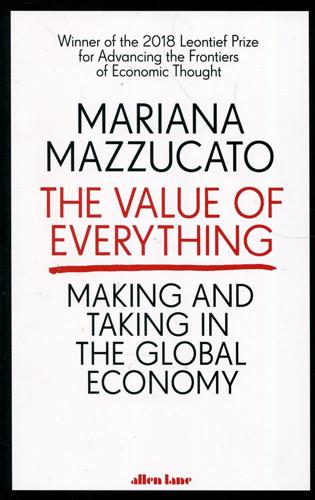
Value of Everything: An Antidote to Chaos The
by
Mariana Mazzucato
Published 25 Apr 2018
PE funds and acquisition vehicles led the pack of new, value-hungry investors that now assailed the world's stock markets. PE is MSV turbo-charged. Many of the companies in which PE firms invest are not financial ones; often, indeed, they can be found on the productive side of the production boundary. But whereas traditional institutional investors were often satisfied to ‘buy and hold', and to await share price gains via profit being reinvested rather than paid out, PE seeks to buy and resell at a higher price within a few years. What this means is that many firms owned by PE funds are pushed into taking a significantly shorter-term view than they might have done otherwise - the exact reverse of ‘patient capital' and raising productivity to benefit society in the long run.
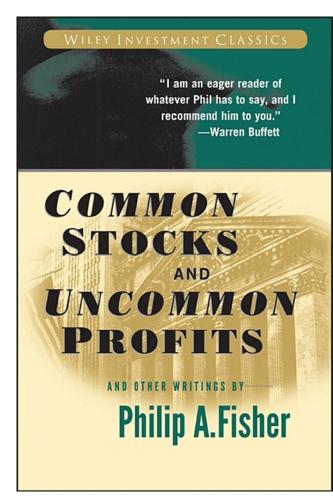
Common Stocks and Uncommon Profits and Other Writings
by
Philip A. Fisher
Published 13 Apr 2015
Fisher did, as his largest personal holding, all the while it was trouncing the Standard & Poor's 500. And that is and was what Phil Fisher was all about. Finding a very few great companies that he could really know and holding them for a long, long, long time while those very stocks appreciated phenomenally. Conservative Investors Sleep Well is simply the best treatise I know on how to buy and hold growth stocks without tak-ing much risk. You could get that, certainly, from either book, his first or his third. The two in many ways are intellectually linked at the bod-ies, separated by sixteen years. Still, if you only read one, read Common Stocks. It offers more, is more radical for its time, is better written, is more timeless, covers more turf, and is more intellectual.
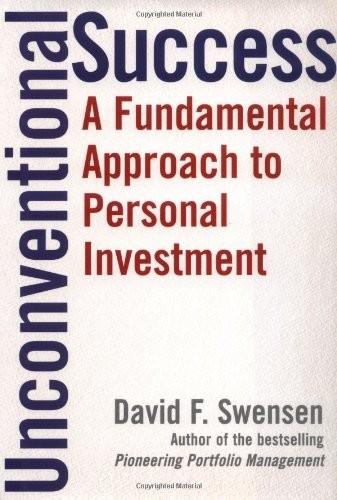
Unconventional Success: A Fundamental Approach to Personal Investment
by
David F. Swensen
Published 8 Aug 2005
Regardless of the cause, if history provides a guide to the future, bond investors can expect more bad news than good on credit conditions. Liquidity Liquidity of corporate bond issues pales in comparison to the liquidity of U.S. Treasuries, which trade in the deepest, most liquid market in the world. Most corporate issues tend to trade infrequently, as many holders buy bonds at the initial offering and sock them away, pursuing buy-and-hold strategies. Yet bond investors value liquidity highly. Compare U.S. Treasury issues and Private Export Funding Corporation (PEFCO) bonds. Even though both bonds enjoy full-faith-and-credit backing of the U.S. government, the less liquid PEFCO bonds trade at prices that produce yields of as much as 0.6 percent per annum higher than comparable-maturity Treasuries.
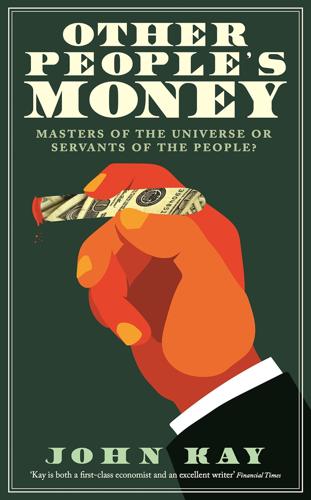
Other People's Money: Masters of the Universe or Servants of the People?
by
John Kay
Published 2 Sep 2015
The persuasive rationale of passive management was that most active management was not worth what it cost; the motivation of savers in seeking passive funds is to secure better value for money, not to minimise tracking error, and tracking error is a measure of risk for fund managers, not investors. A passive fund that buys and holds a well-considered selection of stocks achieves the same goal as an index fund, probably more effectively – and avoids the problem, evident on the London Stock Exchange, in which companies of doubtful reputation seek listings in order to force holders of passive funds to buy their stock. There should be more managed intermediation.
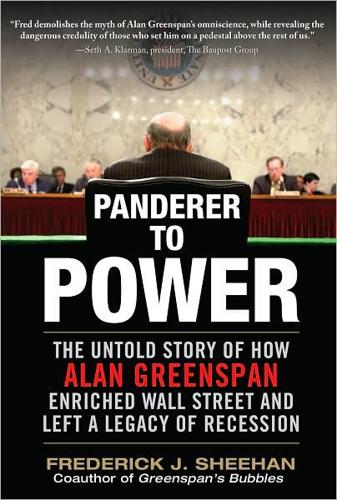
Panderer to Power
by
Frederick Sheehan
Published 21 Oct 2009
Their models showed that a bundle of subprime loans, when combined and overcollateralized, were among the most creditworthy securities: AAA. It was important for a security to be awarded a very high rating, since, among other reasons, a big chunk of mortgage securities are sold to large institutions that will buy (and hold) only securities above a certain grade. The bank must acquire a rating for the securities from an independent party. The credit-rating agencies—S&P, Moody’s, and Fitch—were paid by the banks to rate the securities created from bundling the mortgages. Often the quants, geeks, and nerds at the agencies found themselves in agreement with the banks’ model makers.
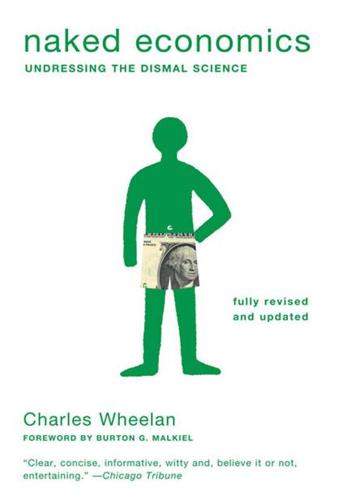
Naked Economics: Undressing the Dismal Science (Fully Revised and Updated)
by
Charles Wheelan
Published 18 Apr 2010
(Burton Malkiel has pointed out that since diversification is important, the monkey should actually throw a wet towel at the stock pages.) Indeed, investors now have access to their own monkey with a towel: index funds. Index funds are mutual funds that do not purport to pick winners. Instead, they buy and hold a predetermined basket of stocks, such as the S&P 500, the index that comprises America’s largest five hundred companies. Since the S&P 500 is a broad market average, we would expect half of America’s actively managed mutual funds to perform better, and half to perform worse. But that is before expenses.

Finance and the Good Society
by
Robert J. Shiller
Published 1 Jan 2012
The funds they manage are of many di erent types and legal forms, with names like “mutual funds,” “unit investment trusts,” “exchange-traded funds,” “hedge funds,” or “private equity funds.” In this chapter we lump the managers of all these di erent kinds of funds together according to their common purpose: they determine the composition of portfolios of investments on behalf of their clients and buy and hold those portfolios for those clients, the ultimate investors. These managers provide many services to the investors who entrust their money to them, including such routine services as safekeeping of securities; spreading out investments into broadly diversi ed portfolios; recordkeeping; and minimizing the tax impact of investments in consideration of the client’s particular tax status.

Capitalism 4.0: The Birth of a New Economy in the Aftermath of Crisis
by
Anatole Kaletsky
Published 22 Jun 2010
In the absence of such government action, the normal balance of power between long-term investors and speculative short sellers was reversed. Normally, long-term investors such as pension funds, insurance companies, and Sovereign Wealth Funds are regarded in financial markets as the “strong hands” because they can afford to buy and hold their shares for long periods, betting on improvements in economic conditions that may take years to materialize. By contrast, speculative short sellers are playing with borrowed assets, looking for rapid gains and at risk of sudden liquidation if prices move against them. In the new conditions Paulson created with his GSE seizure, this calculation was reversed.

Blockchain Revolution: How the Technology Behind Bitcoin Is Changing Money, Business, and the World
by
Don Tapscott
and
Alex Tapscott
Published 9 May 2016
For large institutions that want ready liquidity with the guarantee of a small return on their cash equivalents, so-called risk-free investments such as money market funds or Treasury bills will do the trick. Individuals need not rely on banks as the primary stores of value or as providers of savings and checking accounts, and institutions will have a more efficient mechanism to buy and hold risk-free financial assets. 4. Lending Value: From household mortgages to T-bills, financial institutions facilitate the issuance of credit such as credit card debt, mortgages, corporate bonds, municipal bonds, government bonds, and asset-backed securities. The lending business has spawned a number of ancillary industries that perform credit checks, credit scores, and credit ratings.

No One Would Listen: A True Financial Thriller
by
Harry Markopolos
Published 1 Mar 2010
I had handed over evidence proving that companies had stolen billions of dollars from investors, and the SEC had responded that it was okay—the companies were not going to do it again. In one instance, one of the nation’s five largest mutual fund companies had monthly turnover percentages in its international equity funds in the 1,100 to 1,300 percent range per month! Now, there is absolutely no way on earth that those were legitimate trades done by honest buy-and-hold long-term investors. But these SEC enforcement attorneys couldn’t have cared less. I was told by a high-ranking enforcement official at the SEC in Washington, D.C., in these words: “We’re done with market timing. The industry has gotten the message.” Even worse, one of my cases involved a midlevel whistleblower at a bank-owned mutual fund subsidiary that was allowing a few hedge funds to trade its mutual funds after hours, a felony known as late trading.
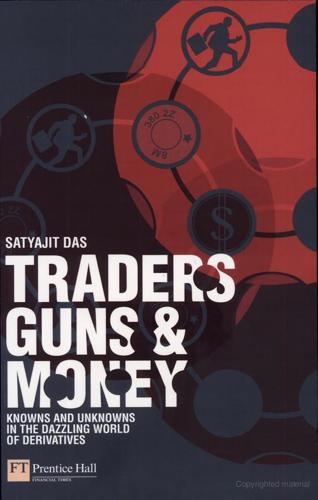
Traders, Guns & Money: Knowns and Unknowns in the Dazzling World of Derivatives
by
Satyajit Das
Published 15 Nov 2006
You agree to pay any losses if the share price falls; you also particularly ‘evil’. agree to pay the dealer its cost of funding the shares plus a nice profit margin. DAS_C04.QXP 8/7/06 4:51 PM Page 247 8 N S h a re a n d s h a re a l i k e – d e r i v a t i v e i n e q u i t y 247 The total return swap gives you 100% leverage. You don’t need to have any money to create the equivalent of actually buying and holding the shares. In practice, unless you are LTCM you can’t get 100% leverage. You need to put up a ‘margin’ – usually, 10–20%. You need to put up with a mere 80–90% leverage. You can do this with anything, especially shares. These are equity swaps. Equity swaps and deep-in-the money options are standard tricks of the equity derivative trade.

The Age of Cryptocurrency: How Bitcoin and Digital Money Are Challenging the Global Economic Order
by
Paul Vigna
and
Michael J. Casey
Published 27 Jan 2015
Critics such as Boston University economist Mark Williams, a strong skeptic of bitcoin’s prospects, see these gains in a negative light. In a scathing presentation to the New York Department of Financial Services, Williams said it was a sign of “extreme hoarding” that will deny bitcoin the possibility of ever becoming a “useful transactional currency.” But its proponents say you can’t stop enthusiasts from buying and holding bitcoin and that this investment mind-set is part of an unavoidable, indeed necessary, transitional phase. “I wouldn’t say hoarding is a bad thing,” says BTC China CEO Bobby Lee, who has witnessed the intense speculative approach to bitcoin of Chinese investors. “Once its price has risen far enough and bitcoin has proven itself as a store of value, then people will start to use it as a currency.”
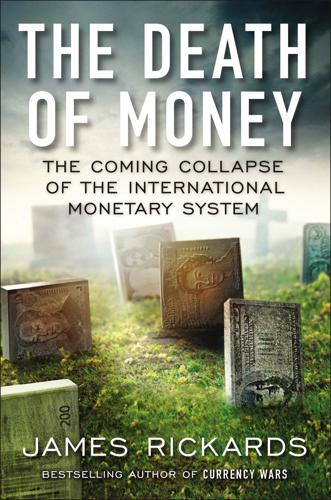
The Death of Money: The Coming Collapse of the International Monetary System
by
James Rickards
Published 7 Apr 2014
On the whole, a portfolio of 20 percent gold, 20 percent land, 10 percent fine art, 20 percent alternative funds, and 30 percent cash should offer an optimal combination of wealth preservation under conditions of inflation, deflation, and social unrest, while providing high risk-adjusted returns and reasonable liquidity. But no portfolio intended to achieve these goals works for the “buy-and-hold” investor. This portfolio must be actively managed. As indications and warnings become more pronounced, and as greater visibility is offered on certain outcomes, the portfolio must be modified in sensible ways. If gold reaches $9,000 per ounce, there may then come a time to sell gold and acquire more land.

The Euro: How a Common Currency Threatens the Future of Europe
by
Joseph E. Stiglitz
and
Alex Hyde-White
Published 24 Oct 2016
But the weakening of the fiscal position of the government weakened confidence in the banks. At the same time, the weakening of the government’s fiscal position meant it could only borrow at a high interest rate. Many investors were not willing to lend at all. To keep interest rates on government bonds from soaring even further, Spanish banks had to buy and hold on to large amounts of government debt. The decline in the price of Spanish government bonds then meant a worsening of Spanish banks’ balance sheets. To an outsider, it was apparent that what was going on was a bootstrap operation: banks lent the government money (typically, by buying government bonds), and the government guaranteed the banks, allowing them to get access to money from markets at lower rates—so long as the government guarantee had much worth—and to lend some of that money to the government.

How I Became a Quant: Insights From 25 of Wall Street's Elite
by
Richard R. Lindsey
and
Barry Schachter
Published 30 Jun 2007
After the model’s completion I took the time to read Richard Sweeney’s paper titled “Beating the Foreign Exchange Markets,”2 where I was to discover that (and I paraphrase) virtually any simple filter-rule model (essentially buying x percent above the local high and selling x percent below the local low; randomly varying the x to get more models) is capable of dominating buy-and-hold hedging strategies, such as hedging through the use of options, forwards, or futures over virtually any five-year period. The basic reason for this effect was not that filter rule models are somehow magically efficient, but rather that the underlying exchange rates exhibit significant serial correlation.

Shutdown: How COVID Shook the World's Economy
by
Adam Tooze
Published 15 Nov 2021
Its public finances had long been under scrutiny, and on March 27, Moody’s, the last of the major ratings agencies, downgraded its debt to junk status.40 The rand sold off hard. Nevertheless, the South African central bank proceeded to cut interest rates to support the domestic economy. Rather than panicking, investors both at home and abroad continued to buy and hold South Africa’s debt. Overcoming a taboo that had prevailed since the end of apartheid, the ANC government approached the IMF for a concessional loan of $4.3 billion, which was promptly granted.41 Whatever financial medicine South Africa would be required to take would come later. For now, the problem was not finance, but the devastating impact on South Africa’s already fragile economy of the drastic measures taken to counter the spread of the virus.
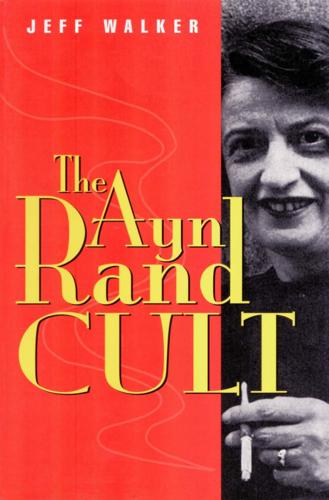
Ayn Rand Cult
by
Jeff Walker
Published 30 Dec 1998
O’Connor’s marriage to Rand endured, if just barely, because it was fine with him that she wore the pants in the family. His nature was such that he didn’t need to dominate anyone, least of all his wife. In the movies he never got to play more than a supporting role, and it was the same in his real-life marriage. His financial contribution to the marriage consisted mainly in his urging Ayn to buy and hold onto the ranch house he found in California’s San Fernando Valley, which escalated significantly in value over the years. In a journal entry in June 1945, Rand specifies three categories of “strikers” in what would become Atlas Shrugged. She cites Frank as an example of one type: the “gifted men” who “function in some field other than their proper one and produce only enough for their own sustenance, refusing to let the world benefit from their surplus energy.”

The Hour of Fate
by
Susan Berfield
The military moved into the cities, subdued the streets, and took control of the railroads and mines. Pierpont assessed the credit risk. The Baltimore & Ohio’s losses required it to take on longer-term debt, which he knew would be a hard sell. Instead, he and Junius organized a banking syndicate to buy and hold the railroad’s bonds until circumstances changed. “Affairs for a time37 looked very critical and gave me much anxiety for many days and nights,” Pierpont told one of his father’s partners that August. It took years to sell all the bonds. More than one hundred thousand workers around the country protested that summer of 1877.

A First-Class Catastrophe: The Road to Black Monday, the Worst Day in Wall Street History
by
Diana B. Henriques
Published 18 Sep 2017
worked into the night making telephone calls: Kristin McMurran, “When Joe Granville Speaks, Small Wonder That the Market Yo-Yos and Tickers Fibrillate,” People, April 6, 1981. His message to those elite followers: Granville was a middling stock picker over the long run, but he was fair at calling overall market turns. According to Mark Hulbert, who tracked investment newsletters as the editor of The Hulbert Financial Digest, his calls only slightly underperformed a buy-and-hold index fund from 1980 to 2005. See Drew, “Joseph E. Granville, Stock Market Predictor, Dies at 90”; and Baesel, Shows, and Thorp, “Can Joe Granville Time the Market?” The Dow ended down almost 24 points: Alexander R. Hammer, “Stocks Decline Sharply as Trading Soars to Record,” New York Times, January 8, 1981, p. 1.
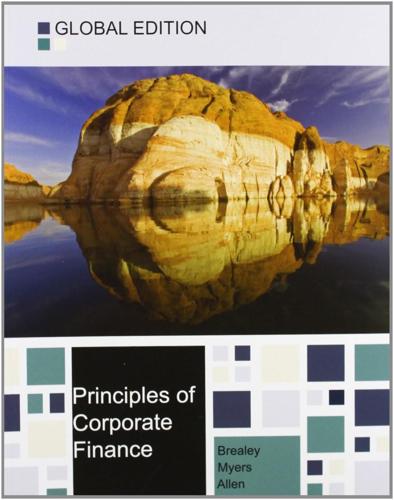
Principles of Corporate Finance
by
Richard A. Brealey
,
Stewart C. Myers
and
Franklin Allen
Published 15 Feb 2014
For example, Professor Richard Roll, who probably knows as much as anyone about market anomalies, confesses Over the past decade, I have attempted to exploit many of the seemingly most promising “inefficiencies” by actually trading significant amounts of money according to a trading rule suggested by the “inefficiencies” . . . I have never yet found one that worked in practice, in the sense that it returned more after cost than a buy-and-hold strategy.12 Do Investors Respond Slowly to New Information? We have dwelt on the small-firm effect, but there is no shortage of other puzzles and anomalies. Some of them relate to the short-term behavior of stock prices. For example, returns appear to be higher in January than in other months, they seem to be lower on a Monday than on other days of the week, and most of the daily return comes at the beginning and end of the day.
…
If idle time is likely before a new lessee is found, then lease rates have to be higher to compensate.12 In an operating lease, the lessor absorbs these risks, not the lessee. The discount rate used by the lessor must include a premium sufficient to compensate its shareholders for the risks of buying and holding the leased asset. In other words, Acme’s 7% real discount rate must cover the risks of investing in stretch limos. (As we see in the next section, risk bearing in financial leases is fundamentally different.) BEYOND THE PAGE ● ● ● ● ● Try It! Leasing spreadsheets brealey.mhhe.com/c25 Lease or Buy?
…
They are conglomerates because they create a portfolio of companies in unrelated industries. They are temporary because the partnership has a limited life, usually about 10 years. At the end of this period, the partnership’s investments must be sold or taken public again in IPOs. Private-equity funds do not buy and hold; they buy, fix, and sell. Investors in the partnership therefore do not have to worry about wasteful reinvestment of free cash flow. The private-equity market has been growing steadily. In contrast to these temporary conglomerates, public conglomerates have been declining in the United States.

Handbook of Modeling High-Frequency Data in Finance
by
Frederi G. Viens
,
Maria C. Mariani
and
Ionut Florescu
Published 20 Dec 2011
Part of the problem of the studies during the 1960s was the ad hoc specifications of the trading rules that led to spurious patterns in the data. Specification of rules retroactively may have led to biased studies. Allen and Karjalainen (1999) found profitable trading rules using genetic algorithms for the S&P500 with daily prices from 1928 to 1995. However, these rules were not consistently better than a buy-and-hold strategy in the out-of-sample test periods. At present, many academics, banks, and hedge funds are exploring the application of machine learning methods to find patterns in financial time series. Lo et al. (2000), who used nonparametric kernel regression for technical pattern recognition of a large number of stocks for the period 1962–1996, found that 3.4 Earnings Prediction and Algorithmic Trading 65 technical indicators provide incremental information for investors comparing the unconditional empirical distribution of daily stock returns to the conditional distribution on specific technical indicators such as head and shoulders.

The Fissured Workplace
by
David Weil
Published 17 Feb 2014
This made BlackRock the largest shareholder in one in five U.S. corporations, and Fidelity and Vanguard the largest owners in about one in ten U.S. corporations.9 The scale of assets managed by companies like BlackRock, Vanguard, and Fidelity, the fungibility of those assets, and the large number of alternative investments available to fund managers together breed little patience for low performance for stocks of a given risk level. Institutional investors increased the volatility in ownership of companies and the sensitivity of managers to changes in company valuations.10 For example, mutual funds seldom buy and hold stocks, but rather buy and sell them frequently. In 2011 average weighted stock turnover in fund portfolios was 52% each year (a number somewhat below the almost forty-year average turnover rate of 58%).11 Money flowing into publicly traded companies from mutual funds is therefore “impatient” and moves frequently in search of better returns for a given level of risk.12 Other institutional investors, such as public pension systems like CALPERS, hedge funds, and insurance companies, utilize the growing range of instruments for investment and therefore play directly (through their clout in the market) and indirectly (through their daily trading activity) an equally aggressive role in the life of the companies held (or potentially held) by them.13 The Private Equity Model The rise of private equity firms also played a growing role in forcing restructuring of leading businesses.14 The number and value of deals from private equity firms expanded dramatically in the years before the 2008 recession.

Animal Spirits: The American Pursuit of Vitality From Camp Meeting to Wall Street
by
Jackson Lears
Amid the feverish fluctuations of the market, the clerical economists produced warmed-over versions of Adam Smith, with the same emphasis on steady work leading to gradual betterment and the same inattention to finance capital. To the extent they acknowledged the possibility of investing in the stock market, they implicitly advised buying and holding sound assets and waiting for dividend checks. But mostly they papered over the vagaries of the market with the rhetoric of Protestant morality. And when panic struck, they contented themselves with conventional denunciations of speculators. The brittleness of clerical economic thought portended moral and intellectual fault lines in the evangelical rationalist consensus.

The Quiet Coup: Neoliberalism and the Looting of America
by
Mehrsa Baradaran
Published 7 May 2024
Even as he lost his millions in the subsequent months as the value of Dogecoin plummeted, Contessoto not only refused to sell but purchased more, posting a screenshot of his cryptocurrency trading app to Reddit and stating, “If I can hodl, you can HODL!” (The crypto and NFT communities embrace a dogmatic version of “buy and hold” encapsulated in the slogan “hold on for dear life” or “hodl.”) In June 2022, Contessoto wrote that his investment was worth only $230,000, down from a high of $3 million, and still falling. Although he regretted not taking out some when he had the chance, he wrote that “the big thing was being a part of the Dogecoin community.
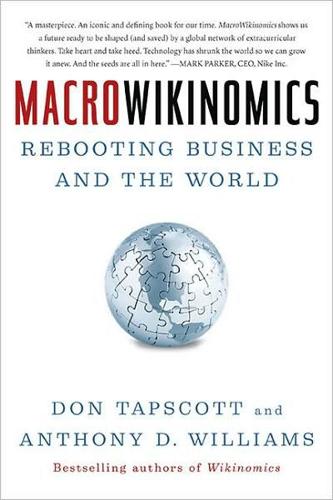
MacroWikinomics: Rebooting Business and the World
by
Don Tapscott
and
Anthony D. Williams
Published 28 Sep 2010
Building the “cost” of these vital ecological services into everything from the pricing of assets to our measures of productivity and growth is one of many options for redressing the imbalances. The longer unsustainable practices continue, the greater the threats to the essential foundations of our economy. Firms are dependent on their employees to work productively; on customers to buy their products; on investors to buy and hold their stock; and on government to provide human, legal, and physical infrastructures for economic development. All of these people and institutions, in turn, are collectively dependent on the shared resources and services provided by the natural environment. If a financial crisis makes the point, a potential global meltdown of our environmental ecosystems does so a thousand times stronger: on an increasingly interdependent planet, no organization can succeed in a world that is failing.
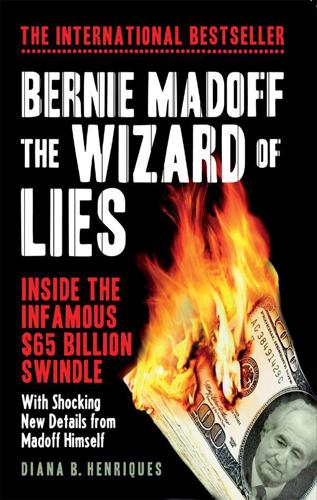
Bernie Madoff, the Wizard of Lies: Inside the Infamous $65 Billion Swindle
by
Diana B. Henriques
Published 1 Aug 2011
And perhaps, in those early days of the first true feeder funds, they were right. The accounts Chais set up with Madoff for his own family were not arbitrage accounts; those accounts allegedly bought shares in strong, promising companies and then held on to them for years, or even decades. When Madoff’s account records were examined after his arrest, these Chais family “buy-and-hold” accounts were found to have performed far better than the formal arbitrage partnerships Chais set up for outside investors. Lawsuits would later assert that by 2008 there were a number of odd errors in many Chais accounts. Stocks had been bought or sold on dates when the markets were closed, or at prices that were outside the stocks’ range on those dates.

A Generation of Sociopaths: How the Baby Boomers Betrayed America
by
Bruce Cannon Gibney
Published 7 Mar 2017
And so it was, before the Boomers took over. Most Americans with moderate talent and ambition could find a good job, buy a home, and invest their savings in the Standard & Poor’s 500, and in doing so, accumulate enough for a comfortable retirement. But proper jobs are increasingly hard to find, and buying and holding the S&P 500 today (which is to say, making a long-term bet on America) doesn’t seem like a sure path to Happily Ever After. Thanks to perpetual financial crisis, you can’t even expect a real, positive return on cash in the bank. Again, why? My first attempt to answer these sorts of questions came in a 2011 essay, “What Happened to the Future?”

Manias, Panics and Crashes: A History of Financial Crises, Sixth Edition
by
Kindleberger, Charles P.
and
Robert Z., Aliber
Published 9 Aug 2011
The sharp increases in the prices of gold and silver in the late 1970s were a bubble, but the increases in the price of crude petroleum in the same years were not; the distinction is that many of the buyers of gold and silver in that tumultuous and inflationary decade anticipated that the prices of both precious metals would continue to increase and that profits could be made from buying and holding these commodities for relatively short periods. In contrast many of the buyers of petroleum were concerned that the disruptions in oil supplies due to actions of the cartel and the war in the Persian Gulf would lead to shortages and increases in prices. Ponzi finance, chain letters, pyramid schemes, manias, and bubbles Ponzi finance, chain letters, bubbles, pyramid schemes, finance, and manias are somewhat overlapping terms for non-sustainable patterns of financial behavior, in that asset prices today are not consistent with asset prices at distant future dates.

More Money Than God: Hedge Funds and the Making of a New Elite
by
Sebastian Mallaby
Published 9 Jun 2010
As Michael Steinhardt had discovered in the 1970s, a big sell order from a pension fund could push a stock’s price out of line; provided that there was no information behind the sale—that is, provided that the pension fund was selling because it needed cash rather than because it was reacting to bad news—Steinhardt could profit by buying and holding the stock until it rose back to its previous level. Morgan Stanley’s Analytical Proprietary Trading unit aimed to beat Steinhardt at this game. To identify price moves that were not based on information, a team of quants sorted stocks into pairs: Ford’s movements tended to track those of GM, American Airlines tracked United Airlines, International Paper tracked Georgia-Pacific, and so on.
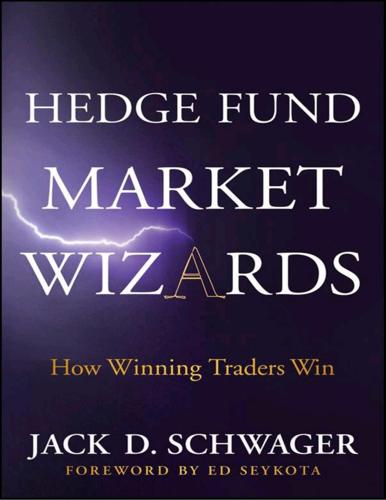
Hedge Fund Market Wizards
by
Jack D. Schwager
Published 24 Apr 2012
Over time, value is roughly the way the market prices stocks, but over the short term, which sometimes can be as long as two or three years, there are periods when it doesn’t work. And that is a very good thing. The fact that our value approach doesn’t work over periods of time is precisely the reason why it continues to work over the long term. Our formula forces you to buy out-of-favor companies, stocks that no one who reads a newspaper would think of buying, and hold a portfolio consisting of these stocks that, at times, may underperform the market for as long as two or three years. Most people can’t stick with a strategy like that. After one or two years of underperformance, and usually less, they will abandon the strategy, probably switching to a strategy that has done well in recent years.
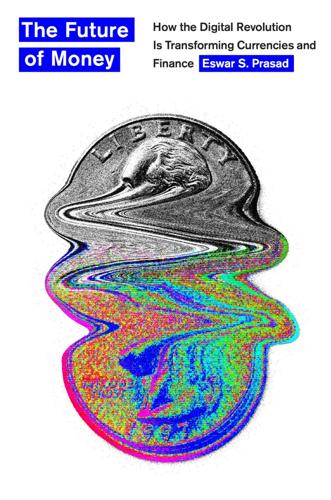
The Future of Money: How the Digital Revolution Is Transforming Currencies and Finance
by
Eswar S. Prasad
Published 27 Sep 2021
Another such online advisor, Wealthfront, was set up in 2008 and soon hired Burton Malkiel, a Princeton University finance professor, as its chief investment officer. Malkiel’s influential 1973 book, A Random Walk down Wall Street, launched the passive investing revolution four decades ago. His basic thesis was that the typical investor would be better off buying and holding low-cost index funds rather than trading in individual securities or investing in actively managed index funds. There might be some gains to undertaking a carefully crafted set of investments in other financial assets, but high fees and trading costs would render any gains in returns modest at best.
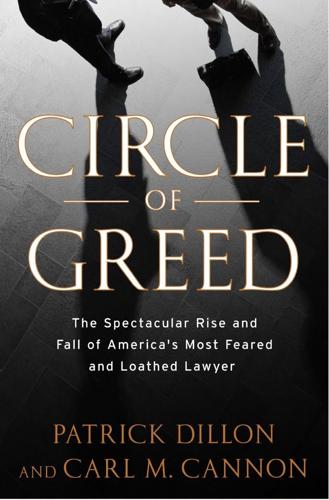
Circle of Greed: The Spectacular Rise and Fall of the Lawyer Who Brought Corporate America to Its Knees
by
Patrick Dillon
and
Carl M. Cannon
Published 2 Mar 2010
Pacific Time, the news arrived. The high court ruled 5–3 against the Stoneridge petitioners. Writing for the majority, as he had in Central Bank, Justice Kennedy ruled that investors were not entitled to damages because they did not rely on the statements of the two accused companies when they chose to buy and hold the Charter stock.* “Absolutely ridiculous,” Lerach hissed, when Darren Robbins, a young partner at the firm where Lerach’s name had recently been removed, called to get his take on the decision. “Of course they didn’t rely on their statements; there were no statements. They relied on Charter’s fraud!”
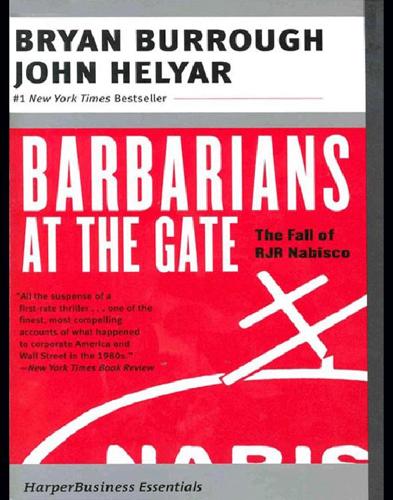
Barbarians at the Gate: The Fall of RJR Nabisco
by
Bryan Burrough
and
John Helyar
Published 1 Jan 1990
They went through it again and again until, after an hour, Gutfreund placed a call to one of Salomon’s most influential directors, Warren Buffett. Buffett was renowned as one of Wall Street’s most intelligent investors. His prognostications could move markets, and often did. He wasn’t a quick-buck artist—no raiding for Warren Buffett. Buffett invested the old-fashioned way: buy and hold. He had bought a 12 percent holding in Salomon the previous fall, rescuing Gutfreund from the hostile overtures of Ron Perelman. When Buffett came on the line, Gutfreund put him on a speaker phone and laid out the situation in detail. What should they do? Go for it, Buffett advised. Once one of RJR’s largest shareholders, he knew tobacco and liked it.

Hard Landing
by
Thomas Petzinger
and
Thomas Petzinger Jr.
Published 1 Jan 1995
As the computers on Wall Street calculated the soaring value of the pieces, savvy traders began snapping up shares at the parent company’s depressed price. As the buying spread, the price of Allegis shares began creeping higher, causing individual investors to bail out with their profits and the professional speculators and money funds to jump in. The buy-and-hold crowd was giving way to the get-rich-quick crowd. And the United pilots were getting nervous. Rick Dubinsky, the strike committee chairman in the 1985 pilots’ walkout, first discussed taking control of United Airlines over several glasses of wine on the night he had been elected chairman of the pilots’ organization.
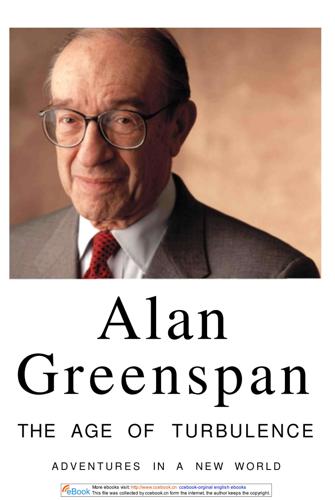
The Age of Turbulence: Adventures in a New World (Hardback) - Common
by
Alan Greenspan
Published 14 Jun 2007
Successful investing is difficult. Some of history's most successful investors, such as my friend Warren Buffett, were early to understand the now well-documented anomaly that the rate of return on stocks, even adjusted for risk, exceeds that on less-risky bonds and other debt instruments, provided one is willing to buy and hold equities for the very long run. "My favorite holding period is forever," said Buffett in an interview. The market pays a premium to those willing to endure the angst of watching their net worth fluctuate beyond what Wall Streeters call the "sleeping point." The lessons of stock-market investing apply to the forecasting of whole economies.

Coastal California
by
Lonely Planet
No varietal captures imaginations like the fruit of the cabernet sauvignon vine – Bordeaux is the French equivalent – and no wine fetches a higher price. Napa farmers can’t afford not to grow cabernet. Other heat-loving varietals, such as sangiovese and merlot, also thrive here. Napa’s wines merit their reputation among the world’s finest – complex, with luxurious finishes. Napa wineries sell many ‘buy-and-hold’ wines, versus Sonoma’s ‘drink-now’ wines. Artesa Winery WINERY ( 707-224-1668; www.artesawinery.com; 1345 Henry Rd; nonreserve/reserve tastings $10/15; 10am-4:30pm) Begin or end the day with a glass of bubbly or pinot at Artesa, southwest of Napa. Built into a mountainside, the ultramodern Barcelona-style architecture is stunning, and you can’t beat the top-of-the-world vistas over San Pablo Bay.

Coastal California Travel Guide
by
Lonely Planet
Napa farmers can’t afford not to grow Cabernet, and Chardonnay, which flourishes in the calcium-rich soil of cooler areas of the valley, is second. Other varietals such as Merlot and Zinfandel also thrive here. Napa’s wines merit their reputation among the world’s finest – complex, with luxurious finishes. Napa wineries sell many ‘buy-and-hold’ wines, versus Sonoma’s ‘drink-now’ wines. oHess CollectionWINERY, GALLERY ( GOOGLE MAP ; %707-255-1144; www.hesscollection.com; 4411 Redwood Rd, Napa; museum free, tasting $25 & $35, tours free; h10am-5:30pm, last tasting 5pm)S Art-lovers: don’t miss Hess Collection, whose galleries display mixed-media and large-canvas works, including pieces by Francis Bacon and Robert Motherwell.

Northern California Travel Guide
by
Lonely Planet
Napa farmers can’t afford not to grow Cabernet, and Chardonnay, which flourishes in the calcium-rich soil of cooler areas of the valley, is second. Other varietals such as Merlot and Zinfandel also thrive here. Napa’s wines merit their reputation among the world’s finest – complex, with luxurious finishes. Napa wineries sell many ‘buy-and-hold’ wines, versus Sonoma’s ‘drink-now’ wines. oHess CollectionWINERY, GALLERY ( GOOGLE MAP ; %707-255-1144; www.hesscollection.com; 4411 Redwood Rd, Napa; museum free, tasting $25 & $35, tours free; h10am-5:30pm, last tasting 5pm)S Art-lovers: don’t miss Hess Collection, whose galleries display mixed-media and large-canvas works, including pieces by Francis Bacon and Robert Motherwell.
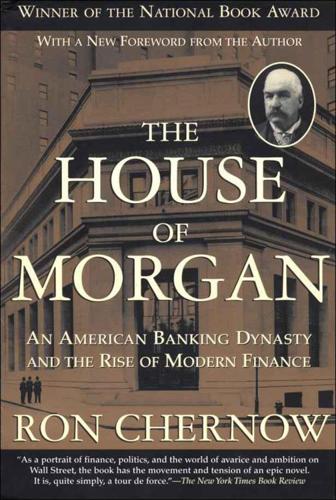
The House of Morgan: An American Banking Dynasty and the Rise of Modern Finance
by
Ron Chernow
Published 1 Jan 1990
“When we led the parade there, then everybody else wanted us.”4 In the early 1960s, the Morgan Trust Department operated from a wood-paneled room with antique furniture, facing the New York Stock Exchange. Forty impeccably dressed managers in dark suits and black shoes sat in leather armchairs before glossy rolltop desks. Invoking Pierpont Morgan’s philosophy, Hinton initiated the gospel of buy and hold. When a corporate director asked for a policy statement, he replied, “It’s easy. We don’t have one. We never sell stocks.”5 Hinton had more flexibility than he conceded and was a cagey manager. At meetings with portfolio managers, he would call on Peter Ver-milye, the resident bull, if he wished to buy stocks; if he wished to sell, he favored Homer Cochran, a durable bear.
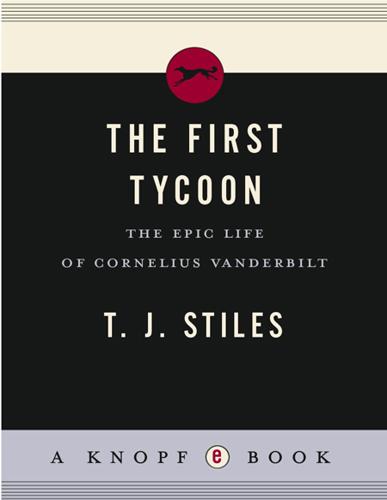
The First Tycoon
by
T.J. Stiles
Published 14 Aug 2009
Davidson wrote to Corning on January 24. Vanderbilt, he recorded, had been out “on the road” driving his fast horses, “& said that he had instructed Wm never to notice any communications from Keep, that he was unworthy of notice, etc., etc.” Tellingly, Vanderbilt advised his horse-racing friends to buy and hold Central stock.111 “Keep is cursed by all parties,” Davidson wrote to Corning the next day. “The swearing against him by the stockholders is terrible. They talk of getting up a meeting requesting him to resign. This man, Mr. Corning, is a bad one, for the interests of your road. He has a worse reputation than Vanderbilt.

California
by
Sara Benson
Published 15 Oct 2010
Some wineries used expensive equipment to filter the juice, but others – particularly those that pride themselves on not manipulating the grapes, plus those that couldn’t afford the machinery – chose not to. As you sample that year’s wines, see if you can taste the smoke. Our guess is prices will be lower on 2008 vintages. If you’re at a loss for what to talk about at the tasting bar, this is one hot topic. * * * Napa wineries sell a lot of ‘buy and hold’ wines (versus Sonoma’s ‘drink now’ varieties). With the odd exception, they’re pricy. To defray costs, look for the free-tasting coupons available at hotels, concierge desks and visitors centers. Many of the valley’s 230 wineries are small, and because of strict county-zoning laws, some cannot legally receive drop-in visitors; unless you’ve come strictly to buy, not taste, you’ll have to call first.